Shira M. Biner, Kelly Fields, and Heather B. Smallpage have done a new 550m big-wall route on Eglinton Tower’s buttress on Baffin Island, Canada. This marks the first route of its length and difficulty (5.11+ A0) by an all-female team on Baffin Island. The group included Natalie Afonina.

The daunting buttress rose approximately 893m above their Base Camp, with a challenging headwall that appeared nearly unclimbable from below. Over 12 long pitches and one cold bivouac, they summited of the first tower, only to discover a hidden 300m headwall leading to the true summit. Prioritizing safety and limited by food and energy, the team celebrated their milestone and made an 11-hour descent. The route included a tension traverse to avoid dangerous runout moves, but the climbers noted it could go free with one or two bolts.
Kelly Fields shared a personal reflection on her social media: “The summit was never my goal — surviving the ominous headwall was. I climbed with a respiratory infection and debilitating blisters, driven by a lifelong dream. Nothing and no one was going to stop me.”
She highlighted the team’s grit, climbing together for the first time and tackling an “insanely difficult and dangerous objective” in good style.
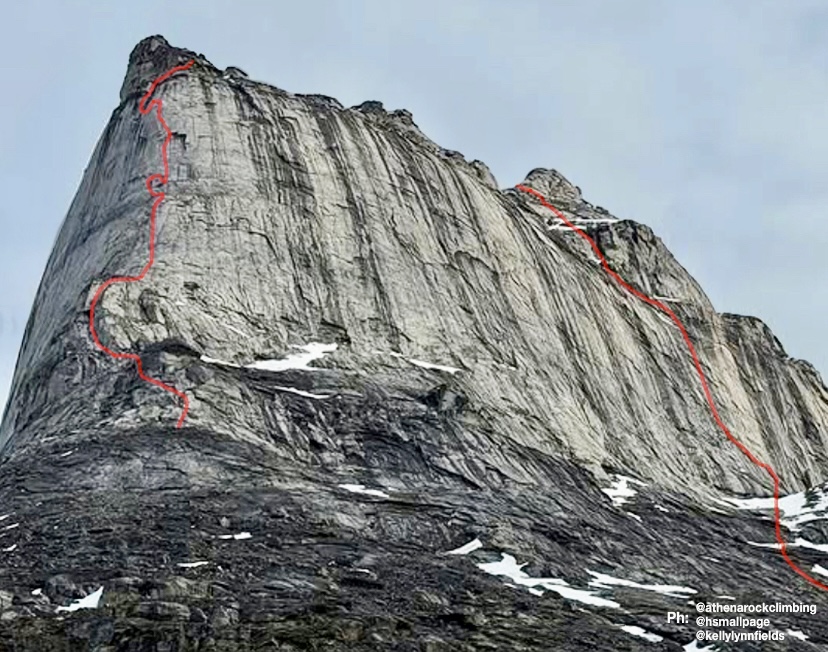
A long approach
The expedition included 250km of skiing on sea ice, paddling the Kogalu River, and trekking through Ayr Pass.
Eglinton Tower (933m) lies in remote Auyuittuq National Park's Weasel Valley, near other prominent Arctic peaks like Mount Thor and Mount Asgard. According to the American Alpine Journal, its first recorded ascent was in 1934, by British climbers John Hanham and Tom Longstaff. That ascent was part of early exploratory mountaineering in Baffin Island, focusing on peak bagging rather than technical big-wall routes. The climb marked the tower as one of the earliest summited peaks in the region. However, it’s not a frequently climbed peak, due to its remoteness.
Italians Dario Eynard, David Bacci, Giacomo Meliffi, and Enrico Bittelli are off to open a new route in Canada's Cirque of the Unclimbables. This cluster of remote, vertical granite walls is, in the words of Pat Goodman for the American Alpine Journal, actually very climbable. The walls offer excellent rock, incredible atmosphere, several levels of difficulty, and near-endless potential new lines for those who don't mind a long trip and isolation.
Cirque of the Unclimbables, Canada. Photo: Dario Eynard
An adventurous return
After the climb, the Italians will paddle down the Nahanni River for roughly 500km in packrafts. They are carrying the inflatable boats folded into their backpacks.
This ingenious means of transportation is an increasingly popular choice for exploratory climbing expeditions to remote areas. Packrafts are light, portable, sturdy, easy to navigate, and eco-friendly, as the boats are human-powered.
It is not clear exactly how the climbers will reach the MacKenzie Mountains, roughly 500km west of the city of Yellowknife in Canada's Northwest Territories. Usually, climbing teams charter an aircraft from Whitehorse to Glacier Lake and then hike for around seven hours.
The team during a packraft training session. Photo: Dario Eynard
A pure approach
A 1995 expedition to the area by Stefan Glowacz, Kurt Albert, Gerd Heidorn, and Leo Reitzner inspired the Italian team. The 1995 German expedition had opted for a "purer" approach to the massif, without the use of aircraft. They combined paddling in canoes with hiking sections. Here is a summary of that expedition published by the American Alpine Journal:
"[The team] parked their rental car at Flat Lakes, near the Tungsten Mine in Yukon Territory, then paddled canoes down the Little and South Nahanni rivers to the confluence of Brintnell Creek for approximately 80 miles [129km], before setting off on another 13 miles [21km] of rugged foot travel. Their exit strategy would be to follow the overland path back to the South Nahanni River, where they would paddle another 250 miles [402km] to reach the Liard River. While in the Cirque, they established Fitzcarraldo (V 5.12b) on the north pillar of Mt. Harrison Smith, thus becoming the first group of modern climbers to eschew air support to open a big-wall route in the Cirque of the Unclimbables. Yet their loads included many pounds of bolts -- they placed 50 on the 16-pitch route."
Meteora is a complex of imposing dark rocks, rising over the settlements of Kalampaka and the picturesque Kastraki village, on the plain of Thessaly, Greece. There are approximately 900 multi-pitch climbing routes in the Meteora towers. The texture of the rocks, the fairytale setting, and the fact that every route ends at the top of an outstanding tower make climbing in Meteora a peculiar experience.

Meteora's rocks and climbing style
Meteora's rock texture consists of a combination of pebbles, cobbles, and large rocks attached to a cement-like sandstone and cobblestone rock surface. Shallow holes are often encountered as a result of pebble detachment. When first climbing here, the texture can make the rock feel unstable, especially on downhill pebbles. But gradually, you will learn that the rock is stable.
The slope and the size of the pebbles determine the grade of the routes. Most of the routes are balanced, emphasize technique, and include delicate movements without the need for particularly athletic skills. High grades are considered exceptions. The main traits of the routes are their mixture of slab-based trad and sport climbing.

A look back in time
The first climbing records from the Meteora towers trace back to the 10th century, when the first ascetics in the region arrived and settled in the natural hollows of the rocks. The ascetics used scaffolding, nets, and wind ladders for these ascents.
Heinz Lothar Stutte and Dietrich Hasse's 1975 climbs mark the beginning of modern climbing in Meteora.
By 1985, climbers had established more than 200 routes, and the region had grown popular among climbers and adventurers. Amongst the early Greek climbers, Aris Mitronatsios stands out. Throughout the 1990s, the local climbing community made a significant contribution, establishing new routes and accomplishing challenging repeats. They followed the ethics of ground-up bolting, but installed more bolts than usual because of the difficulty of the routes. A typical example was two young climbers from Kastraki -- Christos Batalogiannis and Vangelis Batsios -- who made a decisive contribution to the opening of several now classic routes. Action Direct, Orchidea, and Crazy Dancing stand out among them.
By the end of the decade, the local climbing community had grown significantly, with Nikos Gazos and Nikos Theodorou playing an important role in the development of climbing in the region.
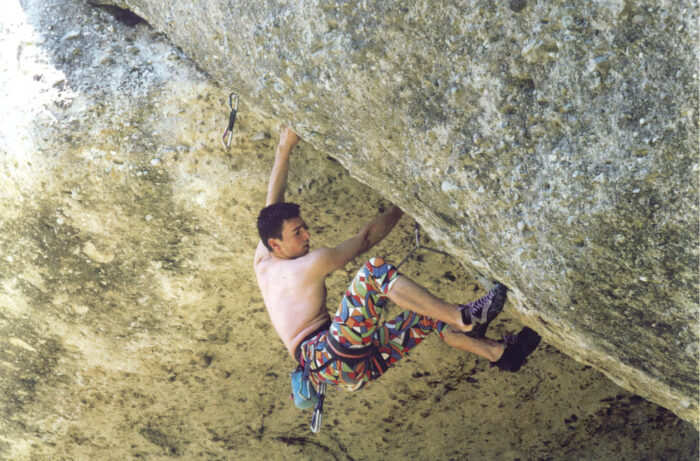
Today, Meteora is a global climbing destination. The Panhellenic Climbing Meeting, for instance, has been held in Meteora since 1988 under the umbrella of the Mountaineering and Climbing Federation, in association with the Kalambaka Municipality and the Kalambaka Climbing Club. This three-day event constitutes a major celebration of climbing each year.
How is it possible?
The giant towers of Meteora are mysterious. One can't help but wonder how people built monasteries on these summits centuries ago, when climbing them can be problematic even for today's sophisticated climbers. How, then, did the monks, shepherds, and hunters climb to these summits?
Based on findings from past ascents, researchers believe they started up the vertical sections by driving wooden or iron stakes into the rock. Then, they balanced a wooden ladder upon the stakes, climbed the ladder, wedged more stakes into the rock, and in the end pulled the ladder up to the new stakes, starting again.
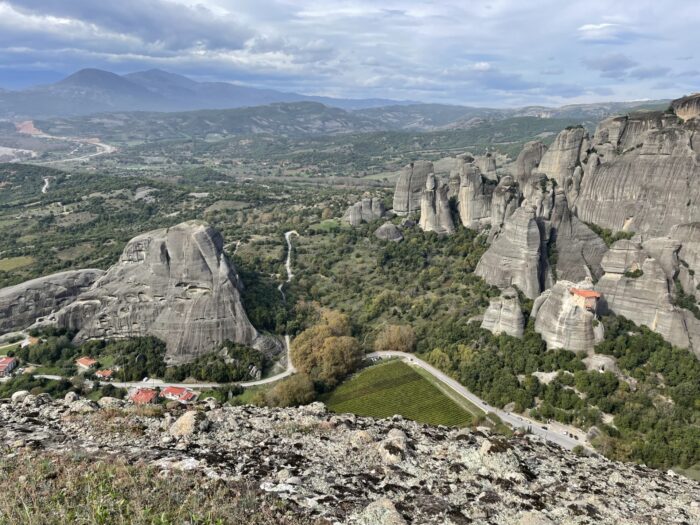
The mystery of the cross
However, one of the biggest riddles in Meteora is the metal cross kept at Varlaam Monastery. In 1348, to celebrate his victory over Epirus and Thessaly, Serbian emperor Stephen Dušan ordered a large metal cross (1.80m x 80cm) to be perched atop Holy Ghost, the most imposing of Meteora's towers. Holy Ghost is a monolithic 300m tower. Climbing to its top involves continuous 5c climbing. Researchers have found no trace of historic attempts on the rock, so we can only assume that somebody climbed 300 vertical metres using just their hands and feet, with no aid whatsoever.

In 1987, a French film crew led by the famous rock climber Patrick Berhault made a film about Meteora climbing. One of the three rock climbers in the cast attempted to repeat a free-solo ascent of Holy Ghost on the route Pillar of Dreams, 250 meters long and 5c+ as an average grade. Eighty metres above ground, he suddenly changed his mind, and the film helicopter had to rescue him. In 1994, American climber Jane Balister took on the challenge and free-soloed it. Not even James Bond -- in 1981, For Your Eyes Only was largely shot in this area -- achieved this goal.
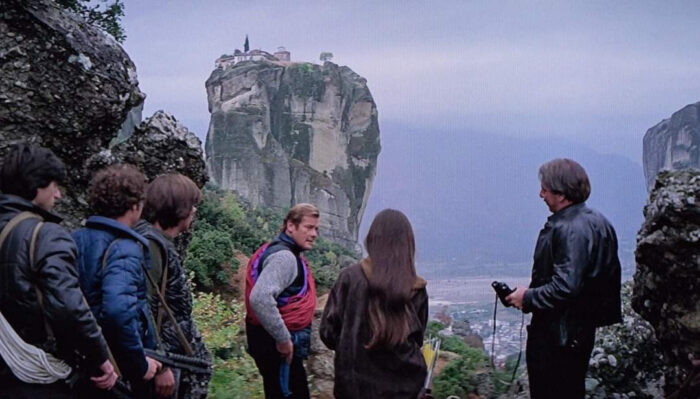
Then, climbing happened, thanks to the Germans
Dietrich Hasse was born in Bad Schandau, Saxony, and from a young age, he was involved in climbing. He quickly became one of Elba's best climbers. He opened many new routes and explored the Dolomites with excellent climbing partners, such as Lothar Brandler (known for the Hasse-Brandler route on the North face of Cima Grande di Lavaredo), Claude Barbier, and Heinz Steinkötter. In August 1975, Hasse and Sepp Eichinger visited Meteora for the first time. They were struck by the imposing towers and established the first four routes in the area.
In the spring of 1976, Hasse and his friend, professional climber and photographer Heinz Lothar Stutte, established even more climbing routes in the area. In 1977, they published the first climbing guide for the region, listing 83 routes.
Interest amongst the German climbing community was growing and seemed to reach a peak with the ascent of the eastern side of Alyssos tower. Hasse, Eichinger, Mägdefrau, and Lothar Stutte opened the Community Path route in a three-day effort, from March 27 to March 30, 1978.
Hasse died in 2022. Two years later, Greek climber Vangelis Galanis made a rope solo first ascent of a new multipitch route on Kapelo Peak and dedicated it to Hasse.
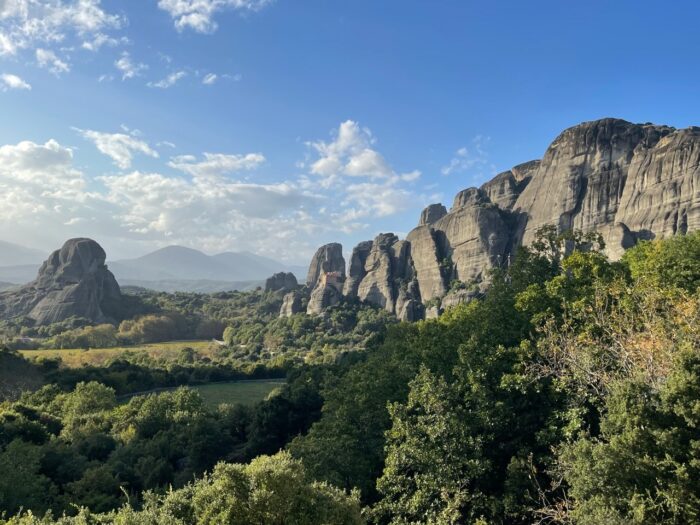
How to get there
From Athens, Meteora is 360km by car (in the direction of Lamia, Domokos, Karditsa, Trikala, and Kalambaka) on a route well serviced by intercity buses and train services. From Thessaloniki, the distance is 230km, by two main routes. The first leads to Kalambaka through Katerini, Larissa, and Trikala. The second goes via Veria, Kozani, Grevena, and Kalambaka. Both routes are possible by intercity bus and train.
You can also reach Meteora from Igoumenitsa, it is a 150km road through Loannina and Panagia. From Volos, it is 140km through Larissa and Trikala. Both routes are served by intercity buses.

Where to stay
The finest place to stay for climbers who want to explore the entire area is Kastraki, which lies between Meteora Towers. Small hotels, rental rooms, and two campsites are available there. Several lodgings are also offered in Kalambaka, a neighbouring town around 2km from Kastraki. I particularly recommend Ziogas Rooms, Thalia Rooms, Hotel Kastraki, and Camping Kastraki.
You can find a supermarket in the town of Kalambaka, and you can purchase basic supplies in a mini-market in Kastraki.

When to find perfect conditions
Climbing conditions are best between April and the middle of June, and from the middle of September to the end of November. The surroundings are lush in spring, but there is a greater chance of rain compared to hot and dry fall. Although summer can be quite warm, some routes are in the shade for a long time during the day. Though winter is more challenging, climbing is still an option on sunny days.
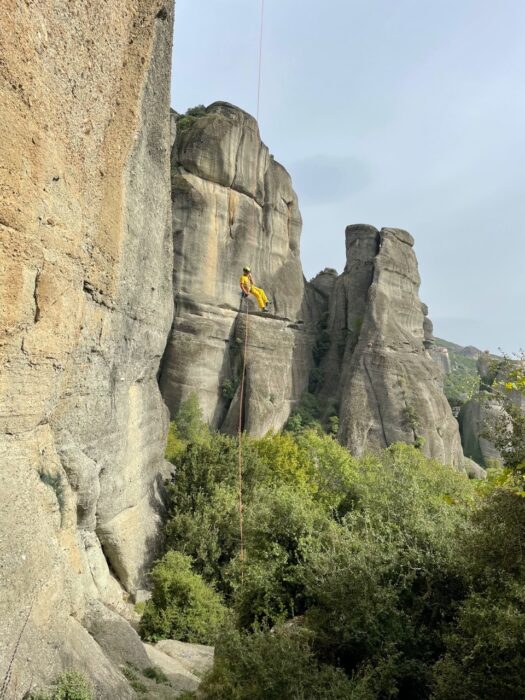
Gear, rules, and final recommendations
In addition to personal climbing gear such as a climbing harness, climbing shoes, a belay/rappel device, carabiners, straps, a lanyard, some nuts, and some friends, it is suggested you take 10-16 quickdraws. Two half-ropes of 60m will help with multipitch climbing, or a 70-80m single rope works for sport climbing.
In April 1976, the Archeological Service and the Orthodox Church granted written permission to climb in Meteora. Climbing is only forbidden on the six towers with inhabited monasteries. Rock climbing is thus permitted without restriction on the remaining 50 solid towers and 80 smaller ones. Campfires, camping, or bivouacking between the towers is strictly prohibited.
A 27-year-old student had to be rescued twice from Mount Fuji in one week. He got in trouble once during an illegal climb and again after returning to the mountain to recover his lost cell phone.
The student, a Chinese national studying in Japan, first attempted to climb Mount Fuji on April 22, when the mountain was still closed for the season. Because of extreme weather, trails on Japan’s highest peak are only open from July to early September.
On the first climb, the student became stranded near the summit. He couldn't descend after losing his crampons and was suffering from altitude sickness. A search-and-rescue team found him at an altitude of over 3,000m. He was mildly hypothermic and was airlifted off the mountain to a hospital.
Four days later, the headstrong student returned to Mount Fuji. According to police, he went back to retrieve his phone and other personal belongings lost during the first climb. He again made it to over 3,000m, where he once again succumbed to altitude sickness. Another hiker on the trail found him “lying on the ground and shaking.” Ensued a second rescue.
There is no penalty for climbing Mount Fuji during the off-season, and no charge for being rescued. But there has been an outcry on social media, with many saying the climber should at least be charged for the second rescue, if not both.
Although most visitors adhere to the seasonal guidelines, a growing number of individuals are attempting off-season climbs. Police in Shizuoka prefecture have reiterated their advice against climbing the mountain at this time of year. Medical facilities along the trails are closed, and the rapidly changing weather can make it very hard for rescuers to respond.
Today, Slovenian alpinist Nejc Zaplotnik would have turned 73. Widely regarded as one of the most influential climbers of his generation, he left an indelible mark on mountaineering through his bold ascents, philosophical writings, and tragic early death.
Zaplotnik’s resumé includes over 350 ascents across Europe, Africa, and North America. His career coincided with the golden age of Slovenian alpinism, characterized by ambitious expeditions to the Himalaya and other ranges, often with limited resources. We look at some of his notable climbs.
Jernej Zaplotnik, better known as Nejc Zaplotnik, was born in Kranj, Slovenia in 1952. He joined the town's Alpine Association in 1969 and soon made a name for himself in the Slovenian and Yugoslav climbing scenes.
Alongside climbing partner Tone Percic, Zaplotnik climbed a difficult route on 2,558m Grintovec, the highest peak in Slovenia's Kamnik-Savinja Alps.
In 1970, Zaplotnik joined the Mountain Rescue Service of the Slovenian Alpine Association. In 1971, he married Mojca Jamnik. Together, they had three children.

Early climbs
Also in Slovenia's Kamnik-Savinja Alps, Zaplotnik and Francek Ster made the first ascent of Tomazev Steber (Tomaz’s Pillar) on 2,540m Jezerska Kocna’s north face in 1971.
He also made several important climbs in Slovenia's Julian Alps. On Triglav, Jalovec, and Skuta peaks, he climbed several routes, focusing primarily on winter and solo ascents. For example, in 1978, Zaplotnik ascended the difficult 900m Skalaska Route on the north wall of 2,472m Spik Mountain.
He finished another important solo climb in 1980, on the north face of 2,864m Triglav. Here, he ascended the extremely challenging Cop Pillar route.
His ski descents were also notable, including those on the north face of Kocna and Skuta. He made other ski descents on Triglav, Jalovec, and Grintovec peaks.
In 1976, Zaplotnik ascended the difficult Schmid Route of the Matterhorn with Ivan Kotnik. He and partner Marko Stremfelj then climbed the even harder Carlesso-Sandri Route on Civetta in the Italian Dolomites.
In 1972, Zaplotnik went to Tanzania to climb the east wall of 5,149m Mawenzi Peak in the Kilimanjaro massif. Next, he moved on to Yosemite and did the Salathe Wall with Janez Gradisar.
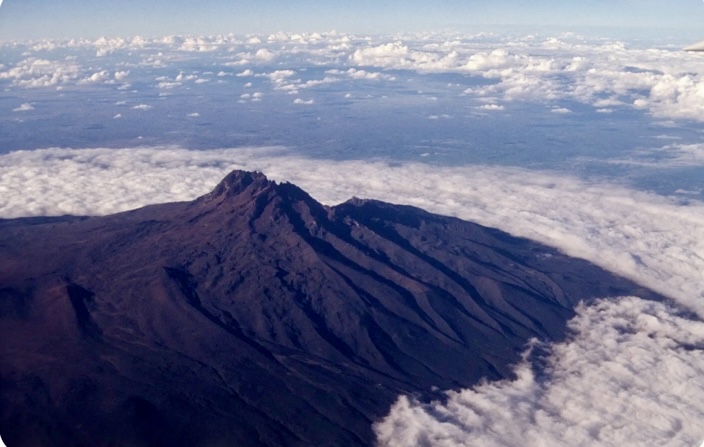
Makalu
Zaplotnik participated in three expeditions that completed new routes on three 8,000’ers: Makalu’s South Face, Gasherbrum I’s Southwest Ridge, and Everest’s West Ridge.
In the autumn of 1975, only one expedition targeted Makalu. Under the leadership of Ales Kunaver, the Yugoslav Himalayan Expedition chose to take on the unclimbed South Face. The 21-man team included Zaplotnik, Janko Azman, Stane Belak-Strauf, Janez Dovzan, Viki Groselj, Ivan Kotnik, and Marjan Manfreda, among others.
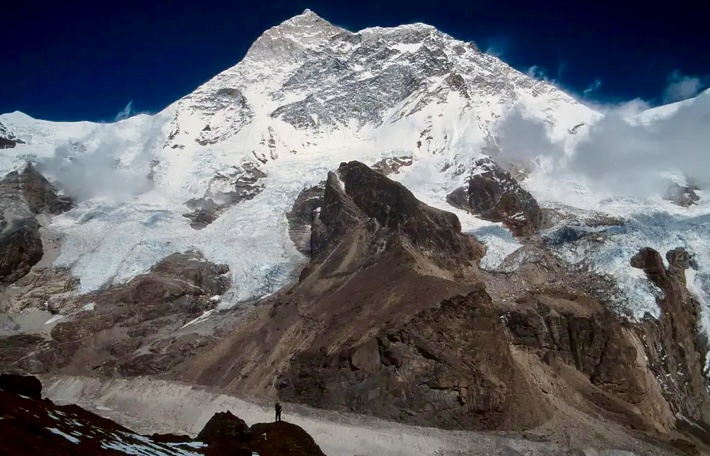
Other expeditions had tried Makalu’s South Face before. The Californian Makalu Expedition, led by William Siri, attempted the South Face–Southeast Ridge route in the spring of 1954, before the peak’s first ascent in 1955. However, the climbers aborted at 7,150m because of the approaching monsoon.
In the autumn of 1972, a Yugoslav expedition led by Ales Kunaver targeted the South Face without supplemental oxygen. In early November, climbers Miya Malezie and Janko Azman reached the top of the South Face at 8,100m. From there, they turned around, stymied by the route's difficulty.
In 1974, two parties attempted the face again. An Austrian expedition led by Wolfgang Nairz reached 7,500m in the spring before aborting in bad weather. That autumn, Fritz Stammberger led an expedition that made it to 7,800m, but bad weather again foiled them.
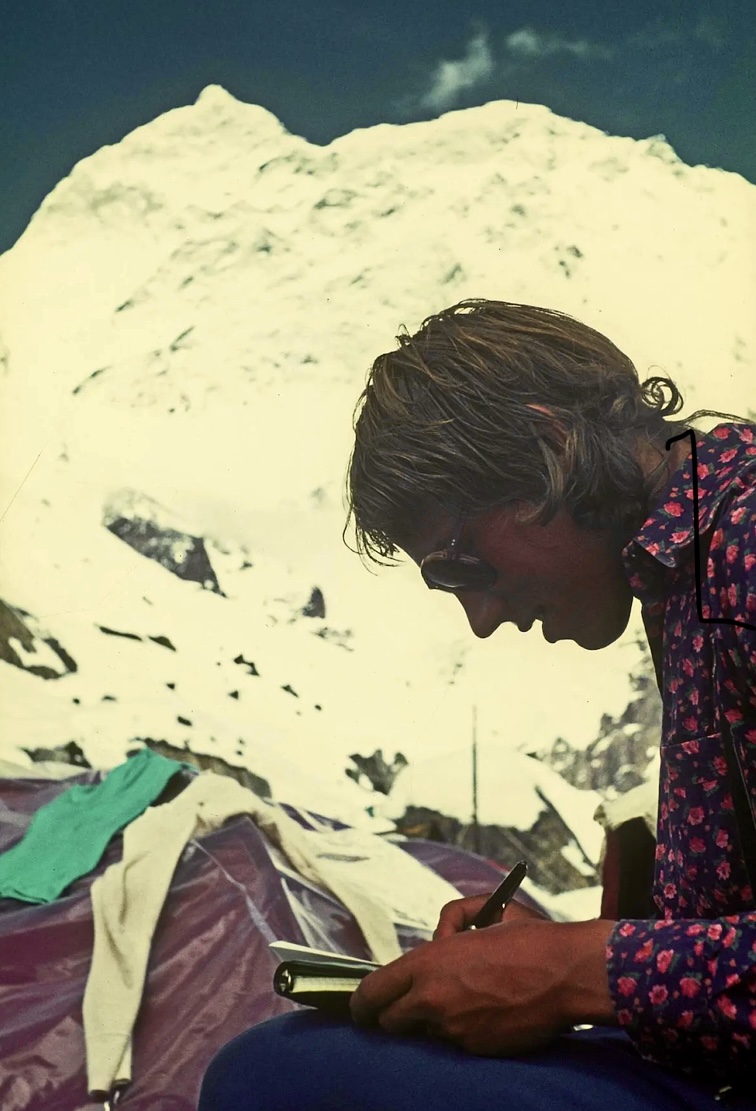
The first ascent of Makalu’s South Face
Kunaver’s party arrived at Makalu Base Camp on Sept. 5, 1975. They established Camp 1 at 5,850m on September 7 and Camp 2 at 6,300m on September 9. On September 14, they bivouacked at 6,600m. They established Camp 3 at 7,000m on September 16 and Camp 5 at 7,500m on September 23.
Their rapid progress was interrupted soon after. Heavy snowfall and avalanches destroyed Camp 4. It took till October 2 to rebuild it. Camp 5 was established at 8,050m two days later. They later camped in snow caves to avoid avalanches.
The team summited in small groups. On October 6, Stane Belak-Staruf and Marjan Manfreda summited via the South Face. On October 8, Zaplotnik and Janko Azman reached the top, followed by Ivan Kotnik and Viki Groselj on October 10 and Dovzan on October 11. Manfreda didn’t use bottled oxygen, while the other summiters did.

New route on Gasherbrum I
In the summer of 1977, Zaplotnik was part of a nine-man team that received a climbing permit for 8,080m Gasherbrum I in the Karakoram. Led by Janez Loncar, they would attempt the unclimbed Southwest Ridge.
The climbers navigated a complex icefall to set up Camp 1 at the base of a steep couloir. They progressed through challenging terrain -- a rocky chimney, ice slopes, and a vertical rock pitch -- to establish Camp 2 at 5,760m.
According to Zaplotnik’s report for the American Alpine Journal, from there, they climbed the White Dome’s avalanche-prone 50° slope. That day, an enormous slide narrowly missed them.
They set up Camp 3 at 6,340m, then descended to Base Camp to rest. Soon after, Loncar and Filip Bence fell ill, leaving only five fit climbers.
Andrej Stremfelj and Zaplotnik carried gear from Base Camp to Camp 2 in a day, and then moved it to Camp 3. Above Camp 3, Borut Bergant fixed some rope on the summit pyramid’s base. Then they climbed the steep, icy West Face on poor rock.
Andrej Stremfelj and Zaplotnik continued past the ropes alongside a 70° couloir that led to two snow shoulders. They placed Camp 4 on a precarious snow shelf somewhere between 7,000m-7,300m and endured a windy, sleepless night.
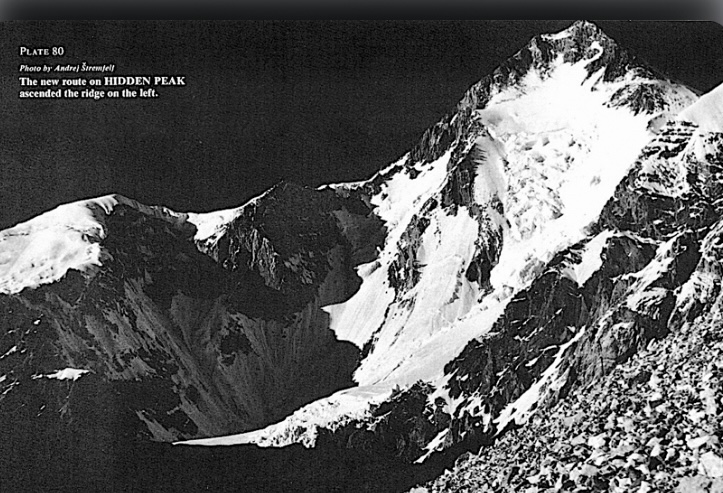
The Southwest Ridge
On the morning of July 8, Stremfelj and Zaplotnik departed Camp 4. After hours of climbing on icy rocks, they reached a gap below the summit at midday. They finally summited Gasherbrum I in fog and extreme cold. At the summit, they raised the Yugoslav, Pakistani, and Slovenian flags, took a few useless photos in the fog, then began the difficult descent to Camp 4 in a blizzard.
Stremfelj and Zaplotnik missed the fixed ropes and had to navigate a vertical chimney to reach Camp 2 and then Camp 1.
Meanwhile, Drago Bregar was at Camp 4, intending to push for the summit. But on July 10, the team lost contact with him. Some team members tried to reach the upper slopes to look for him, but on July 14, it started to snow again. They couldn’t find Bregar.
"I sat at Base Camp, looking at my second 8,000’er, Bregar’s grave," Zaplotnik wrote.
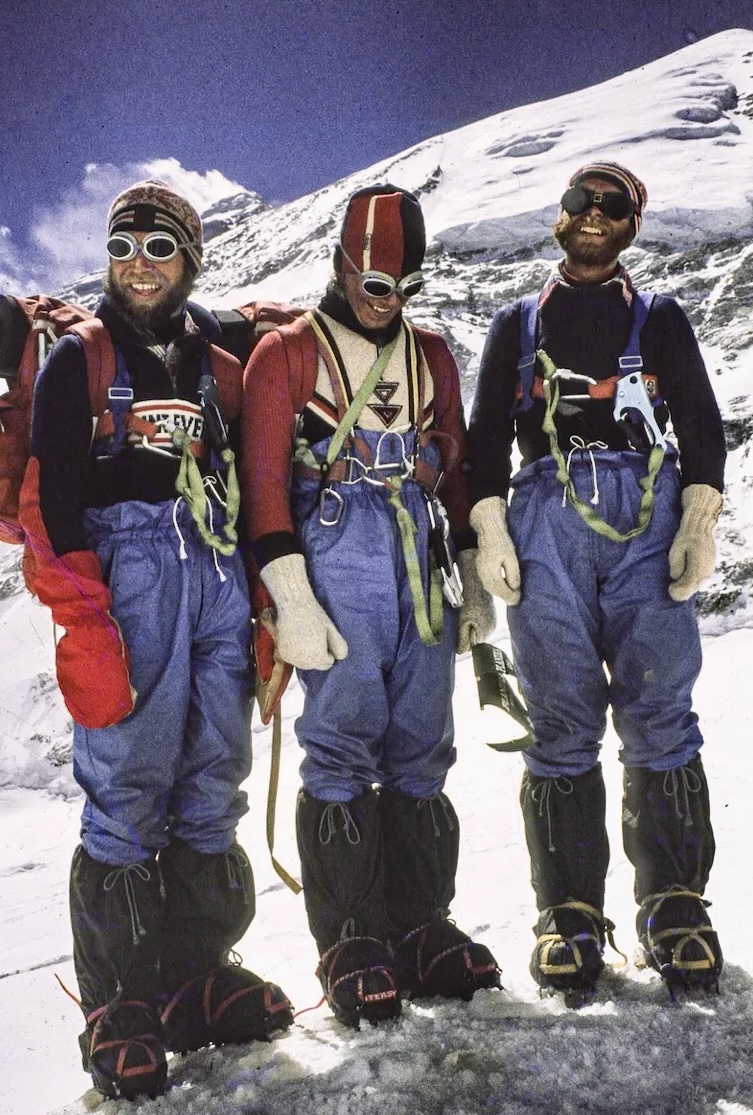
New route on Everest
In the spring of 1979, a strong Slovenian team led by Tone Skarja and including Zaplotnik tried a new route on Everest -- the complete West Ridge, also known as the West Ridge Direct.
The expedition arrived at Base Camp at the end of March with 700 porters. The climbers scouted the safer Lho La route, transported loads to the pass, and tested gear. For the next month, they established camps to 7,300m, fixing ropes on very steep terrain.
Storms delayed progress until May 9, when they established Camp 5 at 8,120m. On May 10, Viki Groselj and Marjan Manfreda attempted the summit but retreated at 8,300m because of route-finding issues, oxygen valve failures, and frostbite.
On May 12, Dusan Podbevsek and Roman Robas faced similar navigation challenges, barely surpassing 8,300m.
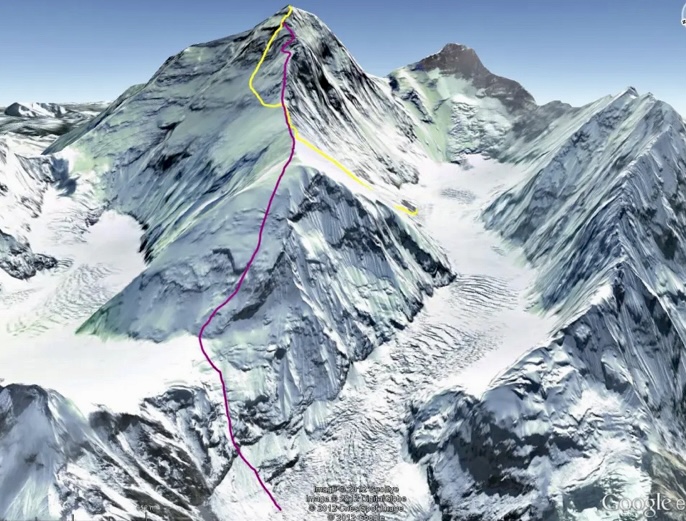
The West Ridge Direct
On May 13, brothers Andrej and Marko Stremfelj and Nejc Zaplotnik left Camp 5 in brutal -35° cold plus a wind. Marko turned back because of a faulty oxygen valve, but Andrej Stremfelj and Zaplotnik pressed on. After climbing a very demanding short section on the upper part of the peak, the two climbers rejoined the American Route and the Hornbein Couloir, summiting in the early afternoon.
On May 15, Stane Belak, Stipe Bozic (filming the ascent), and Ang Phu Sherpa left Camp 5 after a snowfall delay. As a trio, they moved slower, reaching Everest’s summit at 2:30 pm. During their descent, they were forced to bivouac in the open at over 8,200m on the Hornbein Couloir.
Borut Bergant, Ivan Kotnik, and Vanja Matijevec had been waiting at Camp 5. They found the trio below the couloir, seemingly fit to descend. Tragically, Ang Phu then slipped and fell 1,800m to his death. They discovered the body the next day.
Because of the accident and oxygen system failures, they made no further attempts.
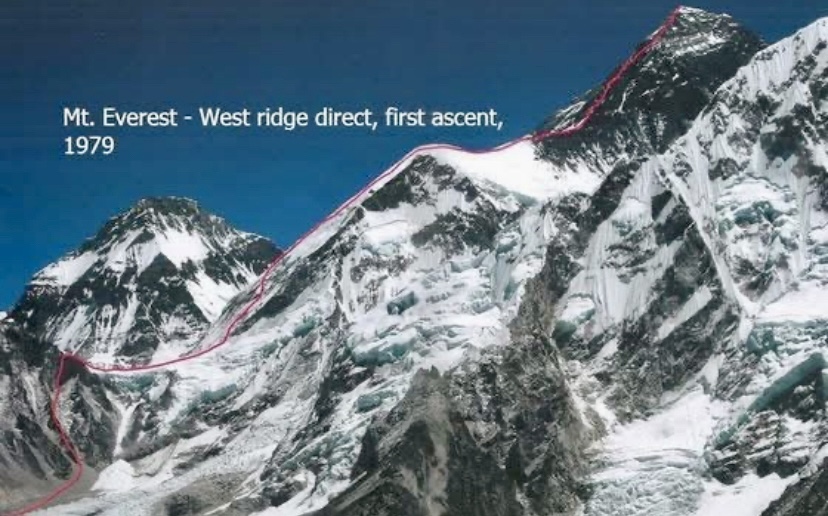
The difference between the 1963 and 1979 routes
The 1979 Everest West Ridge Direct and the 1963 American Route (by Willi Unsoeld and Tom Hornbein) both tackled Everest’s West Ridge, but their routes and approaches differed.
The 1979 team climbed the entire West Ridge from Lho La (6,050m) to the summit, a 6.5km route. This was the first confirmed full ascent of the West Ridge, avoiding deviations. The team of 24 climbers, with five summiting (A. Stremfelj, Zaplotnik, Ang Phu Sherpa, Belak, and Bozic), faced UIAA Grade V challenges near the summit. They used supplemental oxygen above Camp 5 (8,120m) and fixed ropes extensively.
Unsoeld and Hornbein climbed from the Western Cwm in 1963, joining the West Ridge at around 7,500m. They then diverged to the Hornbein Couloir (8,000-8,500m) to the summit. This partial West Ridge climb, covering less of the ridge’s full length, was the first traverse of Everest. The pair descended via the South Col, using minimal fixed ropes and limited oxygen.
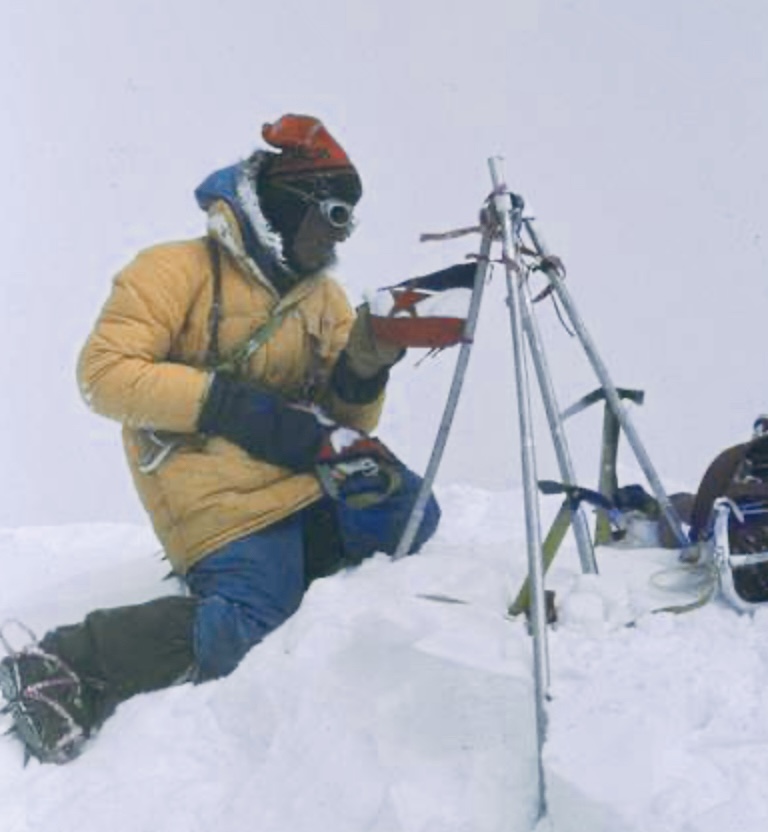
Lhotse South Face attempt
In the spring of 1981, Zaplotnik was a member of the Lhotse South Face Expedition led by Ales Kunaver. The team progressed well but abandoned their attempt on May 20 at 8,250m because of bad weather and exhaustion.
Zaplotnik’s death
In the spring of 1983, the Split Alpine Expedition set off for 8,163m Manaslu. Led by Vinko Maroevic, they targeted the dangerous South Face–South Ridge route. The team had 16 climbers, including Zaplotnik, and decided not to use supplemental oxygen.
The expedition started well, and they established four high camps, reaching 7,101m.
However, on April 24, an avalanche hit some of the climbers roughly 100m above Camp 1 on the Manaslu Glacier. It killed Zaplotnic and Ante Bucan. Srecko Grekov was badly injured.
Zaplotnik was 31 years old, which seems young considering how much he had already accomplished.
For more details on Zaplotnik’s life and career, we highly recommend Zaplotnik’s book Pot. It’s a cult text, a ”bible for a generation," as Slovenian climber Marko Prezelj once said.
We also recommend Bernadette Mcdonald's book Alpine Warriors and her excellent article Nejc Zaplotnik Mountain Poet, published in Alpinist.
At 4,392m, Mount Rainier is the highest peak in the Cascade Range of the Pacific Northwest. Situated just 95km southeast of Seattle, it has long beckoned climbers and adventurers. Today, we’ll look into its rich climbing history, spotlighting the pioneers who first approached its icy heights.
An active volcano
An active stratovolcano, Mount Rainier's last significant eruption was around 1,000 years ago. (There was some unconfirmed minor activity in the 19th century.) Although it hasn’t erupted for a long time, Mount Rainier is close to populated areas and is considered one of the most dangerous volcanoes in the U.S.
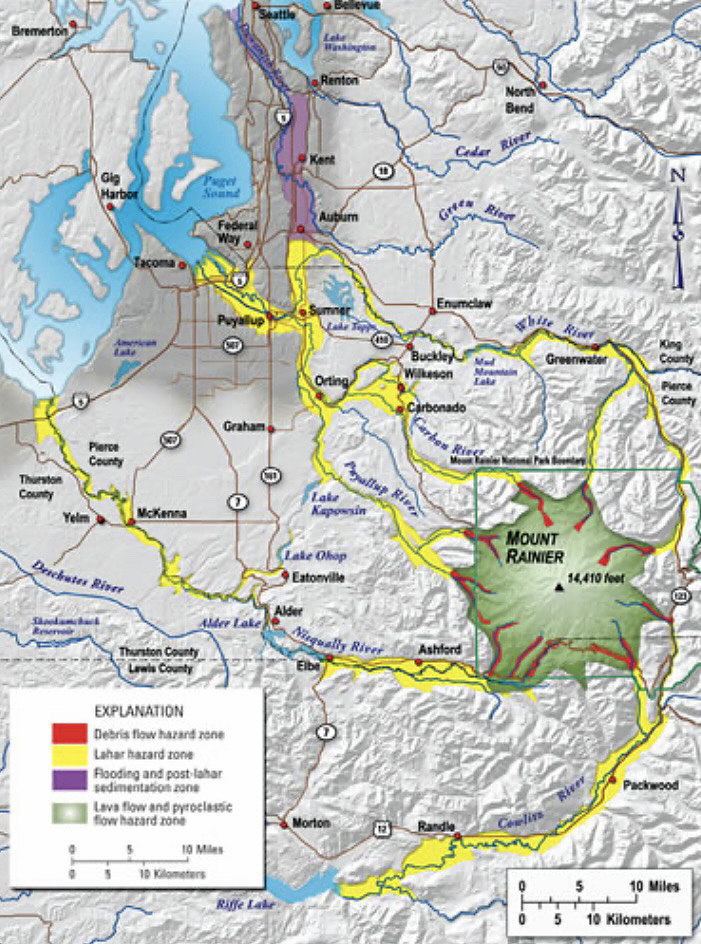
Mount Rainier has three distinct summits. The highest is Columbia Crest (4,392m), situated on the crater's western rim. In 1870, the first successful climbers of Mount Rainier identified this as the main summit. The other summits are Point Success (approximately 4,315m) and Liberty Cap (approximately 4,301m).
Older sources occasionally treat Point Success and Liberty Cap as subsidiary peaks, but modern nomenclature and climbing records recognize all three because of their topographic significance.
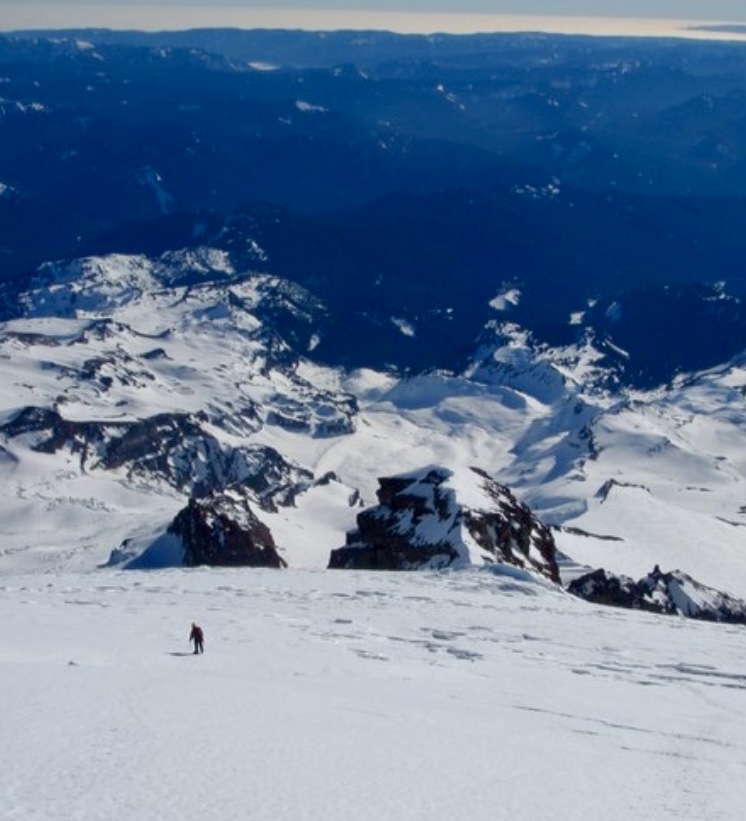
Cultural significance
Mount Rainier has deep cultural roots for the Indigenous people of the Pacific Northwest, whose lands surround the mountain. For these communities, Mount Rainier was not just a physical landmark but a sacred entity tied to creation stories, spirituality, and survival. In various tribal languages, Mount Rainier is commonly known as Tahoma or Takhoma, often translated as "mother of waters" or "snow-covered mountain."
Archaeological evidence, like stone tools found at the peak, suggests the existence of seasonal camps dating back thousands of years. It is unlikely that climbing to the summit was a cultural practice because high elevations were often seen as the domain of spirits and deities.
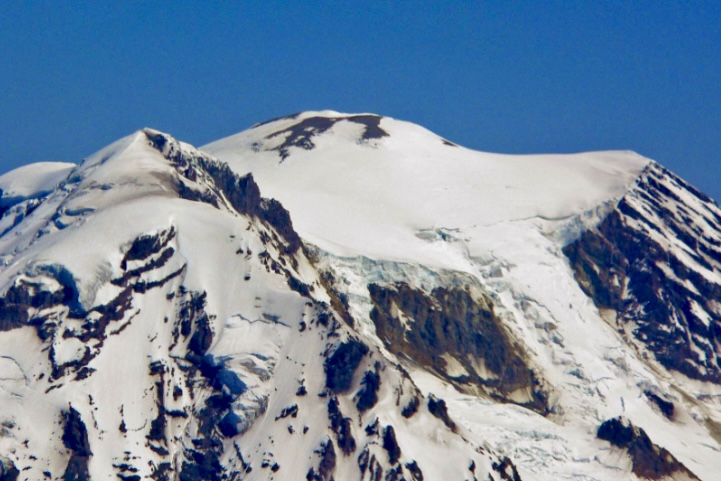
First European sighting
In May 1792, English explorer Captain George Vancouver sighted the mountain during a scouting expedition. He named the peak Mount Rainier after Admiral Peter Rainier of the British Navy. The name has caused controversy, with many people believing the name should feature a local figure or have an Indigenous name. However, Mount Rainier has stuck.
In 1833, Scottish botanist William Fraser Tolmie explored the area, seeking medicinal plants. Tolmie was not a climber, but his documentation of the region provided some interesting early insights that encouraged later climbs.
Early attempts
The first documented attempt to climb Mount Rainier took place in August 1857. U.S. Army Lieutenant Augustine Kautz led a team that included Dr. Robert Orr Craig and several Nisqually guides. They started from a low elevation near the Nisqually River and followed what is now known as the Kautz Glacier route.
After eight difficult days of climbing, Kautz’s party reached about 4,267m. Here, they turned back because of exhaustion and health issues. "[We were] too weak to go further," Kautz wrote.
There was possibly an ascent in 1852, but the climb remains unverified. A brief account in the Olympia Columbian newspaper from September 1852 mentions a climb by one Benjamin Franklin Shaw and other climbers. But details were vague, without route specifics, any detailed description, or firsthand accounts. It’s possible that they reached a high ridge or a false summit, but without more evidence, the ascent can’t be credited as Mount Rainier's first.
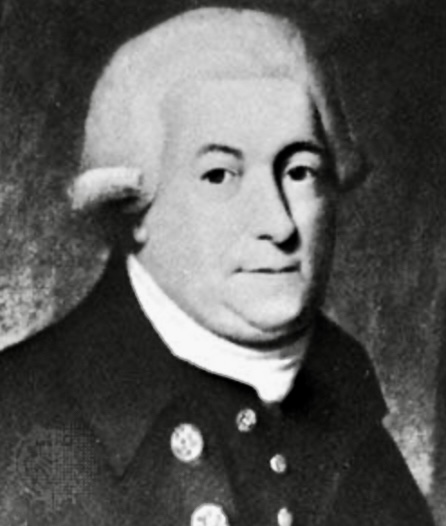
The first ascent
On August 17, 1870, Americans Hazard Stevens and Philemon Beecher Van Trump completed the first documented ascent of Mount Rainier. Without much prior climbing experience, their achievement marked a significant moment in the mountaineering history of the Pacific Northwest.
Hazard Stevens was a clerk for the Oregon Steam Navigation Company and a Civil War veteran. Van Trump was a government official who worked as a private secretary to the governor of Washington Territory. Both had a keen interest in exploration and the natural world.
The two men had been planning their 1870 expedition for years but were delayed by forest fires in the region.
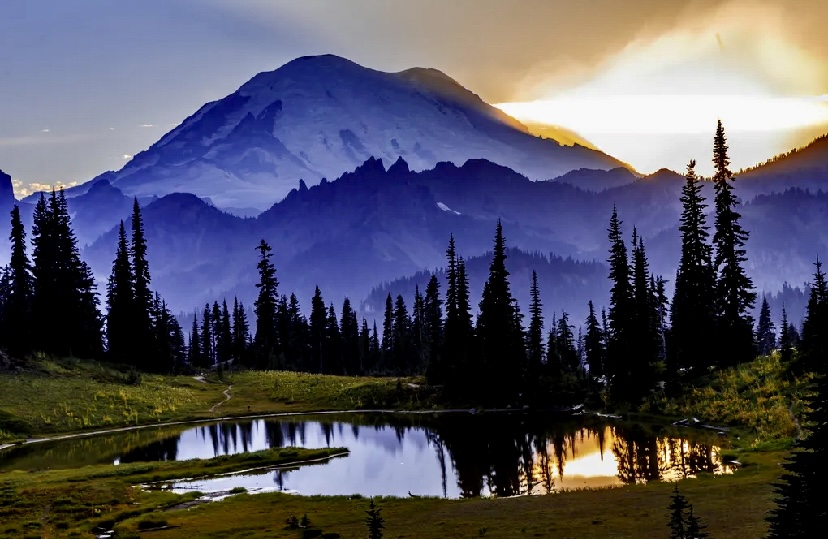
James Longmire, an experienced explorer of the area around Mount Rainier, provided critical logistical support for Stevens and Van Trump, including pack horses and guidance. Longmire would not ascend the peak, but his role was instrumental in getting the party to the base.
A Yakama Indian guide called Sluiskin accompanied Stevens and Van Trump to the base of the mountain. He took them to Sluiskin Falls, located at 1,830m, but warned against the climb, fearing supernatural dangers.
English mountaineer Edmund T. Coleman joined the party in Olympia and wanted to summit, but he had to turn back after losing his pack during a difficult crossing of the Tatoosh Range during the approach.
The long approach
The party departed from Olympia on Aug. 8, 1870, traveling southeast toward Mount Rainier. They were accompanied by Coleman and a group of well-wishers who escorted them to Longmire’s ranch on Yelm Prairie, 48km from Olympia.
At the ranch, Longmire provided pack horses. They then proceeded to Bear Prairie, hiring Sluiskin as their guide. Sluiskin was so convinced that the two climbers would perish that he promised to wait two days before reporting their deaths.
Between August 14 and 16, Stevens and Van Trump rested at their base camp and prepared for the ascent.
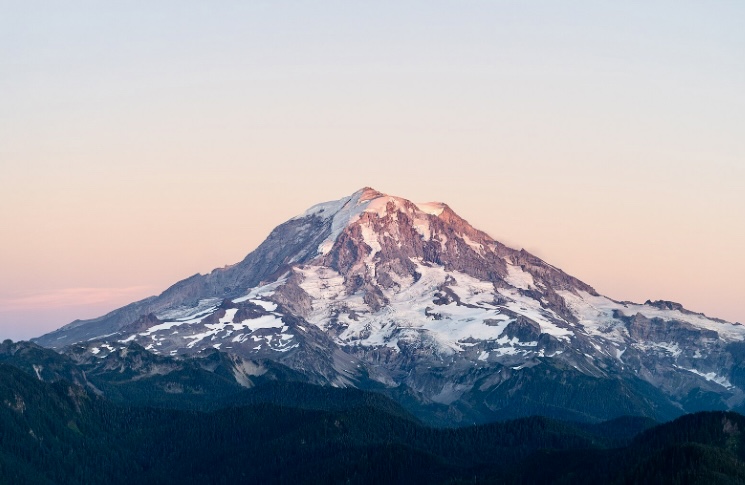
The ascent
On August 17, 1870, Stevens and Van Trump began their climb at dawn. They ascended via the challenging Gibraltar Ledges route, located on the southeast face. This route starts at a low elevation and follows a steep rocky ridge known as Gibraltar Rock, which connects to the upper snowfields and glaciers leading to the summit.
They navigated through loose rock, steep snow-covered slopes, and icy sections, arriving at the crater (at 4,317m) in the afternoon. From there, they made a final traverse to Columbia Crest at 4,392m.
After summiting, night fell, and the weather turned bad. They sheltered overnight in a steam-heated ice cave within the crater.
A difficult descent
The next day, Stevens and Van Trump began to descend early in the morning down the Gibraltar Ledges. On their way down, Van Trump slipped on ice and slid 12m, injuring his thigh but surviving the close call.
Finally, they reached base camp late in the afternoon on August 18, reuniting with their guide, Slusikin.
The duo's ascent marks the beginning of recorded mountaineering on Mount Rainier.
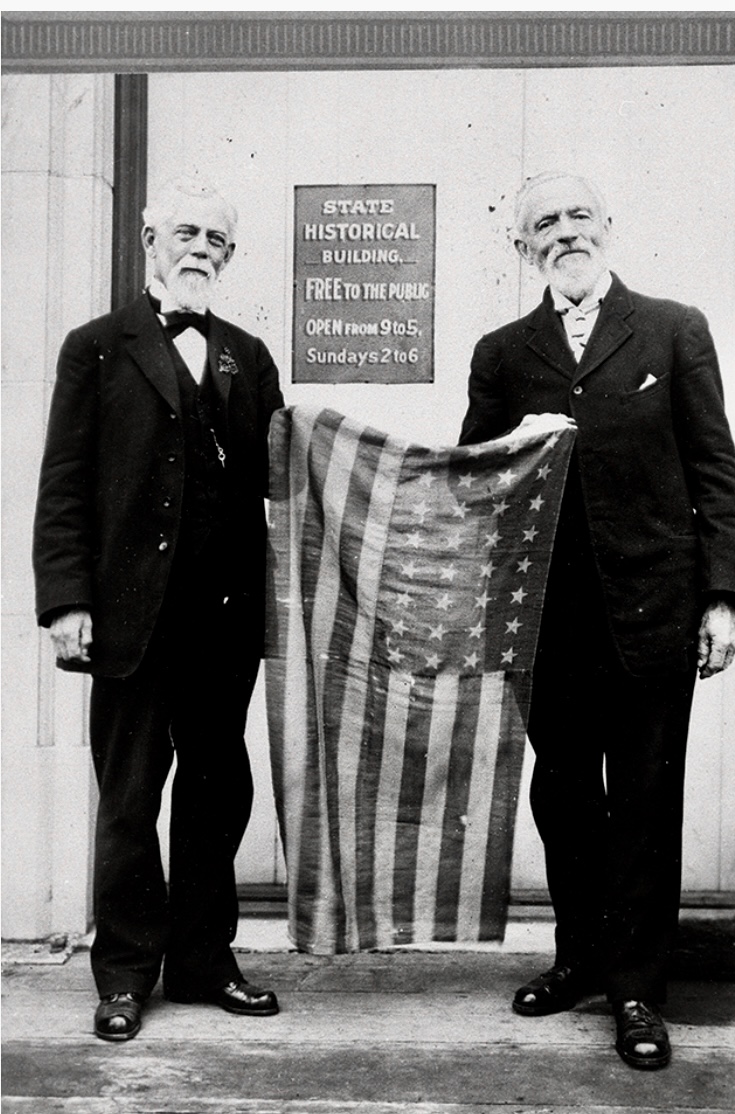
John Muir
Scottish-American writer and conservationist John Muir summited Mount Rainier in the summer of 1888. He also climbed via the Gibraltar Ledges route. He later wrote about his experience and helped secure the mountain’s protection as a national park in 1899. Muir was struck by Mount Rainier’s extensive glaciers and surrounding wildflower-rich meadows.
"Of all the fire-mountains which, like beacons, once blazed along the Pacific Coast, Mount Rainier is the noblest in form," Muir wrote.
Other notable ascents
The Gibraltar Ledges route saw its first winter ascent on Feb. 16, 1922. The party was led by Jean Landry and Jacques Landry, possibly alongside Ranger Oliver G. Cornwell and others.
In the autumn of 1935, Ome Daiber, Jim Borrow, and Arnold Campbell summited via the Liberty Ridge route on the north side. Liberty Ridge is Mount Rainier’s most iconic and dangerous route.
The Disappointment Cleaver route is on the southeast side of the peak. Dee Molenaar, Jim Wickwire, and four companions first ascended it on Aug. 23, 1950.
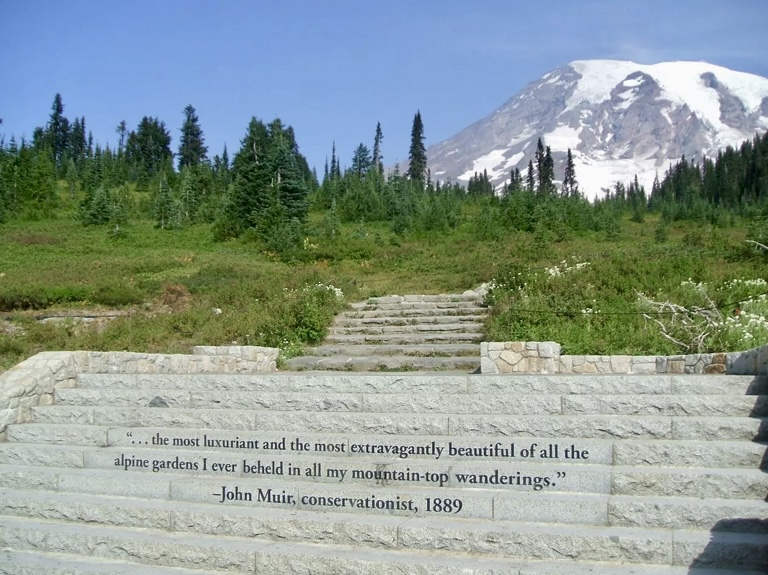
Since its first ascent, thousands of mountaineers have climbed Mount Rainier, which now has over 20 climbing routes.
To date, there have been 370,000-400,000 successful ascents. The success rate is around 50%. The success rate for guided climbs is higher.
Fatalities
Approximately 130 people have died Mount Rainier, including Willi Unsoeld of Everest fame in 1979. Almost every year, there is a fatality.
On Dec. 10, 1946, a U.S. Marine Corps transport plane carrying 32 Marines from San Diego to the Naval Air Station at Sand Point, Seattle, crashed into the South Tahoma Glacier on Mount Rainier’s southwest flank. In stormy weather, the plane hit the mountain at around 3,230m, killing everyone on board.
On June 21, 1981, a massive ice avalanche hit a guided team on the Ingraham Glacier route at 3,353m. A serac collapse triggered the avalanche, which buried 11 of the 29 climbers.
In May 2014, a six-person team was probably hit by an avalanche on the Liberty Ridge route. It killed all six climbers. The team was last spotted on May 28 at 3,962m.
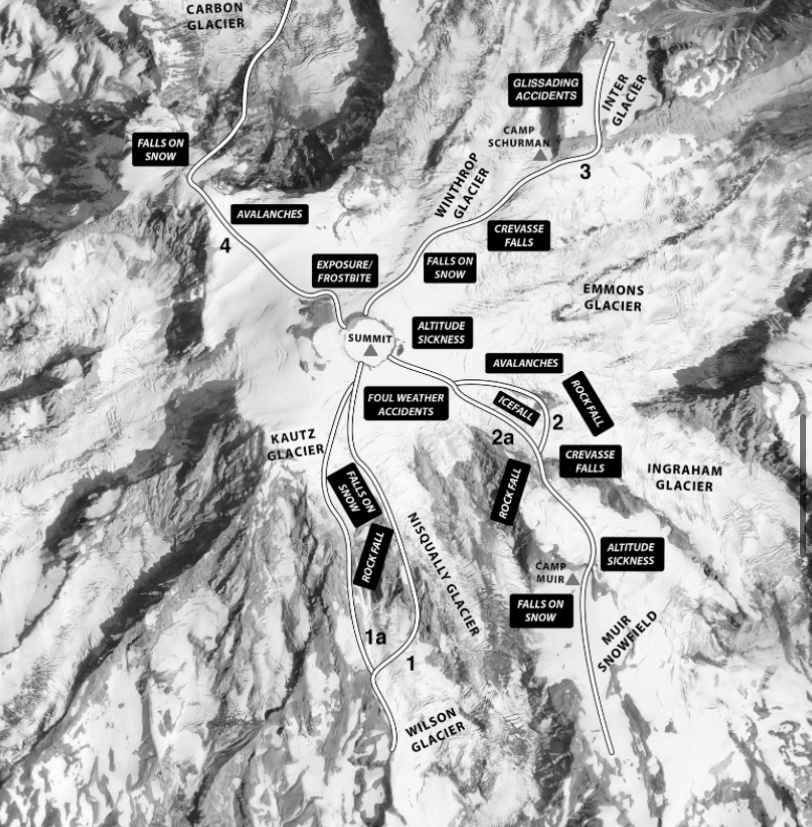
A 22-year-old climber died on Saturday in a fall from Scotland's highest mountain. His climbing partner, 30, is in the hospital with significant but not life-threatening injuries. Both men are believed to hail from England.
A rescue and a tragedy
Around 5 pm on Saturday evening, Police Scotland received reports of two injured climbers below the Moonlight Gully, a popular beginner's ski route.
Late Saturday night, the Lochaber Mountain Rescue Team (LMRT) located one injured but alive climber who had managed to move downhill. They evacuated him to Raigmore Hospital in Inverness. Strong winds and snow then forced them to pause the search.
The next morning, they found the body of the second climber, who was deceased. Scottish police have not disclosed the cause of death nor released the names of either climber. The families, however, have been notified.
Both men fell about 60 meters during the accident.
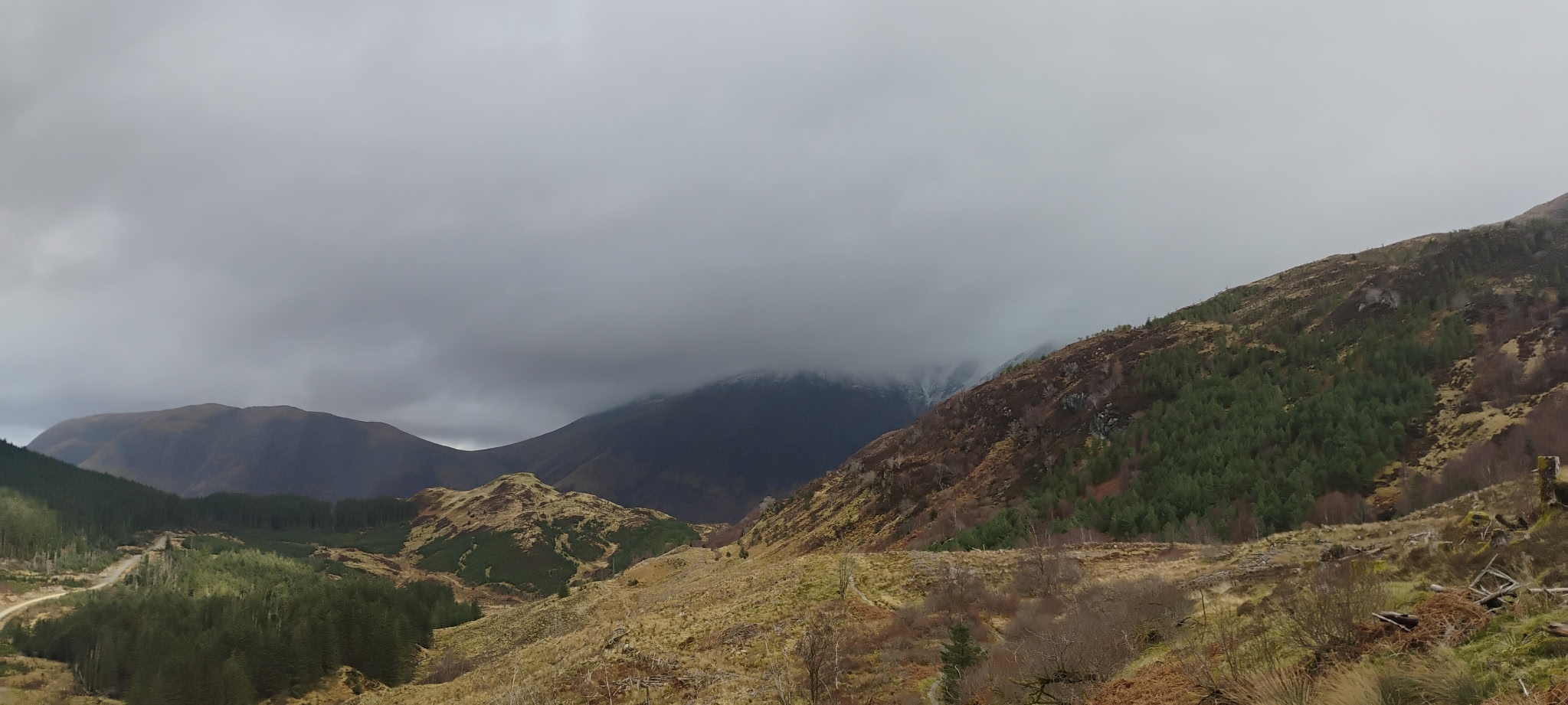
Fickle weather
At 1,345m, Ben Nevis is the tallest mountain in the UK and draws more than 125,000 visitors per year, according to Scotland's tourist board. The weather around Ben Nevis last week alternated between sun and rain. On Saturday, heavy storms caused the closure of surrounding trails due to flooding. Snow was also falling.
This kind of weather is typical in the Highlands. It impedes rescue efforts and has led to deaths before. More than 100 people have died on the mountain since records started in 1849.
The UK's busiest mountain rescue team
This was the fourth rescue for the LMRT this week. The number of rescues rises every year as more tourists flock to the Highlands and to Ben Nevis in particular.
"As an entirely voluntary team, responding to calls and attending training is a huge demand on time, and it is unnerving to see these numbers rise so quickly," said the LMRT website. "Taking the lead in a team like this requires extraordinary fortitude, resilience, and a remarkable ability to survive on little sleep and lots of chocolate bars."
You can donate to the LMRT here.
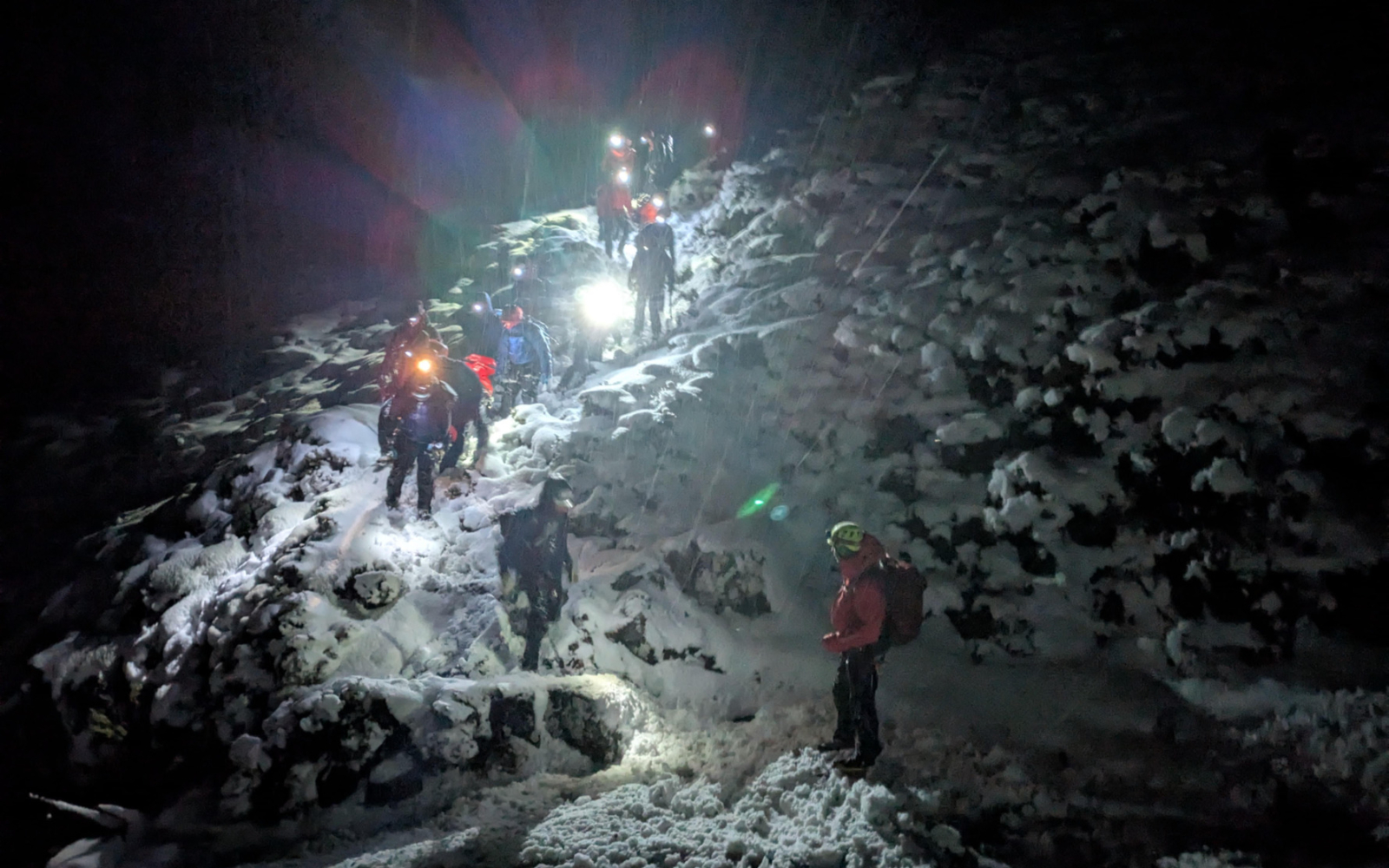
Saudi Arabian World Cup climber Sara Qunaibet was the victim of improper use of a Petzl GriGri by a professional coach. She suffered two broken feet and a broken back but could have easily died, especially considering she fell from just below the top anchors and landed beyond the pads.
The incident occurred last year, before the French rounds of the IFSC World Cup held in July 2024. But video of the accident just surfaced. It’s a powerful reminder of the importance of proper techniques and equipment protocols.
Petzl specifies a particular technique for feeding slack for its GriGri, and as always, the brake hand must control the brake strand of the rope. This video and detailed analysis by the narrator reveal that the coach blatantly ignored these rules and committed several other significant errors.
Ironically, the route was an easy warm-up for Qunaibet, and the accident occurred during a test fall that many climbers do to mentally prepare for lead climbing during the training session. And — grab your seat — two other professional coaches were present, one chatting with the belayer the entire time Sara was climbing.
This article first appeared on GearJunkie.
Nathan Longhurst of the U.S. has been on a tear to climb New Zealand’s 100 greatest peaks in one season since last November. Today, the 25-year-old completed his task, summiting his 99th and 100th peaks, 3,151m Mount Sefton and 2,764m The Footstool. As he often did on this unique project, he paraglided from the top of Sefton to The Footstool and began climbing from there.
Longhurst is only the second person to complete the list and the first to do so in a single season. The first man, Don French, took 30 years to notch them all.
Not only did Longhurst paraglide from each summit, but sometimes, he flew from the top of one peak to the base of another. Occasionally, he has even landed high on a subsequent peak and climbed from there.
"He doesn’t claim to have climbed those peaks in the traditional sense," Dan Cervelli, who managed Longhurst’s social media, told ExplorersWeb when we first reported on his project back on February 3.
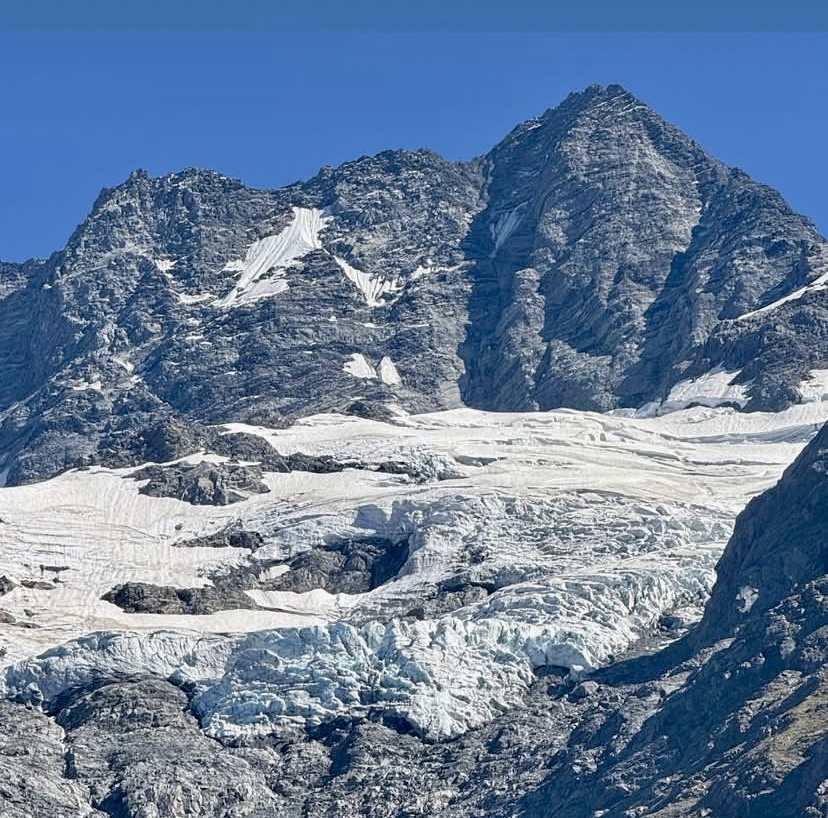
As he climbed The Footstool, a small crowd waited in nearby Hooker Valley, watching him through binoculars. When Longhurst landed his paraglider near them, officially finishing the project, they became the first to congratulate him.
Longhurst has documented all his climbs on Instagram, where his handle is nathan358. At home, the alpinist, trail runner, and paraglider splits his time between Salt Lake City, Utah, and Mammoth Lakes, California.
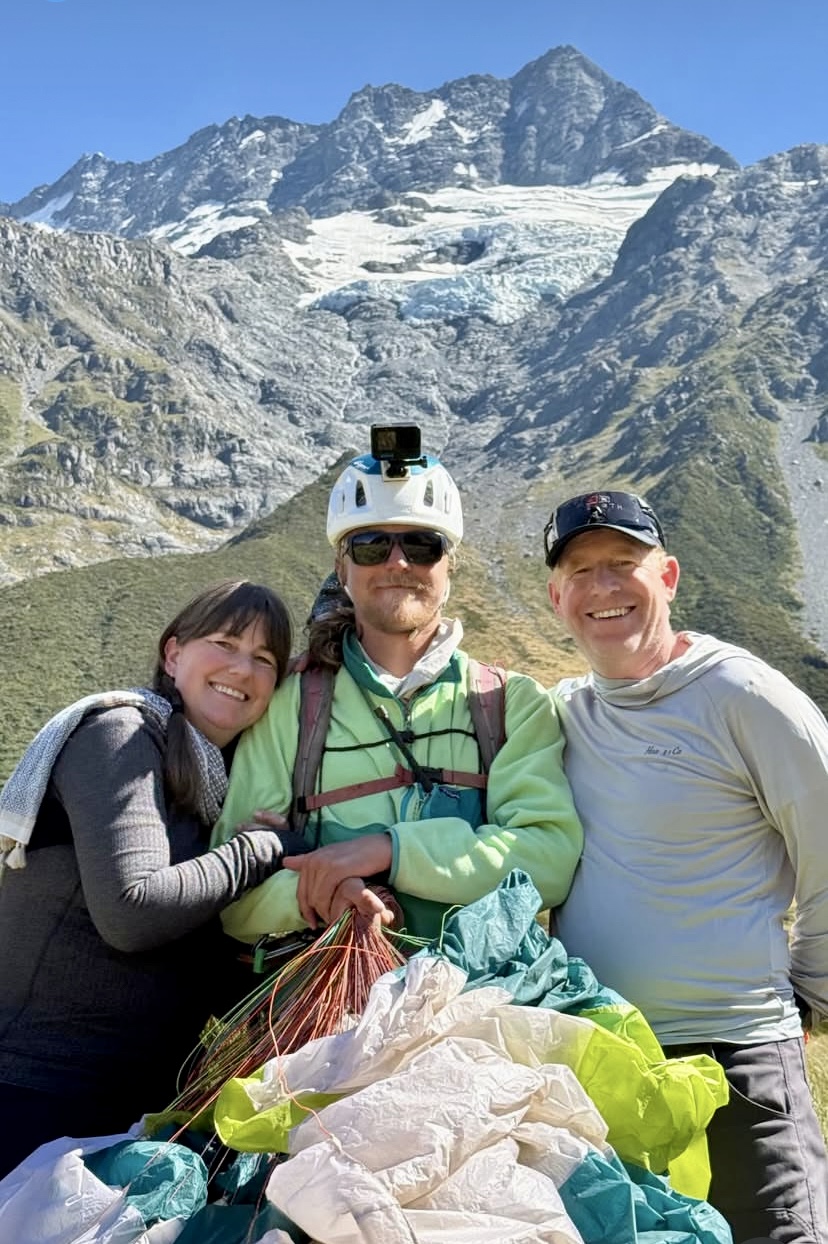
The late, great climber Hansjorg Auer described the Schiefer Riss route up the north face of Sagwandspitze as one of the most terrifying climbs in the Austrian Tyrol. In 2013, he, David Lama, and Peter Ortner became the first to complete the line in winter.
It took them two tries, including "the worst night of their lives" on the brittle rock of that cold and hostile face.
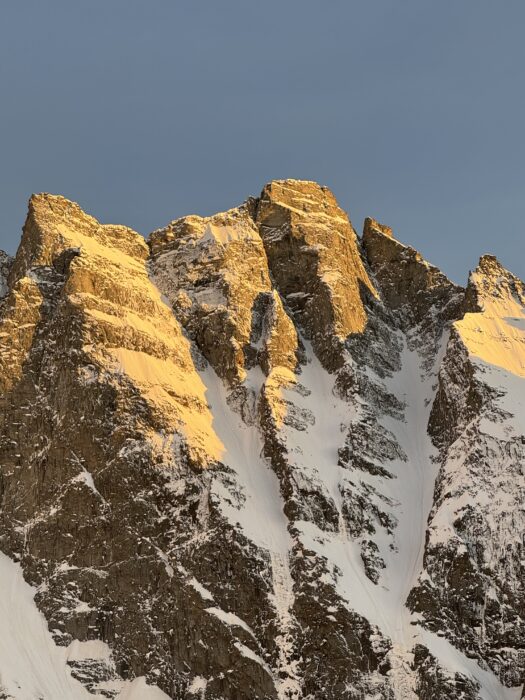
Earlier this week, two elite Tyrolean alpinists, Simon Gietl and Martin Sieberer, finally repeated that momentous line.
The route
Schiefer Riss (meaning "inclined crack") is a diagonal route on the fragile and often wet rock of an 800m face. Hias Rebitsch and Roland Berger first climbed it (in summer) in 1947. No one repeated it for almost 30 years. Only a handful of teams have attempted it at any time of year.

After the talented trio did the first winter climb in 2013, Hansjorg Auer said: "The grade makes no sense here because no grade is capable of describing the level of commitment we had to assume in order to reach the summit."
After doing the first winter repetition, Martin Sieberer agrees.

Why so scary
"The grade of Schiefer Riss is about VI/M7 and 80º on ice/snow, but on that route, it is not the grade that matters," Sieberer told ExplorersWeb. "It's the sustained steepness, combined with brittle rock, difficulty, and length. The face is about 800m high, but since you climb a lot sideways, the total length is actually about 1,000m (20 pitches)."
Sieberer adds that it involves many hard pitches, hardly any fixed gear, loose rock, and no good bivy spots. "We slept on a narrow ledge with half a tent and only one sleeping pad," he said.
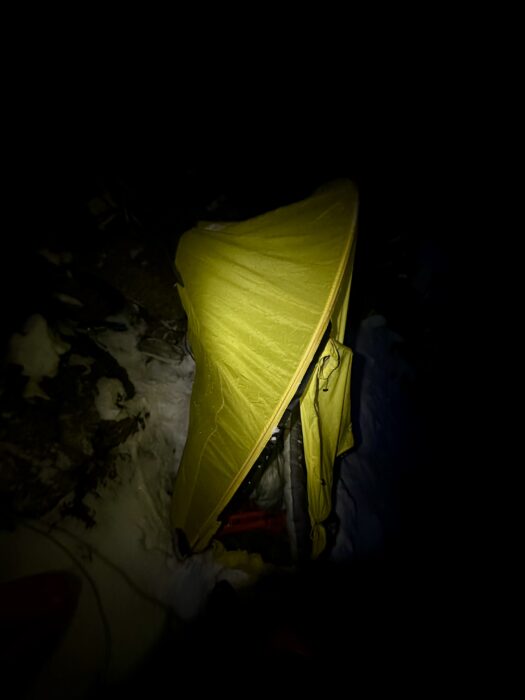
The Austrian climber is not surprised that so few have climbed it. In summer, unstable rock makes the face even more hazardous. "It's safer in winter," he says.
But that safety is relative, as he noted:
We were quite scared at some points, because there are so many loose flakes just waiting to fall down. We even had a rope cut by a falling rock on the first day. On some pitches, the only protection is mental (not really enough to stop a fall), so you definitely have a lot of no-fall zones. We also had to be extremely careful descending, since we rappelled the whole face.
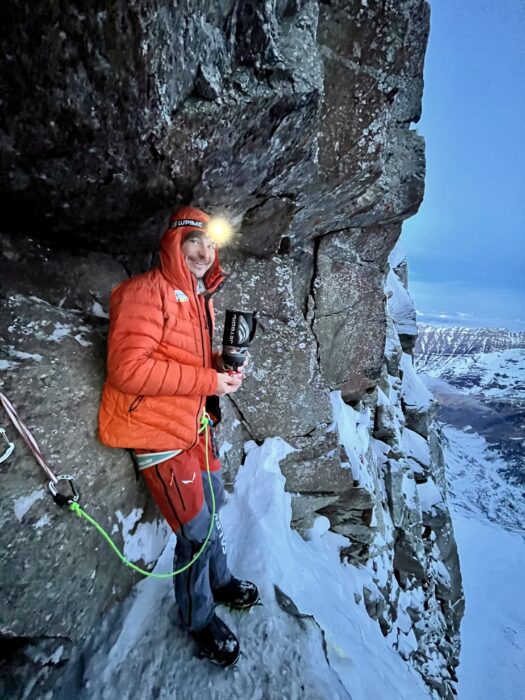
A late friend's dream
"Do not underestimate that wall!" said David Lama, who died with Auer and Jess Roskelley in 2019 in an avalanche in the Canadian Rockies. Lama called the Sagwand north face "the Tyrolean Eiger."
In 2022, Martin Feistl, a rising star in elite Austrian climbing, attempted the route with Amelie Kuehne but had to turn around mid-wall. Yet the challenge fascinated him, and he planned to try again, this time with a three-person team that included Gietl and Sieberer. Unfortunately, Feistl didn't live to make his dream come true. He fell 40m to his death last year while free soloing the south face of the Scharnitzspitze. He was just 27.
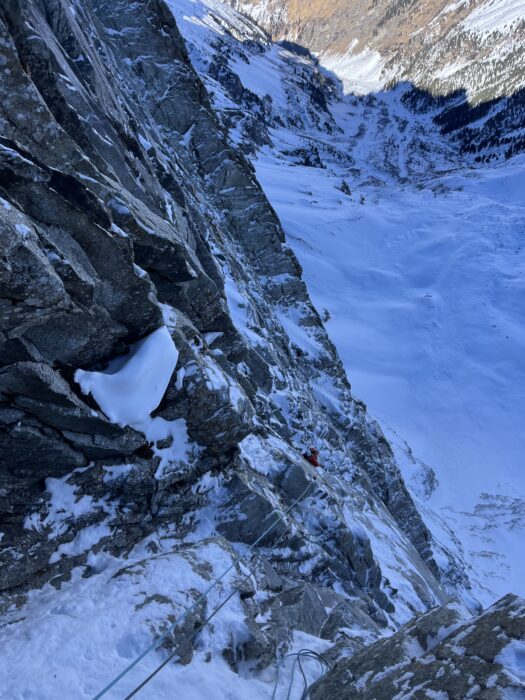
Strangers on the wall
Gietl, from the Italian part of the Tyrol, and Sieberer, from the Austrian side, had never climbed together before. They wanted to take on the project as a memorial to their common friend, Martin Feistl.
"Martin Feistl mobilized Simon and me to join him on the route, and we planned to attempt the climb as soon as conditions allowed," Sieberer told ExplorersWeb.
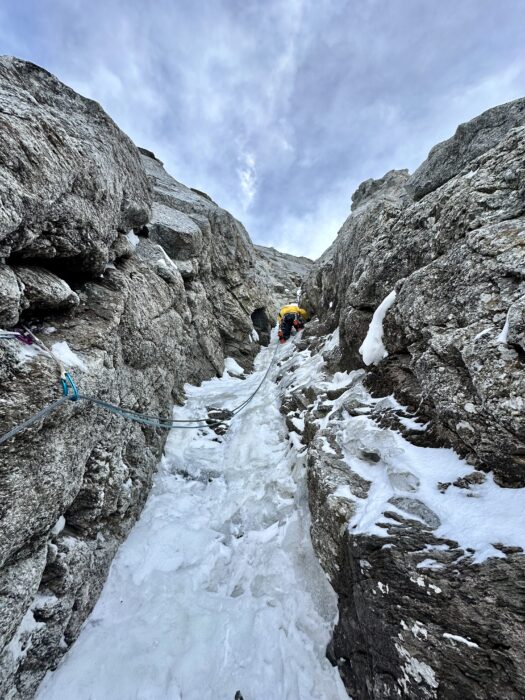
They credit their success in large part to the detailed information that Feistl and Amelie Kuehne shared with them, particularly how to navigate through the maze of rock and icicles on the lower part of the route.
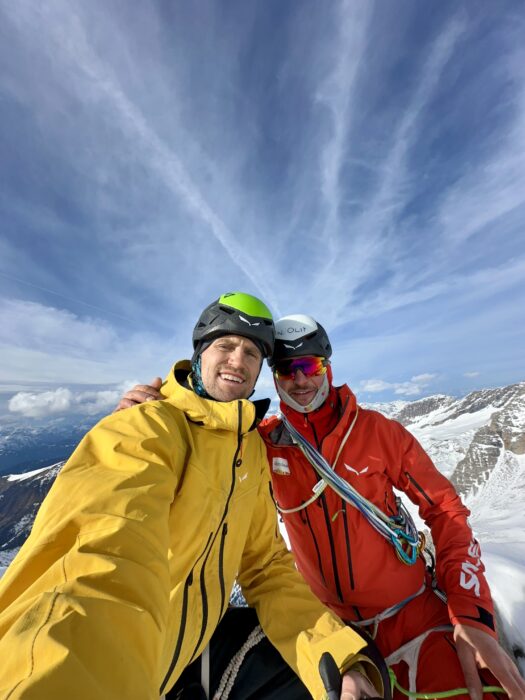
On Saturday, a group of climbers hung a huge U.S. flag upside down from the top of El Capitan in Yosemite National Park.
The inverted flag is considered a sign of distress or an imminent threat to the country. It was displayed as a protest against the massive job cuts affecting a significant number of National Park workers, according to the San Francisco Chronicle.
Also, a fired Yosemite National Park Service worker rappelled down El Capitan to protest the cuts, readers posted on X.
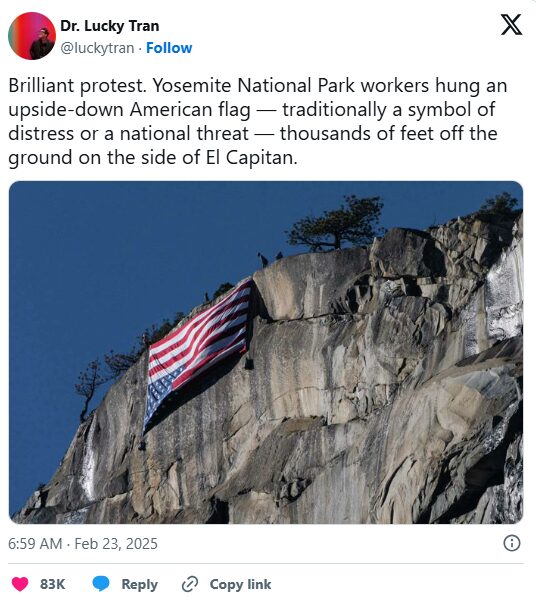
El Capitan had a particularly high number of visitors that day, since many weekenders had come hoping to see the famous "firefall." This impressive optic phenomenon occurs when the evening sun hits the Horsetail Falls on the east side of El Capitan. It transforms the falling water into what looks like fire. El Capitan's firefall only happens in late February, when the position of the sun vis-a-vis the falls is just right.
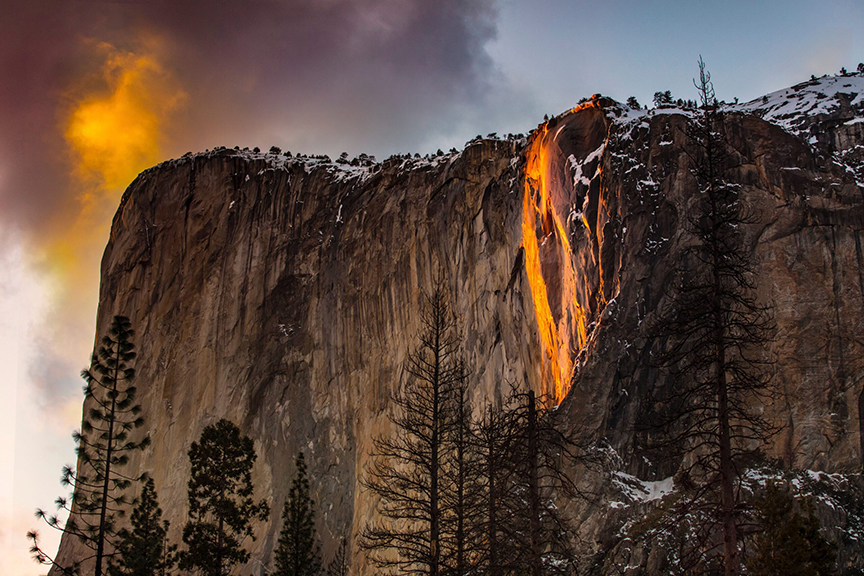
The protesters told the San Francisco Chronicle they were exercising their right to free speech. They wanted to peacefully draw attention to the fact that "public lands in the U.S. are under attack." Through this act, they sought to inform park visitors who might not be aware of the situation.
Outcry against cuts
The Trump administration has fired 1,000 National Park Service employees as part of its broad effort to downsize government, the Associated Press reported. However, AP also reports that the recent outcry has prompted the Federal government to restore a few positions.
Recently, the Search and Rescue Service at Denali National Park has faced severe cuts that could leave the park with only six rescuers to cover 2.4 million hectares.
Instead of a fancy restaurant for Valentine's Day, ice climber Juho Knuuttila of Finland took partner Sara Skoglund to the north face of Breitind in northern Norway. They celebrated February 14 with a new route in conditions possibly more appropriate for Halloween.
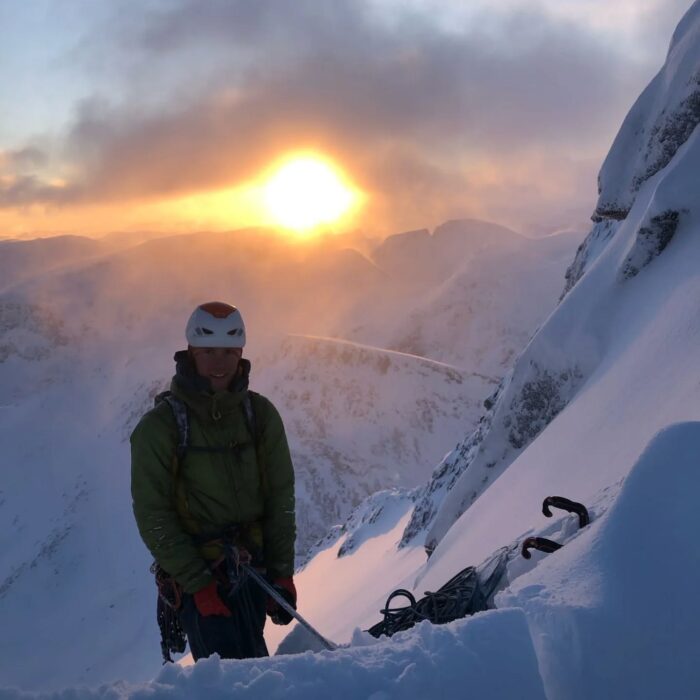
One must admit the location, on Senja island above the Arctic Circle, is romantic in its own frigid way: fiords, the dim light of February at that latitude, and the formidable wall of Breitind coated in a thin layer of verglas. The climber's short report on social media read in part:
We had a double rack of cams. We used two. We had ice screws. We ended up climbing 3cm thick verglass covering slabs. We had nuts and pitons. We were hammering them deeper into icy cracks for safety.
Second route
This is the second route that Knuuttila has opened on Breitind, after he and Sami Modenius climbed Finnjävel in 2022. Thus, he already knew the sort of terrain and the high commitment the climb would involve.
"We got what we expected," he admitted.

Except for a rough topo, below, Knuuttila has not yet posted further details on the route. Skoglund has also not said anything about their memorable date.
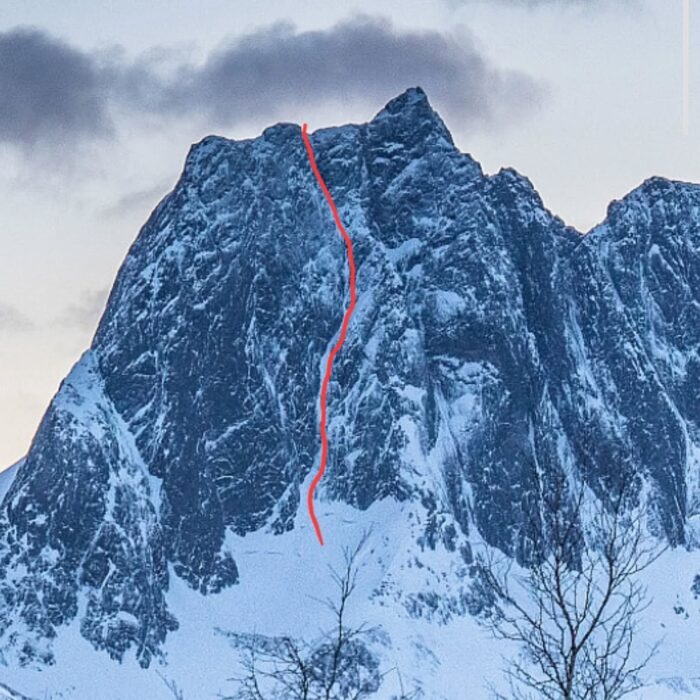
Senja is the second-largest island in Norway outside of the Svalbard archipelago. Breitind, a formidable wall of granite, is the highest peak on the island and the only one (barely) surpassing 1,000m. Its highest northern point is 1,017m. Breitind also has a South peak and a West peak.

I'm halfway up the wall, and I'm in trouble. Excited by the prospect of my first climb outside the confines of the gym where I trained, I neglected to plan my route all the way to the apex of my climb. Instead, on the ground, I chose a likely outcropping and sent it, only to realize 20 meters later that my line terminated in a smooth granite face.
My toes are balanced on a narrow crack just wide enough to support my weight, and my body is pressed against the stone. My arms are outstretched, smearing my torso on the rock face and relying on friction and prayer to keep me upright. I look to my left. There's a tiny knob, maybe a meter away. If I lean and commit, I might catch the knob before gravity catches me. But there's no going back if I do. A butterfly floats by my face. I don't know what to do.
In the video game I'm playing, my character Aava's arms and legs start to tremble, and her breathing quickens. It's the game's way of telling me I'd better master this decision paralysis quickly before I lose my grip and drop to the ground.
In real life, sitting at my desk and staring at my computer screen, my palms start to sweat.
And that's kind of remarkable.
Who are climbing games for?
Climbing games are having a bit of a moment. The game I'm playing, Cairn, is just the latest in a handful that have been released in the last few years. Mostly the province of small and independent game studios, climbing simulators range from fantasy-oriented (Jusant) to hyper-realistic (New Heights). And climbing is a major part of popular adventure games like Uncharted, Tomb Raider, and The Legend of Zelda. Though to be fair, the ascents in those games have about as much to do with real climbing as Indiana Jones has to do with real archaeology.
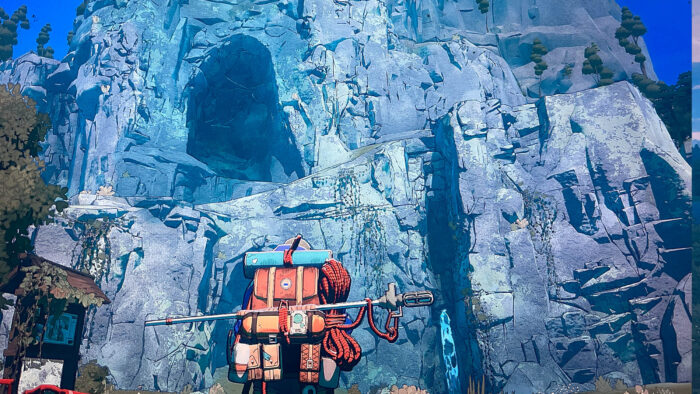
As a long-distance backpacker, mountain biker, trail runner, skier, and general interest outdoor journalist, I often come into contact with (and write about) climbers. I'm also an avid consumer of adventure stories, which means I burn through the mountaineering and climbing shelf at my local library pretty quickly.
But I've never been one to limit my hobbies to one or two categories, and I'll happily blast aliens in shooters (Halo), strategize with friends in fantasy role-playing games (Balder's Gate 3), or sneak around in stealth-based historical settings (Assassan's Creed).
The experiment
And so before picking up Cairn, I had a lot of curiosity about climbing games. Mainly, who are they for? I recognize I'm somewhat of a weirdo in the outdoor adventure world. A lot of people with an outdoor sport pursue it at every opportunity and do limit their other hobbies, especially if they want to excel. They also talk about their sport endlessly (if you've ever chatted up a climber at a party, you know the word "beta" is always only two sentences away.)
So it's hard to imagine a serious climber trading cliff time for a darkened room. It's equally hard to imagine a gamer used to the flowy, absurdly unrealistic climbing mechanics of most video games enjoying a climbing simulator's more grounded approach. I, an outdoor enthusiast with limited climbing experience and a side hobby as a gamer, might just stand in the middle ground.
So, I downloaded the Cairn demo to find out.
Backpacks and robots
The story is simple — a climber named Aava has her sights set on the first summit of the fictitious Mount Kami. That's pretty much it. Get Aava to the top. How you get there is more or less up to you, as my adventure with the smooth granite face showcased.
There are some anachronisms. For one thing, Aava is wearing not a stitch of sponsored gear. Frankly, that comes as a relief to someone who watches as many climbing films as I do. Instead, she's decked out in strange arm and leg wrappings, looking for all the world like an athletic Egyptian mummy. Her pack appears to be of the antique canvas and buckle variety. It's also huge. You really have to admire her raw strength, if not her packing skills.
She also has a little robot helper who takes phone calls and retrieves pitons after she reaches safety, which I imagine would be handy in real life and probably isn't as far away as you think it is, technology-wise. For some reason, this robot, who was supposed to be belaying me, let me fall to my death at least twice. I haven't decided if it's a bug in the demo or the developer's way of imparting the (admittedly sound) advice that you shouldn't trust robots.
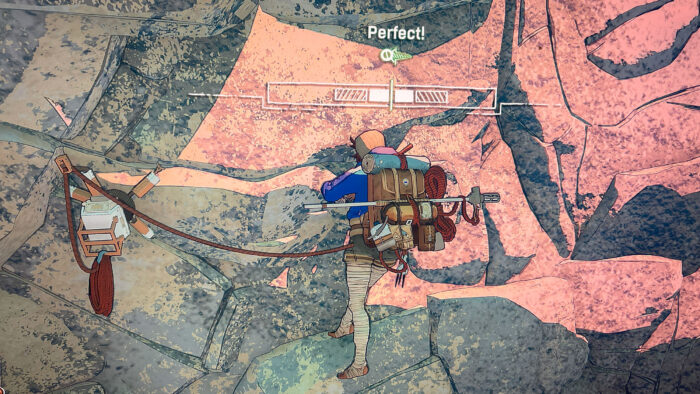
One limb at a time
But beyond that, Cairn is as probably as close to real climbing as you can get without actually climbing. The game lets you control one limb at a time, and you've got to scan the rocks for cracks, ledges, handholds, and toeholds, then carefully reach out for them.
There's no flashing red screen or timer bar to let you know when you've overextended Aava's capabilities, just body animations and sound effects to indicate she's growing taxed. You can use chalk and shake Aava's hands out. You can drive in pitons and give her a break. Put a foot on a dodgy hold, and Aava will slip right off it. Gain a relatively safe ledge, and she'll sigh in relief.
The thrill of rock
My general familiarity with climbing books and films served me well while playing. On one occasion, I was stuck until I looked around and noticed a vertical crack running for a few meters above my head. I stretched, got a hold, and crack-climbed. If I knew nothing about climbing, I might not have known that was possible. Instead, I felt for all the world like the rock-climbing protagonist in a memorable scene from Dan Simmons' silly but nevertheless highly enjoyable sci-fi climbing novel The Abominable.

Cairn's animation is also nicely dialed in, with Aava's movements — the way she reaches out, feels the stone, gets herself into positions, and uses holds — immediately familiar and realistic. There are also some nice little nods to broader outdoor culture. In my few hours playing the game, the only food items Aava has in her pack are noodles and a candy bar that looks suspiciously like the Norwegian chocolate bar Kvikk Lunsj. The developers certainly did their research. Things feel pretty real. Most of the time.

One notch too risky
There was a time, perhaps somewhere halfway through my second or third readthrough of the Jon Krakauer oeuvre, that I thought I might take up climbing. I spent a year at my local bouldering gym before admitting that with a stocky build and shorter-than-average arms, I'm better suited to sports that use gravity rather than fight it. Also, it felt maybe one notch too risky for the expectant father that I was at the time.
But I remember what it felt like to succeed on a line that I thought was beyond me, the thrill of topping out, the frustration of slipping on a hold I thought I had on lock, the excitement that built just before a risky move.
Absurdly, Cairn recreates all these feelings, albeit without the attendant benefits of moving more than your fingers. The game is hard, slow, and frustrating. It's also a lot of fun, so much so that I had to force myself to stop playing and start writing, lest my editor never get this story. And that dichotomy, maybe more than any other element in the game, is what really feels like real climbing.
Sweaty palms
All of which takes me back to my original question.
Who are climbing simulators for?
I've long suspected that most climbers look at climbing-specific video games with a bit of animosity, if not downright loathing. In addition to being a poor substitute for real climbing, I imagined they'd feel frustrated by the details gotten wrong, the movements glossed over, the terminology mangled. An unofficial straw poll of my climbing acquaintances proved me right — they were mostly uninterested in climbing games. Some were openly antagonistic to the very concept.
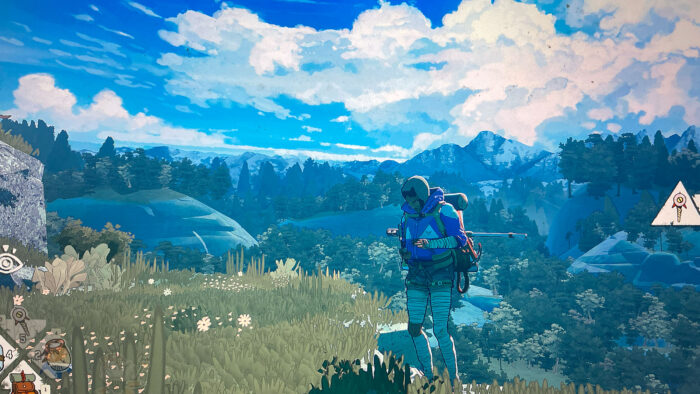
But that might be changing, in part because climbing simulators like Cairn are getting better at getting those details right. My friend and colleague Sam Anderson, climber and writer of many excellent ExplorersWeb stories, told me he's recently changed his tune.
"I've been meaning to try a climbing game. Some of the crust has flaked off my opinion that they are wack, invalid, etc. I no longer feel the impulse to shit on them in any conversation in which they come up," he said.
The gaming crowd
As for the gaming crowd, well, there certainly seems to be an audience. For one thing, developers pay close attention to trends and download numbers, and new climbing games wouldn't keep being released if every single one was tanking. Jusant, for instance, has nearly 3,000 "very positive" reviews on the Steam platform.
But perhaps the real audience for Cairn and games like it is, well, me and others like me. I'm fascinated by climbing and mountaineering; I read the books, attend the film festivals, and spend a lot of time internally dissecting the motivations and powerful impulses that propel climbers upward. At the same time, I'm quite happy with my current sports and their risk/safety quotients. I have no desire to have a friend stand at my funeral and say, "He died doing what he loved."
Instead, I'm satisfied, pleased even, to dip a toe into the world of granite and clouds safely from behind my computer. In that sense it's not all that different from reading a climbing book or watching a film, two activities that many non-climbers participate in.
The drawback? Cairn isn't a real story. The benefit? You feel, at least in some ways, like you're doing something you know you'll never do in real life. Sweaty palms and all.
New Year's Eve on a snowy peak under a starry sky: It sounds like the perfect way to ring in the New Year. But tragedy doesn't take a vacation over the holidays. As some toasted the evening with friends in a warm venue, two separate outings in Spain and Italy ended in disaster.
The bivouac influencer
Gerard Olive built himself a high profile on Instagram by specializing in "extreme bivouacs." His handle, Xutonthetop, had 52,000 followers. Photos and videos showed him tucked in a sleeping bag on mountaintops, grassy plains, and snowy terraces, accompanied by typical influencer verbiage about freedom, overcoming limits, etc.
One bivy, in particular, went viral. In 2022, he strung a hammock between two granite outcrops on the Salenques-Tempestades ridge in the Pyrenees.
The two-kilometer-long ridge has several exposed passages and is the most technical route to reach 3,404m Aneto, the highest peak in the Pyrenees. When dry, it involves sections up to 5+ (UIAA grade) on excellent granite.
In winter, the scenery changes radically. Hard snow and ice plaster the rock, and the climb becomes a serious challenge requiring advanced mixed climbing skills. In Olive's mind, it would mark a perfect finale to his 2024 bivvies. He would repeat the 2022 hammock stunt in winter.
The last climb
On December 30, the influencer left his car in a parking area in the Pyrenean village of Benasque and walked to an untended alpine hut. Here, he met a Mexican climber, the last person to see him alive. On the following morning, he left by himself toward the Llosas Valley, on the south side of the Aneto massif.
His family became worried when he failed to return home on January 2. The GREIM, the Spanish Mountain Rescue service, started searching on January 3, but the helicopter couldn't survey the area properly due to cloudy weather.
No one knows for sure the route he might have taken. Local climber Jonatan Garcia, one of the most prolific climbers in the area -- someone who has soloed the Salenques-Tempestades 50 times -- tried to duplicate a possible route Olive might have taken.
There was no trace of him on the south face of Aneto. He surely fell down the ridge at some point, north of Aneto. Garcia shared his opinion about Olive's route with the helicopter pilots. The following morning, they searched that area and found Olive's lifeless body.

Deadly traverse
"I don't think Gerard [Olive] planned to climb the entire ridge on his own, as he was not that experienced," said Garcia. "Rather, he tried to access the ridge at his planned bivy point by traversing from the summit of nearby Margalida Peak."
The problem, Garcia said, is that this traverse is exposed and difficult even in summer. The terrain alternates between smooth rock slabs and a very steep, slippery grassy ramp.
"In winter, it is worse," Garcia went on. "With fresh snow, it's avalanche-prone and requires progressing on very hard snow or ice, with...no mistakes allowed."
Social media pressure
Garcia thinks Olive's heavy backpack, with his bivouac gear and cameras, might have been a burden. Rescuers found his stuff scattered along the slope. The hammock was still perfectly folded; he probably had no chance to use it.
"Social media is a double-edged sword," Garcia told ExplorersWeb. "It gives updated information about routes and areas, which has a positive impact on safety. But it also has a darker side. Some people feel too much pressure to increase their followers, even if that means taking excessive risks.
"Also, the positive feedback boosts self-confidence, in some cases beyond what is sensible," he added.
Another tragedy, this time in Italy
No one noticed something had gone wrong for Aziz Ziriat, 36, and Sam Harris, 35, until they failed to catch their flight back home to London on January 6. The two friends were hiking the Adamello Massif in the Italian Alps.
"The family knew the climbers intended to use the Malga Dosson bivouac (2,360m) on New Year's Eve and then hike in the area for a couple of days before descending to the valley and going straight to the airport," Monica Malfatti, press manager of Trentino Alpine Rescue Services, told ExplorersWeb. "It seems like they wanted to reach the Rifugio Care Alto, but they got lost due to foggy weather."

Once the alarm was raised, Scorso Alpine Services launched a search, but conditions were difficult. There was a notable avalanche risk, and helicopters and drones couldn't see much in the fog. Volunteers used quads to search the trails leading to refuges where the missing hikers might have found shelter.

Backpack found
On Wednesday, with slightly better conditions, the helicopter took a team of rescuers to the Malga Dosson hut while the pilots searched further above. They found the backpacks of the missing climbers at the hut. The rescuers also located the last ping from one of the climber's cell phones near Conca Pass, at about 2,600m.
The helicopters airlifted 15 rescuers to the area, and they started searching on foot with snow probes. Shortly after noon, they found the body of one of the climbers, soon identified as Sam Harris.
"[It] was found under the snow, at the foot of a rock face, at the base of the south face of Carè Alto," stated a press release by the Scorso Alpino Trentino. "The dynamics of the accident are still being examined by the police, but it is possible that the mountaineer fell from above."
Efforts then focused on finding the second climber, but deteriorating weather soon suspended the search. Because of the high risk of avalanches, helicopters flew everyone back to the valley. The search will hopefully resume tomorrow, Friday, weather permitting.

Not about experience
Asked by Explorersweb, members of the Italian Mountain Rescue Service admitted that winter holiday rescues have become more frequent because people have more free time to spend in the mountains.
"People want to discover something different during the holidays, but the accidents during this time may involve both inexperienced and very experienced climbers and hikers," said Simone Alessandrini of the press office at the Italian Mountain Rescue Service.
It's the conditions that are different: Frozen terrain, cold, unstable weather, and shorter days make winter forays more liable to go wrong than their summer equivalents.
Alessandrini mentioned a spectacular rescue that took place on the Lastoni di Formin in the Belluno Dolomites on New Year's Eve. This one had a positive outcome. Three young climbers took the wrong rappel line while climbing the Re Artù route.
Stranded for hours
"They began their rappel but ended up stranded — two of them about 60 meters below the summit and the third about 20 meters lower," Alessandrini said.
The rescue took from 5 pm until after midnight.
"After several unsuccessful attempts to approach the overhanging area where the climbers were stuck, the helicopter dropped off a Belluno rescuer and its own technical rescuer on the summit, at an altitude of 2,630m. It then flew back to the valley to pick up a team of four additional rescuers."
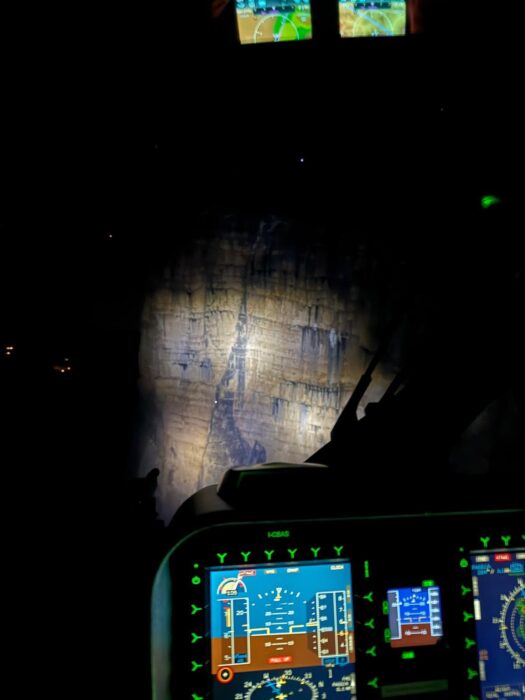
The team worked in subzero temperatures, setting up a rappel system to reach the stranded climbers and lifting them back up to the summit. They then all descended the normal route of the peak until they reached a flat area where the helicopter could land.
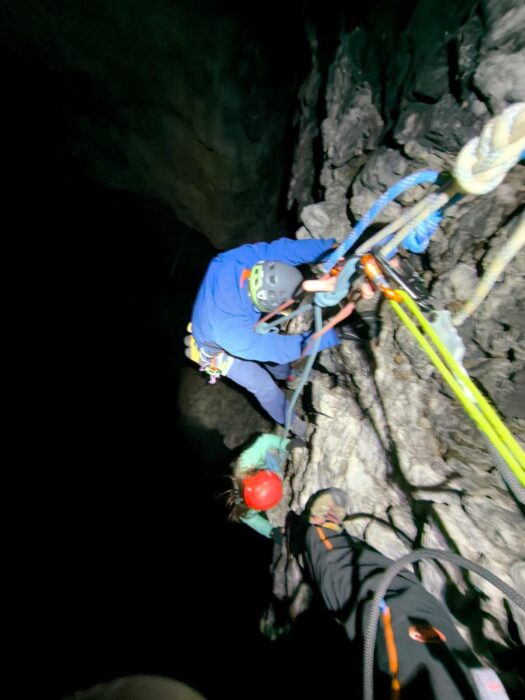
Four climbers have opened a new route on the south side of 5,740m Simon Bolivar Peak in Colombia. According to them, it is the country's highest mountain. Neighboring Pico Cristobal Colon is almost the same altitude and vies for that distinction, but the four of them also summited that peak earlier on the same 18-hour day and say that Simon Bolivar is slightly higher.
Ricardo Rubio, Salomon Torres, Brian Kalet, and Alexander Chaves climbed the little-known giant via a new 250m line on the south face. They set out from an Advanced Base Camp pitched on the Colon Glacier at 4,750m. Getting to their starting point took them several days of trekking through jungles and across glaciers on an old-fashioned expedition supported by many local porters. The new M5, 5.9 route starts from the col separating the two peaks and goes up mixed terrain, they told Desnivel.
"We set off from ABC at 00:30 on December 18, navigated the Colon Glacier, and summited Colon's peak (5,730m) at 6 am," Alexander Chaves reported on Instagram.
They then retreated to the saddle separating the two mountains and went up the south face of Simon Bolivar via a mixed route. They summited at noon and had returned to Advanced Base Camp by 7:30 pm.
The climb drew our attention not because of its difficulty or size but because it featured a mountain range we had not previously written about.
Glaciers of the Caribbean
When thinking of South American mountains, the Andes and Patagonia first come to mind, but the continent hosts several other massifs with peaks surpassing 5,000m. Among them, the Sierra Nevada de Santa Marta on Colombia's Caribbean coast is particularly unusual.
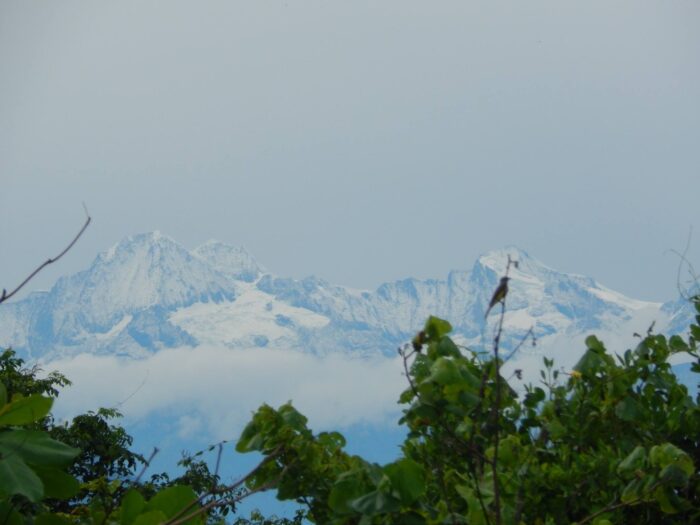
Isolated from the Andes by two river valleys, the Santa Marta range rises right from the shores of the Caribbean. It is the second-highest coastal range in the world after the Mt. Saint Elias range on the Canada-U.S. border. It lies in a Biosphere Reserve, and after troubled years of guerrillas and narcos, it now offers safer access to trekkers and climbers. Its landscape varies from tropical beaches to glaciers on the highest peaks, with jungle, rainforest, and high moors in between.
The debate on whether Simon Bolivar or Colon is the country's highest peak remains open. Note, however, that another Simon Bolivar Peak (5,007m) is the highest mountain in Venezuela.
In the last week and a half, we have done our best to present a list of the 10 best outdoor expeditions of 2024 among the hundreds we have covered at ExplorersWeb. We are aware we have probably failed at the task.
Setting a "best" among climbs, treks, polar expeditions, kayak adventures, and others, each of them unique, is difficult. We still publish the list every year, accepting that opinions will differ, as a way to congratulate those who've stepped out of the ordinary, inspired us to work harder, and excited us about our own future adventures.
Yet a list of 10 is so few. There are so many more we would have wanted to have on that list! The least we can do is to mention many more worthy projects that we couldn't include -- in chronological order, to avoid all signs of classification. It proves that adventure is far from over; there is still a lot left to do. We look forward to covering it in 2025.
Winter 2024
In January 2024, Jeff Mercier, Greg Boswell, and Hamish Frost completed several hard Scottish winter routes, following the philosophy of "the harder, the better."
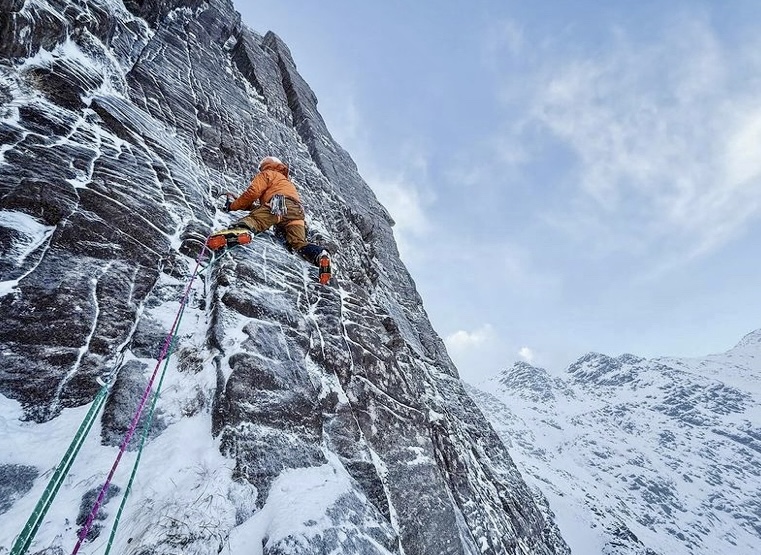
January 31: Historic Dru-Droites-Jorasses Trilogy The winter feats started in the Alps, thanks to one of the prominent climbers of the year: Benjamin Vedrines of France. Together with good friend Leo Billon, he climbed the three big North Faces of the Alps -- the Drus, the Droites, and the Grandes Jorasses -- in winter, onsight, all free climbing in one continuous push without bivouacs on the wall, in just three days.

February 13. Two weeks later, Guillaume Pierrel -- somehow -- skied down the north face of the Dru.
February 19. Great news from Patagonia: ‘Riders on the Storm’ on Torres del Paine was finally free-climbed. After 18 days on the sheer face of the Central Tower, Sean Villanueva O’Driscoll, Nico Favresse, Siebe Vanhee, and Drew Smith free-climbed the legendary route 33 years after a German team first opened it.

After the feat, O'Driscoll still didn't feel up to going home and returned to Torres del Paine and soloed the complete Skyline Traverse of the four Torres del Paine between February 22-25.
Spring 2024
May 17. Jim Morrison, Christina Lustenberger, and Chantel Astorga completed the first ski descent of the Great Trango Tower in Pakistan's Karakoram. The famous granite spire (6,286m) draws big wall climbers, not skiers. Yet this team managed to find a continuous line of snow, waited for the right conditions in early spring, and sent it. A month later, Lustenberg and Guillaume Pierrel joined forces for a scary ski descent on New Zealand's Aoraki/Mount Cook.
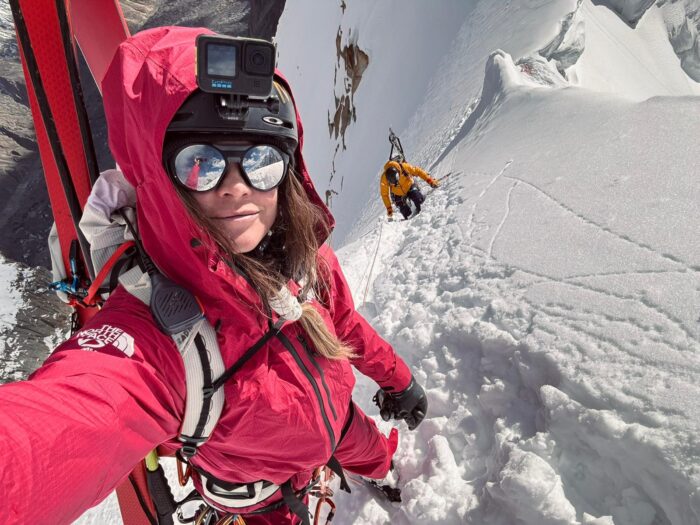
May 24. During the height of the 8,000m season, news came of a new route climbed alpine style on a Nepalese 7,000'er. Charles Dubouloz and Simon Welfringer opened a beautiful new line on 7,029m Hungchi in the Khumbu.
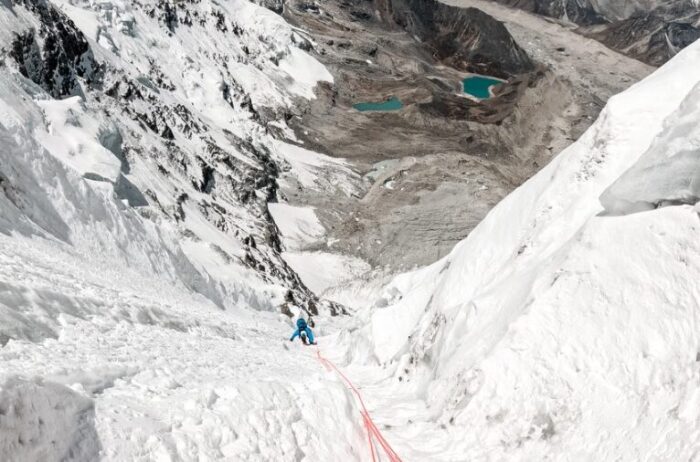
May 29. On Kangchenjunga, Bartek Ziemski of Poland made a complete ski descent after summiting without oxygen in difficult conditions. He teamed up with Oswald Pereira, who climbed on foot.
Summer 2024
July. During the summer, attention focused on K2, where alpine-style teams attempted new routes. Most of all, Kayuza Hiraide and Kenro Nakajima made an incredibly bold but ultimately fatal attempt on the West Face. In addition to climbing, paragliders Sebastian Kawa and Sebastian Lampart of Poland took off from Skardu and soared over K2 and Masherbrum.
Also in July, Micha Rinn and Christian Bickel made the first complete Skyline Traverse of all the summits in the Italian Dolomites.
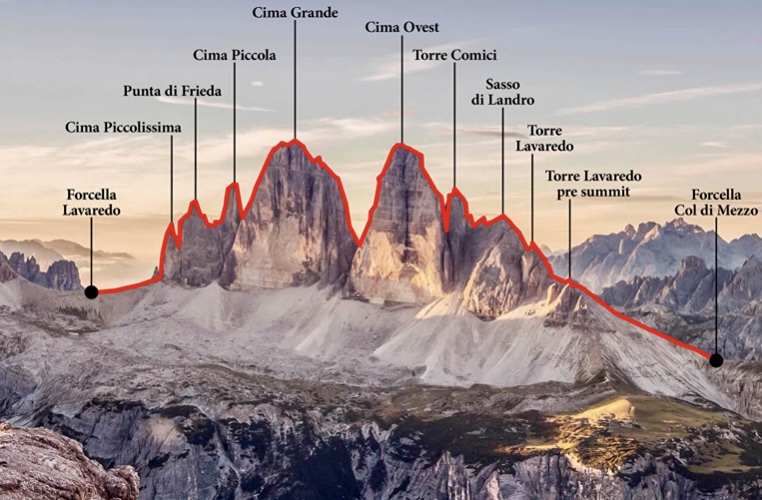
July 28. Also impressive was Benjamin Vedrines and Jean-Yves Fredriksen's no-O2 summit of K2 and paragliding descent. Vedrines also set a mind-blowing speed record by climbing from Base Camp to summit in 11 hours. Liv Sansoz and Zeb Roche also flew down in a tandem paraglider.
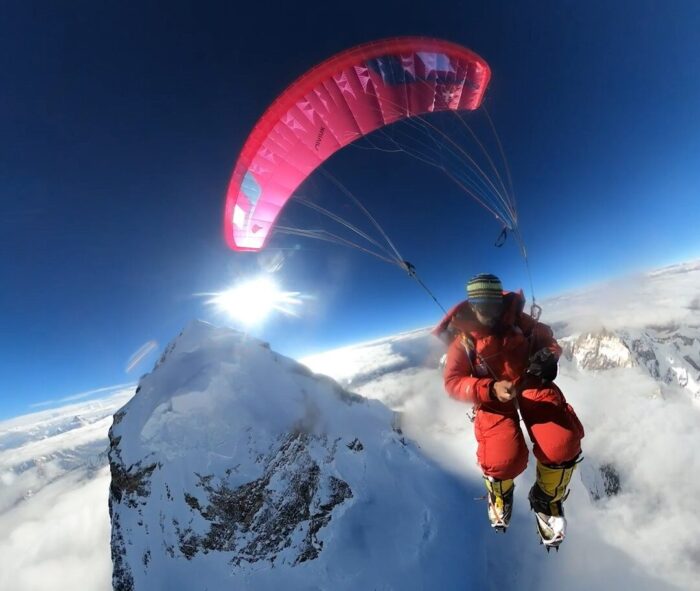
Professional paraglider Chrigel Maurer and mountain guide Peter von Kanel, both from Switzerland, climbed all 82 of the 4,000m peaks in the Alps in 51 days. They became the first to link all 82 peaks by paraglider.

This summer, an international team composed of Masha Gordon, Oswaldo Freire, Jack Sturm, and Joshua Jarrin made three first ascents in 30 days in the Shimshal Valley in northern Pakistan.
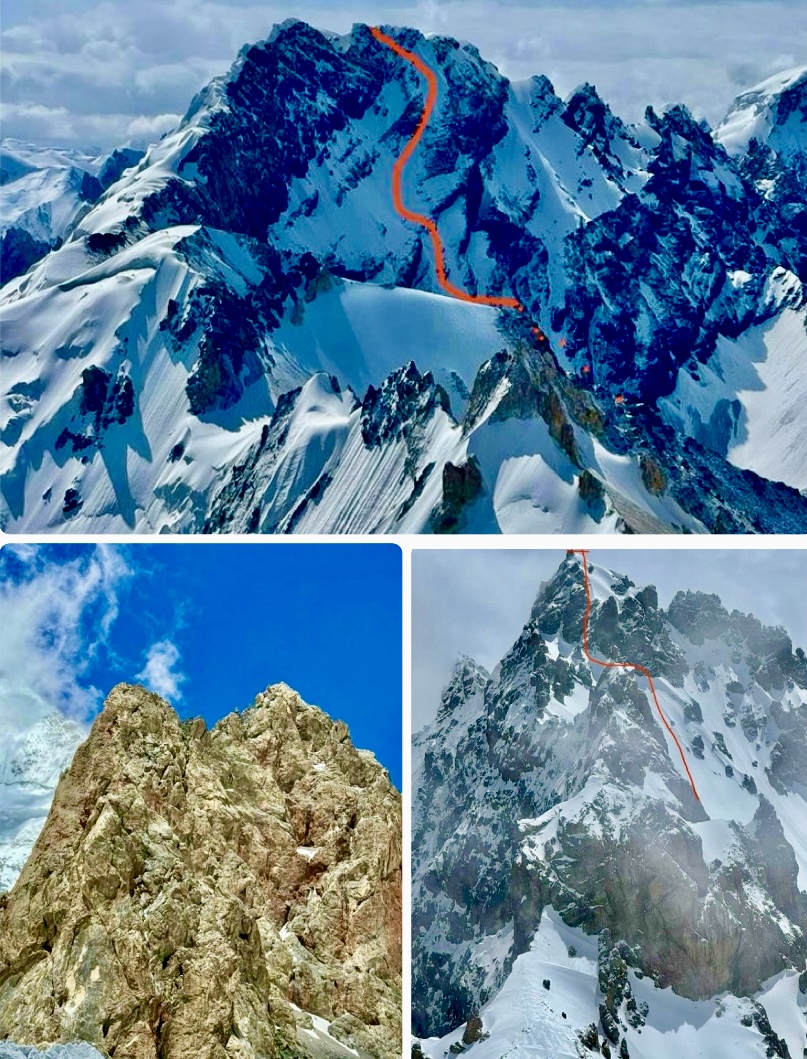
August 7. In the Pamirs, Olga Lukashenko, Anastasia Kozlova, and Darya Serupova of Russia opened two new routes on the Ashat Wall in Kyrgyzstan's Gissaro-Alai.
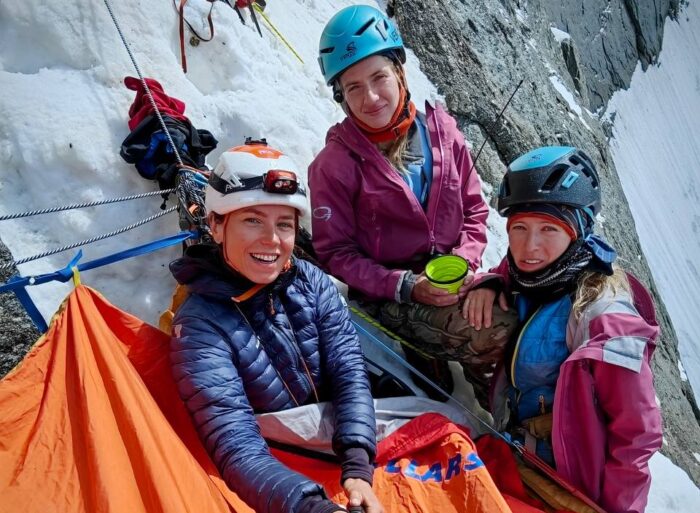
August 10. Philip de-Beger, Lorenzo Heis, and Aleksi Mujirishvili made the first ascent of 6,497m Virgerab Sar in the Karakoram.
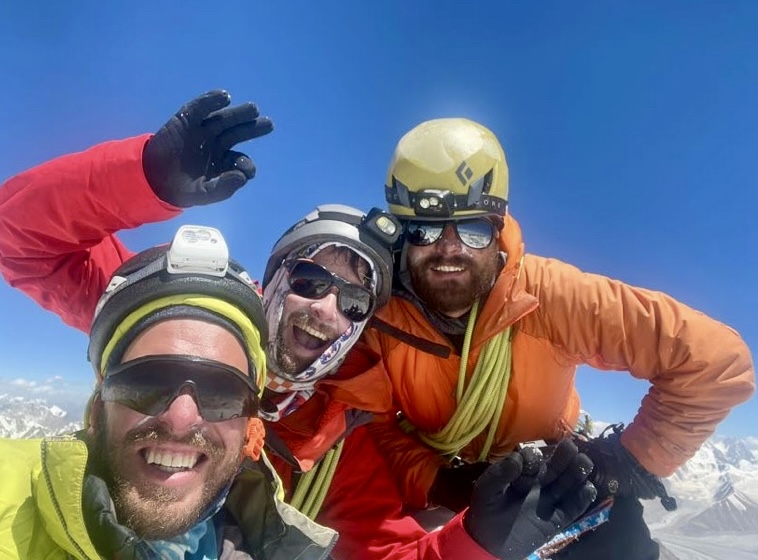
August 13. Liu Yang and Song Yuancheng made the first ascent of the fourth-highest unclimbed mountain in the world: 7,221m Karjiang I on the Tibet-Bhutan border.
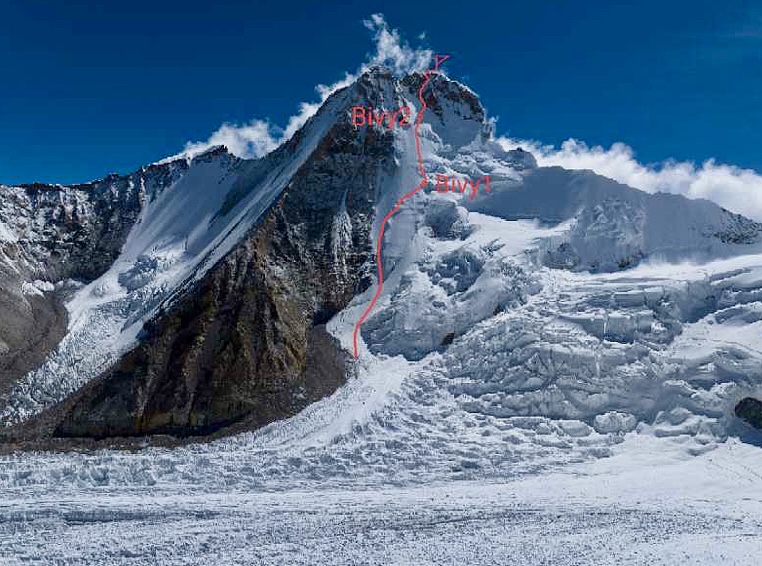
August 17. Mike Keen pulled into Qaanaaq, North West Greenland, after completing the final leg of his 3,200km kayak along the Greenland coast.

Later in August, Zach Fritz and Taylor Rau paddled 4,400km from Fritz’s family cabin in Minnesota’s North Woods to Chantrey Inlet, Nunavut, on the shores of the Arctic Ocean.

Matteo Della Bordella, Symon Welfringer, Silvan Schupbach, and Alex Gammeter made the first ascent of Droneren, a remote 1,980m wall in East Greenland. But the climb was only part of the adventure. They spent 33 days in the Arctic, kayaked 450km, then climbed 35 pitches on a wall with difficulties up to 7b in pure trad style. They also had four encounters with polar bears.
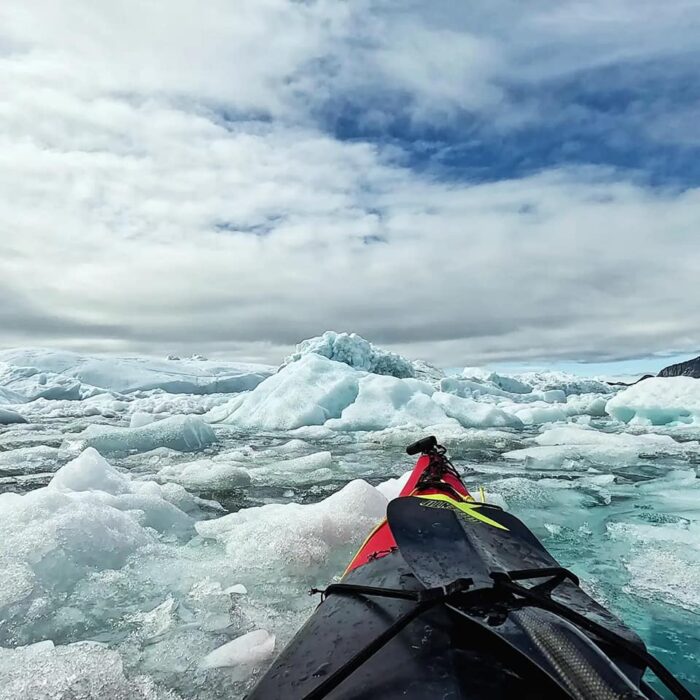
In late summer, Matteo de Zaiacomo and Chiara Gusmeroli made the first ascent of 5,300m Sckem Braq, a technical granite tower in Pakistan's Nangma Valley.
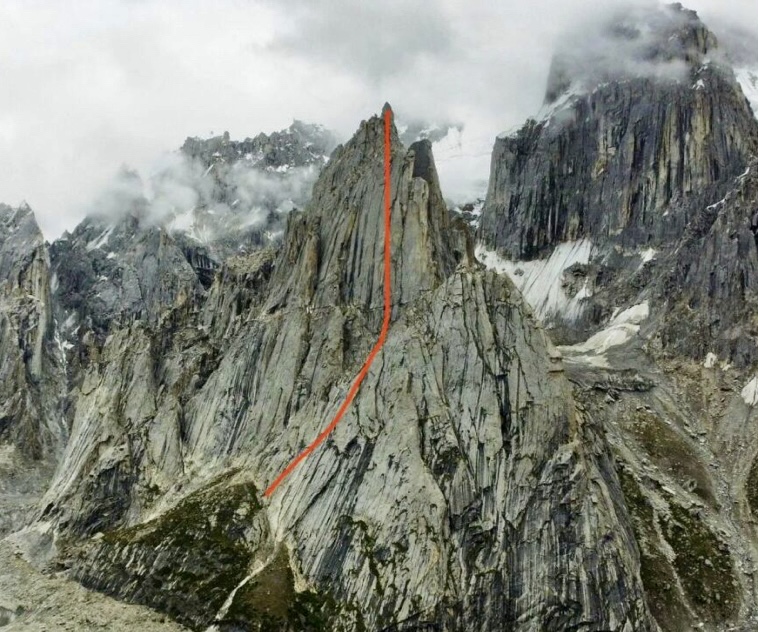
September 7. Nicolas Roulx and Catherine Chagnon completed their mammoth 140-day journey across Canada from west to east. The duo cycled, canoed, sailed, and hiked the 6,900km.
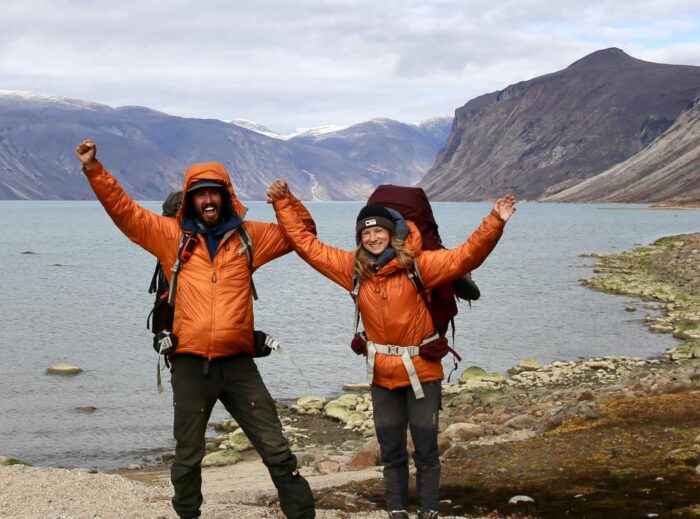
September 14. Veteran badass climbers Mick Fowler, 68, and Victor Saunders, 74, made the first ascent of 6,258m Yawash Sar in Pakistan. They climbed a new route on the northwest face in their usual elegant, alpine style.
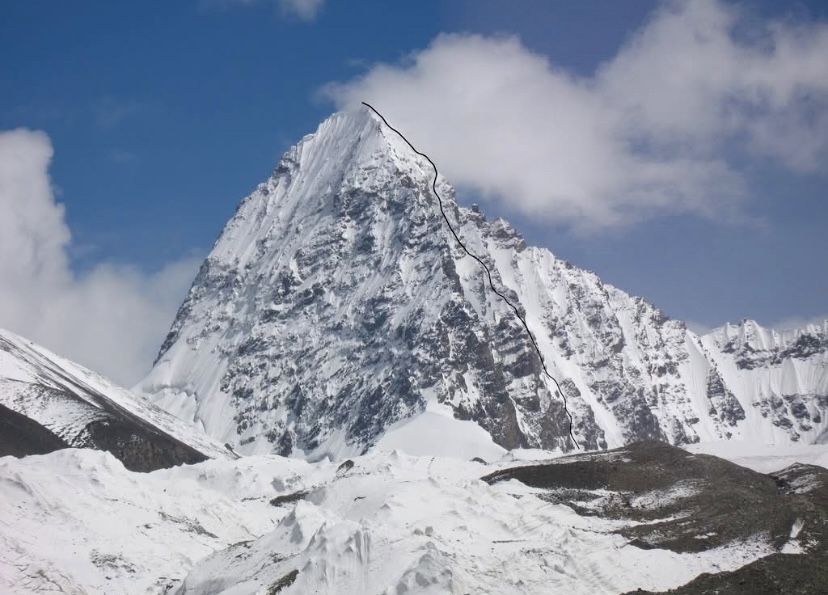
In October, Japanese teams made several notable ascents. One group from the Japanese Alpine Club made the first ascent of 6,524m Phungi near Manaslu. Another team from Himalaya Camp made the first ascent of 6,207m Sanctuary Peak in western Nepal.
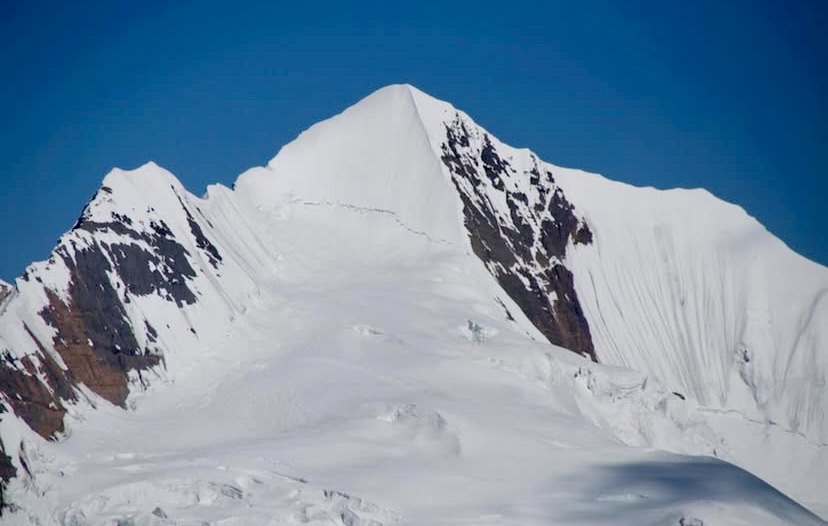
A few weeks later, two other Japanese teams succeeded in Nepal. Akihiro Oishi, Hiroki Suzuki, and Suguru Takayanagi made the second ascent of the northeast face of 6,673m Pandra near Kangchenjunga. Also in the Kangchenjunga region, Hidesuke Taneishi and Hiroki Yamamoto made the first ascent of 6,652m Pholesobi peak via a 1,500m ED+ direct line on the north face.
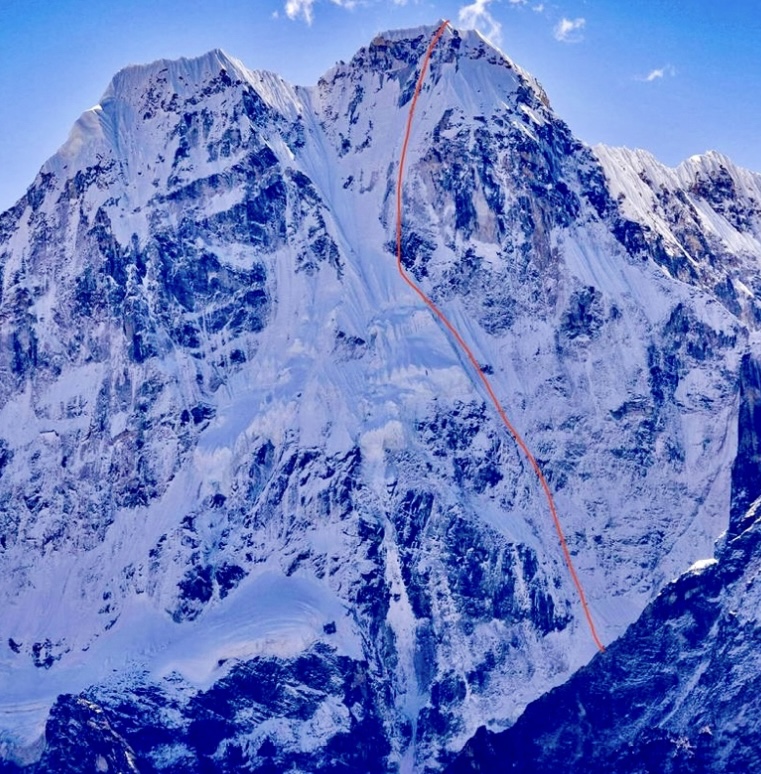
Adam Bielecki of Poland and Louis Rousseau of Canada went to the Hunza Valley in Pakistan’s Gilgit-Baltistan region. While they failed to climb their main goal (a first ascent of one of the area's 6,000'ers), they completed two first ascents of nearby unnamed peaks during the acclimatization phase.
Poor conditions prevented Mykyta Balabanov and Mykhailo Fomin of Ukraine from climbing a new route on Makalu. Looking for a Plan B, they moved to Ama Dablam and pioneered a new route up the lonely West Face.
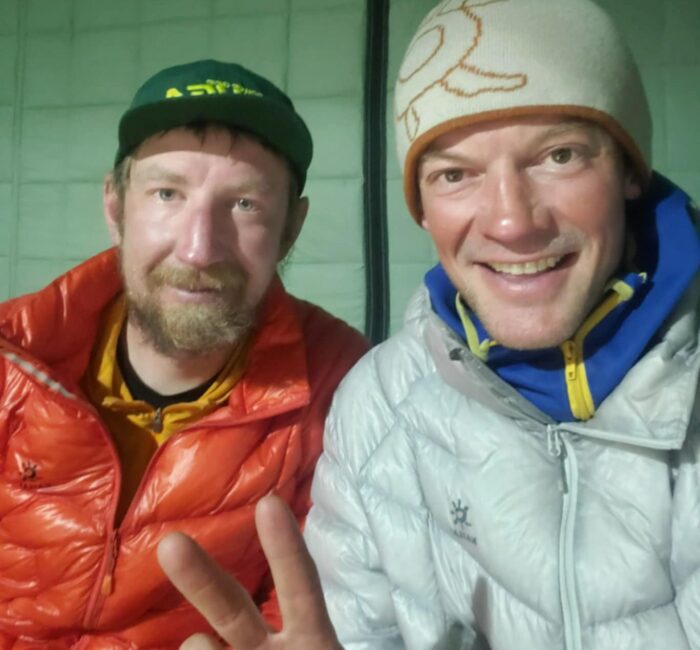
Hybrid is not the hardest mixed route Simon Gietl has opened, but it's definitely one of the most beautiful, he told ExplorersWeb.
Gietl opened the new line last weekend at the Pisciadu wall in the Sella Dolomites. The route includes sections up to M8 and requires considerable mental strength.
How it happened
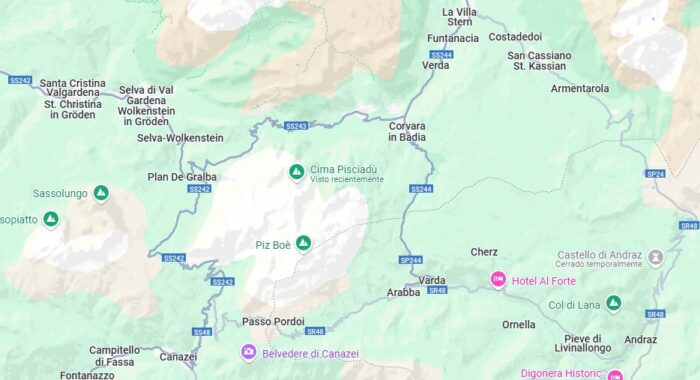
It all started with a car accident, the South Tyrolean mountain guide Manuel Oberarzbacher explained. He and Simon Gietl were driving to the ice-climbing walls when their car slipped on the icy road and spun out into the snowy roadside. It took them two hours to free it. It spoiled the climbing day, but the two men had time to discuss potential projects over a cup of coffee.
Oberarzbacher mentioned the so-called Schwartze Wand (Black Wall) on Groedner Joch, a summer route on the Mur de Pisciadu, near Gardena Pass in the Dolomites. Winter conditions were reportedly excellent. "Why not try something new [there]?" Oberarzbacher suggested.
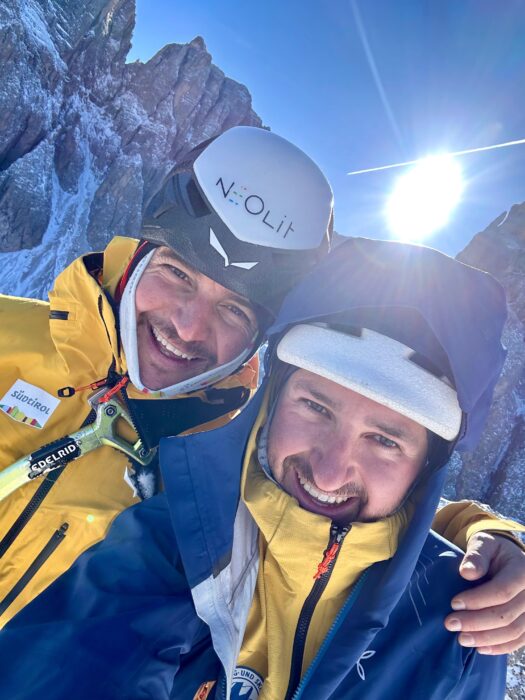
On December 9, the pair went to the base of the wall and set off right away. "The beginning was promising," Oberarzbacher wrote. "Beautiful, positive holes and ledges."
They made rapid progress, but as soon as they reached the ice, they realized that they had forgotten their ice screws.
That was how a second good climbing day was also ruined.
The next chance came on December 12.
On the wall
This time, Oberarzbacher and Gietl were prepared and equipped. They started to the left of the Schwartze Wand. After a quick first pitch, they got to the real work on the second pitch, with sections of mixed climbing (M8) and ice (WI6). The climbers recall the third pitch as an enjoyable, beautiful part completely on ice (WI5+). The crux was right ahead, on the fourth pitch.
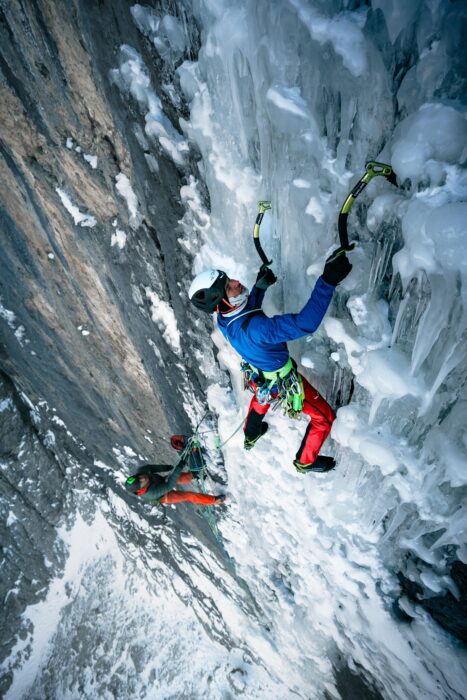
The fourth rope length was the most difficult, said the climbers. It followed a crack that took them right under a cluster of free-hanging icicles they had to cross.
"The fourth rope length was the key to the entire route," Oberarzbacher said. "Technically demanding, it required determined climbing and absolute focus."
The route ended at the top of the icicles, totaling 100m of climbing. Difficulty grades, pitch by pitch, are M5, M8/WI6, WI5+, M8+/WI5+. Oberarzbacher and Gietl free-climbed the route entirely, with some Friends and six ice screws but no bolts. As PlanetMountain notes, it is a "modern" route that includes long sections on compact rock, alternating with the little ice adhering to the cracks and ledges.
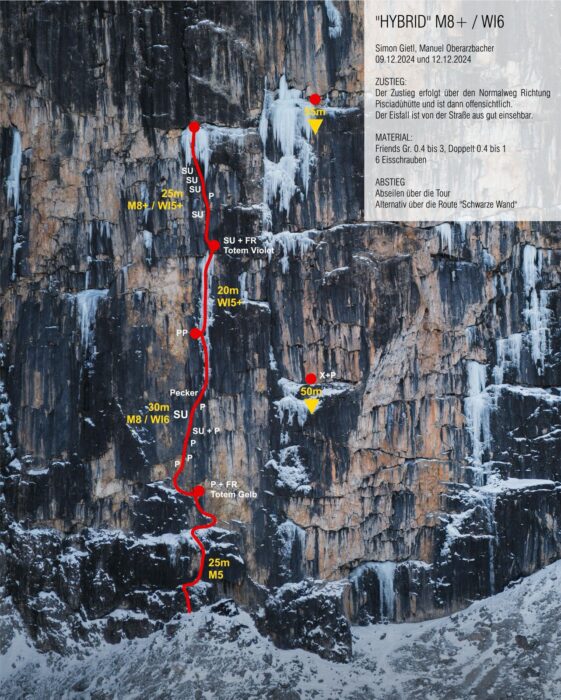
The community repeats and approves
Gietl's Instagram posts about the new route drew admiring comments from Quentin Roberts, Francois Cazzanelli, and many others. Yet Gietl especially values the verdict from the first pairs who repeated Hybrid a few days later. They were demanding judges, but the verdict was enthusiastic.
Local climbers Alex Piazzalunga and Daniel Ladurner were the first to try the new line, and they sent it on the first try.
"The name reflects the characteristics of the [beautiful] route, a perfect mix of rock and glacier drawn on the wall of the Pisciadu," Piazzalunga noted.
The second pair were Scottish aces Greg Boswell and Jonathan Joly, who were spending a week ice climbing in the Dolomites. After the climb, Boswell wrote, "So good. Thanks for the creation. It made us very happy!"
Boswell also posted a video and commented on his own social media:
The 2024 edition of the Piolets d'Or awards is taking place over the next few days in San Martino di Castrozza in the Italian Dolomites. Organized by the Group de Haute Montagne, a Piolet d'Or been the most prestigious recognition in mountaineering since the awards began in 1992. Piolet d'Or is French for "Golden Ice Axe."
The Piolets d'Or originally promoted French alpinism and awarded a single climb as the best of the previous year. Since then, it has evolved to be more international. A crisis in 2007-08 caused by the aversion of many climbers to competition prompted a rethinking.
Now, several climbs are recognized each year for their excellence. The committee also introduced a Lifetime Achievement award. The first recipient was Walter Bonatti, and the second was Reinhold Messner. This year, it will go to Jordi Corominas of Spain.
The latest addition is a special mention for female mountaineering, given this year to Nives Meroi of Italy.

At ExplorersWeb, when we introduce a climber as a Piolet d'Or recipient, it implies that this person is a highly skilled alpinist with an impressive record of alpine-style climbs. Alpine style signifies a particularly pure form of climbing, where small teams attempt difficult goals in a minimalist way.
Who judges these awards, and what criteria do they use?
What makes a 'good' climb?
Social media boasts enthusiastic claims of mountaineering "records" and "historic feats." Yet publicly celebrated climbers like Nirmal Purja and Kristin Harila, the two fastest to climb all 14 8,000m peaks, were not even nominated for their achievements. Nor have extreme athletes with unquestioned skills and worldwide fame, such as Kilian Jornet. Meanwhile, Paul Ramsden of the UK holds a record five Piolets d'Or but is little known beyond the community of hard-core alpinists.

This year, three teams will receive one of these coveted Piolets d'Or:
- Americans Matt Cornell, Jackson Marvell, and Alan Rousseau for a new route on the North Face of Mount Jannu in Nepal's Kangchenjunga region.
- Hugo Beguin, Matthias Gribi, and Nathan Monard of Switzerland for a new route on a 6,000m peak in the Indian Himalaya.
- Kazuya Hiraide and Kenro Nakajima of Japan will receive theirs posthumously for the first ascent in 2023 of the North Face of Tirich Mir in Pakistan. It will be the fourth Piolet d'Or for Hiraide and the third for Nakajima. Sadly, both perished earlier this year while trying to open a new alpine-style route on the West Face of K2. True to a pure mountaineering style, they were attempting this bold new line on the world's second-highest peak without previously fixed ropes or camps, in a single push from base to summit, just two men alone on unknown terrain.
"The awards aim to celebrate commitment, the taste for adventure, and the sense of exploration," the organizers state on the Piolet d'Or website. The summit matters less than how the climbers attempt to reach it.
Sending a message
According to the organizers, the goal is not merely to award the best climbs.
"The purpose [is] to use these ascents to promote clear ethical messages regarding our practices as alpinists around the world, in line with the UNESCO classification of alpinism as an intangible cultural heritage," the Piolets d'Or organizers state.
Each year features many remarkable climbs from around the world. Previously, the jury came out with a shortlist, then chose two or three award winners from them. Recently, they have decided to highlight all significant ascents. This year, the list includes over 50 expeditions. In an environment as variable as the mountains, picking two or three among these seems anything but easy.
Their criteria include style, level of commitment and self-sufficiency, the spirit of exploration, and the technical ability required, among others. The jury also factors in respect for other climbers, local communities, and the environment, as well as how the teams try to minimize resources.
Not everyone happy
Not everyone in the mountaineering community loves the Piolets d'Or. Some climbers dislike the whole idea that one climb is somehow better than another and refuse to accept an award if given; others ask the jury not to nominate them.
The committee tries to avoid the flavor of winners and losers and instead promotes a collective celebration of excellence in alpinism. That is why the selected climbs are announced in advance. However, the awards are still a great distinction, and of course, the climbers' sponsors love them.
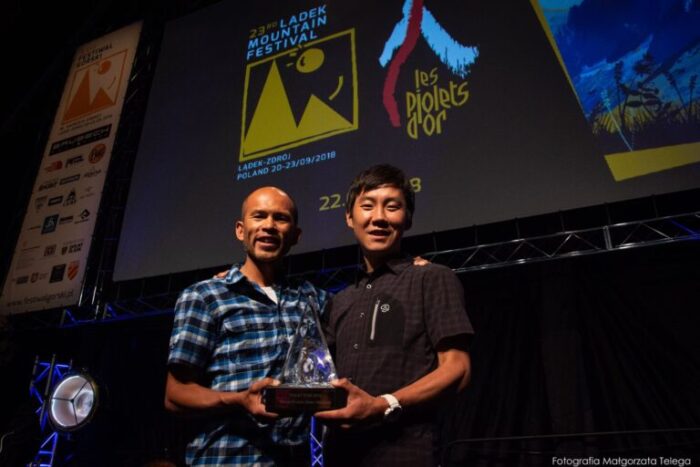
One source of debate among wider audiences is how far we should encourage high-risk alpinism. It is hardly a coincidence that over a dozen former Piolet d'Or winners have later died in the mountains. In 2024 alone, the organizers will pay tribute to Hiraide, Nakajima, and three more: Russians Dmitry Golovchenko and Sergey Nilov, and Archil Badriashvili of Georgia. All perished while climbing in the last two years.
Marek Holecek has two Piolets d'Or in his career. Last month, he climbed the terrible east face of Langtang Lirung, ordinarily a sure awards candidate for 2025. But Holecek's partner, Ondrej Husherka, died in a crevasse fall during the descent, which eliminates the climb, excellent though it was, from Piolet d'Or contention. Some years ago, a Russian expedition received a Piolet d'Or, despite losing two members. A controversy erupted, and since then, the jury only awards climbs in which everyone survived.
Babsi Zangerl climbed Freerider (VI, 5.13a) on El Capitan in Yosemite this past weekend, reaching the top of the 1,000m-tall formation without falling on the first attempt. Reaching the top of a climbing route in this manner is called a “flash.”
Zangerl’s flash is the first on one of the most famous climbing cliffs. Zangerl, 36, of Austria is one of the best all-around rock climbers on Earth, notching ascents across bouldering, sport climbing, trad single pitch, trad multipitch, and big wall routes. She was supported by her long-time partner and equally talented Jacopo Larcher on the historic ascent.
A brief history of flash attempts on El Capitan
In 2012, British climber Leo Houlding nearly onsighted (climbing a route from the ground up without falling on the first attempt, without any prior knowledge or ever seeing anyone else climb it) Freerider, only taking a single fall.
Then his compatriot Pete Whittaker flashed Freerider in 2014, but his ascent has a few asterisks. Whittaker fell while attempting the Huber variation of the route on his third day. He “saved” his flash attempt by taking the Teflon Corner, essentially detouring around the section where he fell.
Zangerl’s Freerider flash is the first “clean” attempt.
German brothers Alexander and Thomas Huber established Freerider in 1998. It gained notoriety in 2017 due to Alex Honnold’s successful solo ascent (no rope), highlighted in the movie Free Solo.
Larcher nearly flashes Freerider
This article first appeared on GearJunkie.
Speed climber Filip Babicz took advantage of the first ice of the season in the Alps, opening what he described as a "modern mixed" M7 route on the NE face of the Petit Flambeau, a classic spire in the Mont Blanc massif.
The direct, 200m line that goes up the central part of the slabby granite face. Unlike other projects, which Babicz spent months planning, he had an "intuition" to jump on this route. Quickly, he enlisted UIAGM guide Heike Schmitt, bought the tickets for the cable car from the Italian side of Mont Blanc, and went for it on November 1. (He just posted the details yesterday.) He called the route Partita Lampo (Lightning Game).
Good news and bad news
For those considering a repetition, Babicz says there is good and bad news. First, the belays are bolted with spits and the route begins just 20 minutes from the Sky Line cable car from Courmayeur to Point Helbronner. (It's been closed since November 4 but reopens on November 29.) Finally, still on the plus side of the ledger, the descent from the summit to the Col de Flambeau is an easy trek.
However, the route should not be underestimated, he cautions. Except for the belays and two bolts (one on the third pitch and another on the fifth), it must be protected. Babicz and Schmitt used Camalots nº 1, 2, and 4.
Pitch-by-pitch description
Babicz detailed the route on social media. First, there is a long but straightforward M3 pitch from the snowfield to the center of the face's shield (a big, smooth slab).
The second pitch follows a series of thick, ice-filled cracks, including an overhanging section (25m, M6+). Happily, the belay is on a comfortable terrace. The route then follows two dihedrals and the final overhang of the shield. It then turns slightly to the left and continues up a chimney until the belay (30m, M6).
The tricky fourth pitch required climbing a smooth face with little protection until Babicz reached another dihedral above and to the left. This was the crux of the climb. He then followed the dihedral until the belay (20m, M7).
The fifth length of rope was easier. Eventually, Babicz followed the ridge to another belay, then continued to the foresummit of the Petit Flambeau, just 10 meters beyond (30m, M3). He said he could have rappelled down the route but found it easier to descend on foot via the Col Flambeau.
Filip Babicz of Poland specializes in speed -- and often solo climbs -- on routes around the world, but especially in the Alps. This past September, he climbed all four ridges of Matterhorn in 7 hours, 43 minutes, and 43 seconds.
Previously, he did speed ascents of the complete Peuterey Ridge to Mont Blanc, Piz Badile, and Grand Capucin. He is also a superb dry-tooler, with feats such as the first repetition of Bring da Ruckus. Many consider this Scotland’s hardest mixed winter route.
Whatever happens today will decide the success or failure on the east face of 7,234m Langtang Lirung. Marek Holcek of the Czech Republic and Ondro Huserka of Slovakia are on their fourth day on the unclimbed east face, struggling to find a way up.
"Either we reach the summit ridge, which would be nice, or we have one more overnight stay somewhere on a 70-degree ice slope," Holecek reported over satellite phone from the wall.
Langtang Lirung lies southwest of Shisha Pangma, on the Nepal side of the border with China. After waiting for days at the bottom of the wall for the snow to stop and for the face to shake itself clean of avalanches, the pair set off at 3 am on October 25.
On that first day, they still had to deal with some sluffs of snow falling over them. Still, they managed to make some progress and set their first bivouac on a rock promontory.
On October 26, they advanced another 200m on unknown terrain and stopped for a rest -- but probably little sleep -- on a tiny ice ledge with their legs bent. Sunday passed similarly.
Yet, meter by meter, the determined climbers are approaching the summit ridge. Once there, the summit will be within their reach.
Climbers Tanner Wanish and Michael Vaill racked up a major accomplishment in Yosemite over the weekend, shaving an impressive 35 minutes off the previous record on a famously difficult route that only a handful of other climbers have even attempted.
The Yosemite Triple Crown is a composite route linking three classics: The Nose on El Cap, the Regular NW Face on Half Dome, and the South Face of Mount Watkins. The route includes 2,448m of climbing and 77 pitches connected by 30km of hiking. As if that wasn't hard enough, to claim the Triple, you've got to send all three in under 24 hours. That's why only nine teams have completed the feat.
View this post on Instagram
Wanish and Vaill managed it in 17 hours and 55 minutes, besting the previous record of 18 hours and 30 minutes. That record was held by Brad Gobright and Jim Reynolds, according to Wanish.
Details on the pair's achievement are scanty as of this writing.
"A perfect day in the park. Will share some fun details and stories later, for now we’ll smile and sleep," Wanish shared on his Instagram today.
Maxim Ropes, one of Wanish's sponsors, notes he's only been climbing for about five years. And ExplorersWeb sister site GearJunkie reports that the pair has only been tackling big walls for an incredible three years.
View this post on Instagram
Note: A previous version of this story incorrectly stated that Alex Honnold held the Yosemite Triple Crown speed record, and that that record sat at 19 hours.
When we’re not outdoors, we get our adventure fix by exploring social media and the web. Here are some of the best adventure links we’ve discovered this week.
Above the Storm: In July, Bronwyn Hodgins, her husband, and four friends arrived in Greenland for 65 days of kayaking and big-wall climbing.
The first 35 days were extremely demanding. After paddling for up to 15 hours a day, they took on the granite wall at Qaersorsuaq. The group was attempting to establish a new route. But as they climbed, a storm descended. The storm trapped them for days in their portaledges.
The Case for Explorers’ Day: The second Monday of October can be a polarizing day in America. It has historically been known as Columbus Day, celebrating Christopher Columbus's landing in the New World. Since the 1970s, some have organized a counter-celebration: Indigenous Peoples’ Day.
This author suggests replacing both with Explorers’ Day. He believes it would be a unifying holiday and points out that everyone is a descendant and a beneficiary of explorers in some way.
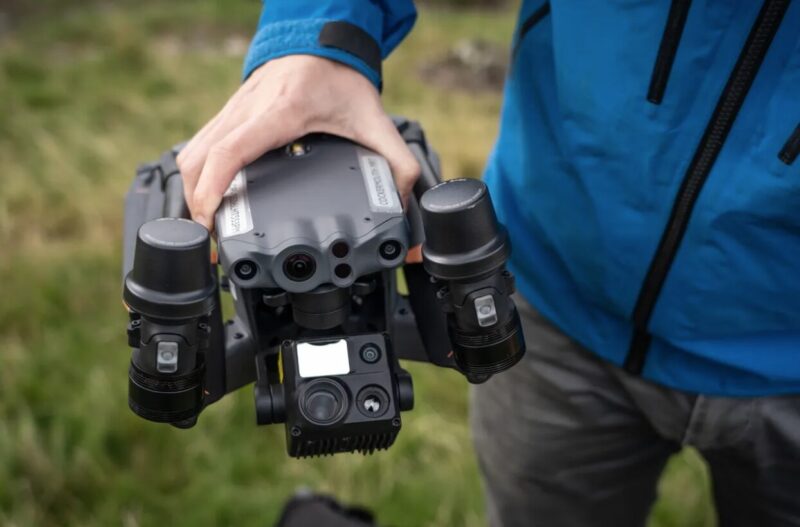
Homemade drones
Homemade Search and Rescue Drones: In 2023, experienced hillwalker Charlie Kelly set off to climb Creise, a Munro in the Scottish Highlands. Later, he messaged his partner to say he would not be back that night, but not to panic, he had extra layers and food.
Kelly never made it home. Initially, mountain rescue teams found nothing. But rescue workers from the Lake District, Dan Roach and David Binks, thought they could help. They had been working on new software to help drones identify missing people. Two drones and one hour later, they found Kelly’s body.
The Impacts of Climate Change on Mountaineering in the Ecrins Massif: Mont Blanc and the Valais Alps have been important study areas for the effect climate change is having on mountaineering. Now, researchers are applying the same techniques to the Ecrins Massif.
Using a 1974 topo guide as their baseline information, researchers have used GIS, statistical analysis, and interviews to assess the area. On average, each route is affected by nine climate-related processes, and nearly 25% of routes are now inaccessible in summer.
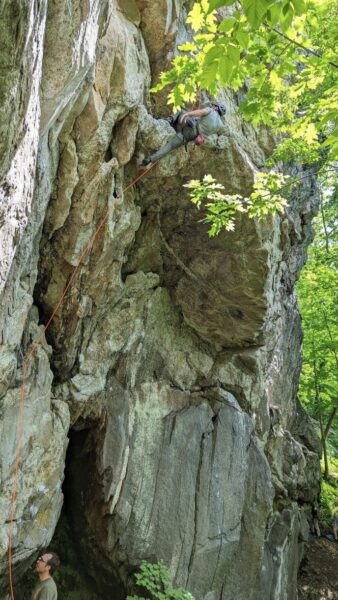
Dealing with negativity
Learning the Power of Low Expectations: Ryan DeLena always thought of himself as a trad climber. Then he went to Rumney’s Northwest Crags, specifically Stoned Temple Pilot. It was his first 5.12a, a grade that always eluded him. Despite initial success on the crag, he was unable to recreate it.
Day after day, he went back, getting more and more negative after each failed attempt. How had he got to the top before? Why could he not replicate it? His expectations dropped so low he expected to fall. With this in mind, he decided he might as well change it up to see what would happen.
Daft Things Hillwalkers Do: Some things in life only make sense when you are on a hill. When did a single carabiner ever come in handy? Certainly not when clipped to the shoulder strap of a rucksack with no other climbing equipment to hand. Other common sights include maps flapping around people's necks and middle-aged men striking the same conqueror pose, one leg raised on a rock.

Guiding in Antarctica
The Perfect Job in Antarctica: Slovenian mountaineer Ales Cesen is heading into his sixth season in Antarctica. An ex-competition climber, mountain guide, and two-time winner of the Piolet d’Or, Cesan was always looking for the next experience. Then he landed in Antarctica. He had never seen anything like it, and guiding tourists on the coldest continent was a stable job that paid slightly more than his work in the Alps or the Himalaya. His only advice to those considering it: be willing to work in sometimes miserable conditions.
Climbing After A Brain Injury: In 2019, Astra Lincoln was in a bike accident. Years later, she is still suffering from post-concussion syndrome. In 2023, there was a glimmer of hope as the endless pain started to lift. She booked a climbing trip with a friend. Before the accident, her life had revolved around climbing. Now, years down the line, she was forced to confront the shame she felt about her condition.
Jordi Corominas of Spain has received the Walter Bonatti Lifetime Achievement Award from the Piolet d'Or committee.
Well known among fellow climbers, Corominas's name might be unfamiliar to many readers -- not because his achievements are not worth it, but because he has avoided the spotlight throughout his climbing career.
A man of few words and a full-time UIAGM mountain guide, he is not what contemporary audiences picture as a celebrated climber. He doesn't pose with Guinness record certificates, doesn't have a press team, and doesn't take selfies at mountain festivals. The guy doesn't even do Instagram! Believe it or not, he still prefers books.

Born in 1958 in Barcelona, he is a long-time resident of Benasque, a small mountain town in the Spanish Pyrenees. He has always placed style above records and chooses his goals not by their popularity but by their difficulty and aesthetics.
He started young. Corominas was just two weeks old when his mom took him on his first bivouac in the mountains. In the 1990s, he did all the hard, long routes in the Pyrenees, summer and winter. Along the way, he opened a series of new rock and mixed lines. At the turn of the millennium, he moved on to the higher ranges: the Andes, Patagonia, and the Himalaya.
High-altitude climbs
These included Indian peaks such as Thalay Sagar, Shivling, and Meru; Andean nevados and Patagonian spires; and some unfulfilled dreams, such as the new route he attempted on Tengi Ragi Tau in 2008.
On the 8,000'ers, Corominas started off with Dhaulagiri in 1991, made a no-oxygen attempt on the North Side of Everest in 2000, and Gasherbrum II in a single push in 2006. Other than these, he never showed great interest in the standard routes. The Himalayan giants offer other faces to the most daring. In Corominas's case, two peaks marked his career: K2 and Lhotse Shar.
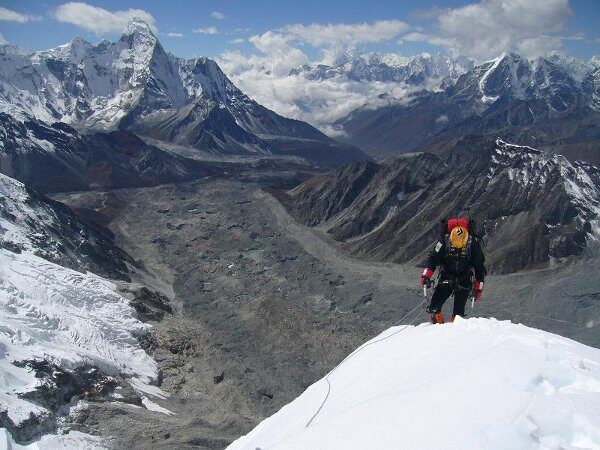
Lhotse Shar was the first peak he tried in the Himalaya, a crazy attempt at a very young age in 1988. He attempted the Austrian route and reached 7,400m. He returned quietly in 2010, also trying the mighty South Face of Lhotse Main. In 2019, he made a third attempt on Lhotse Shar, as well as the South Face of Nuptse.
It is characteristic of Coromina -- and one of the reasons he is not so well-known -- to aim high and not be afraid to fail. This happened on Lhotse Shar, on Gasherbrum IV (two alpine-style attempts in 2006), and on the South Face of Shisha Pangma in winter.
The pirates of K2
Yet Corominas's career will always be linked to the Magic Line on K2. At the time, the Magic Line -- up the SSW Ridge of K2 -- was considered to be the hardest technical ascent of the mountain. Climbed only once and never attempted since then, it was a "suicidal line," in the words of Reinhold Messner.
Corominas achieved the second ascent ever on a solitary push after his climbing partners retreated. No one has done it since.
Apart from its success, the expedition was distinguished by its creative, ambitious approach, its Jolly Roger flag at Base Camp, and the Bonatti Forever sign at the mess tent. It was also a turning point in how expeditions communicated with audiences: open, honest reporting on their progress, accompanied by stunning pictures at a time when there was the internet but no social media or smartphones.
ExplorersWeb was there to share the news, and the community behind us lived the team's difficulties and waited tensely as Corominas continued alone up the mountain. We also cried with the team as Manel de la Matta suddenly fell sick in Camp 1 and died.
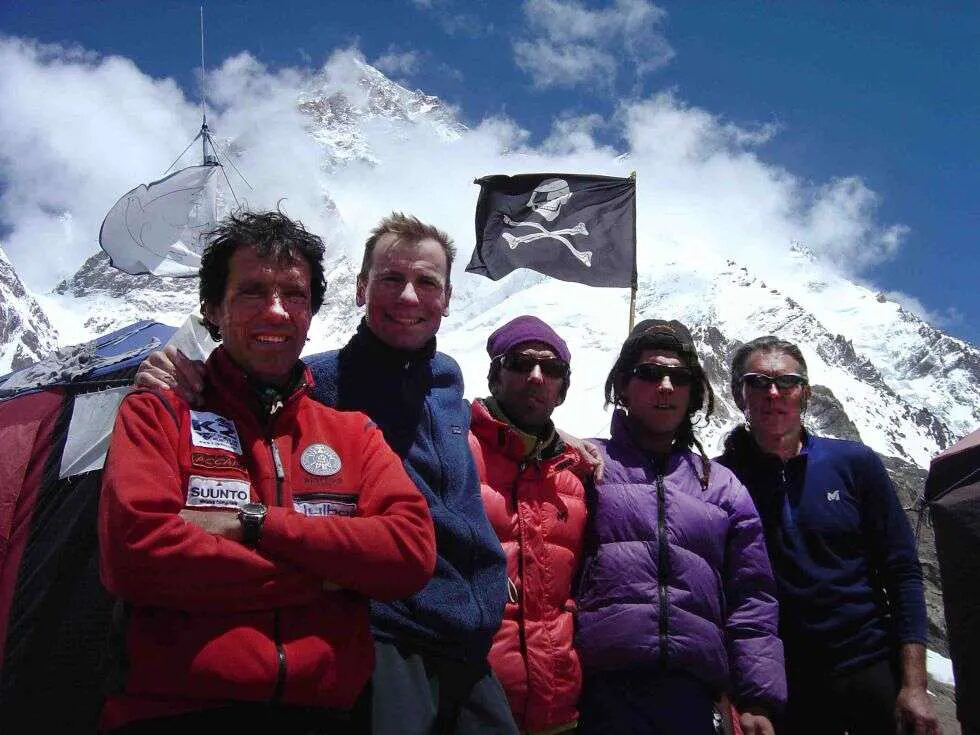
For such a communicative expedition, it was quite peculiar that Corominas, the only summiter, was the least keen to speak about it. His refusal to give interviews or speak too much about the climb only enlarged his fame. He just kept guiding, planning his own climbs, and listening rather than speaking.
A transitional figure
Corominas represents a transition from the wild and somewhat reckless 1980s to a more carefully planned, technical approach to high-difficulty routes on higher mountains. But most of all, he defines himself as a transmitter of the knowledge he has received from his parents, his teachers, and his friends.
Hence, he has devoted his life to guiding and teaching others as a professional guide (still active) and as a coach of younger alpinists.
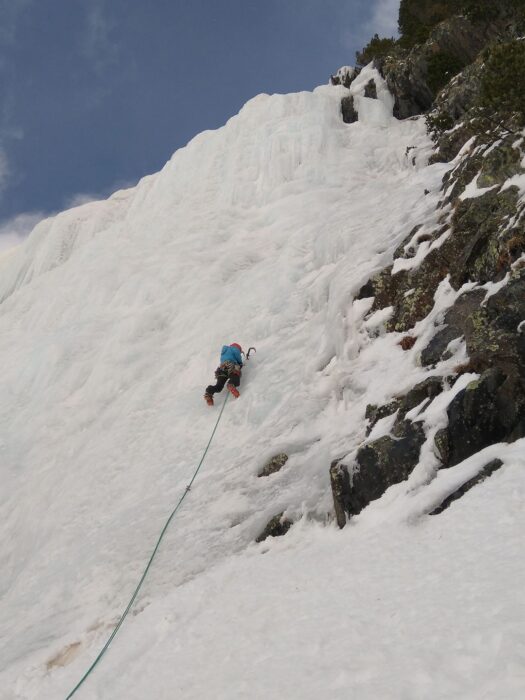
At the beginning of December, he will have to book a couple of days in his calendar and travel to San Martino di Castrozza in the Italian Dolomites, to take the stage and receive his golden ice axe, not for K2 or any other route, but for a lifetime of them.
“We’re trying to awaken minds with a bold gesture,” 31-year-old French climber Seb Bouin said of his ropeless climb this week. Personally, I can’t say watching this terrifying 183m ascent up a French skyscraper makes me feel “awakened.” But my palms certainly feel sweaty.
Bouin — known for pulling off some of the hardest sport routes in the world — evidently decided he needed to venture “outside his comfort zone,” he said on Instagram this week. So he joined in the riskier endeavors of fellow countryman Alain Robert, a legendary free soloist called the “French Spider-Man” for his bold, ropeless ascents of mega-tall buildings.
The French duo posted videos and photos this week of their Saturday ascent up Paris’s Total Tower. It was supposedly Bouin’s first free solo climb, and he acknowledged that starting off with a skyscraper sounded like a “crazy idea.” It also doesn’t help that climbing buildings is generally frowned upon by those in charge of public safety. Indeed, the 62-year-old Robert claims he’s been arrested more than 150 times for climbing buildings.
'Life is precious'
Bouin didn’t immediately respond to a request about how he and Robert arranged the climb. But in the post of this slow-moving video taken by photographer Jan Virt, Bouin seems to sense the outsized reaction the stunt may provoke. He frames the ascent as a way to remind others that “life is precious.”
Free soloing
This story first appeared on GearJunkie.
Here’s the deal: If you want visual stimulation and alpine drama, look elsewhere in a climbing documentary. But if you want a dense mountain report from an ambivalent veteran, immune to travails that could force lesser souls to the brink, keep watching.
Colin Haley’s 2023 solo bid on the Supercanaleta, a Fitz Roy masterpiece that loosens the bowels of even the staunchest climbers, is as simple as that. Haley doesn’t feel sorry for himself, wears the anachronistic facial sun shades, and executes a laborious and impressive ascent.
While filming himself.
Here’s a tidbit from one of the alpine world’s most stoic customers in the high alpine:
"I’m kinda just physically and mentally fried a bit. I kind of think this super-intense, stressful stuff is not for me anymore. [But] even just bailing from here is definitely going to be a very long journey. It’s something like 4,000 feet of rappelling from here to the ‘schrund."
Stick around for an incisive self-inventory in the meadow below. Spoiler alert: don’t bet against my guy.
Amity Warme is tough. It’s no surprise she’s willing to take a big, complicated, 25-pitch bite out of El Capitan the old-fashioned way.
Watch Warme and Brent Barghahn do just that in Ground Up. Arc’teryx chronicles the two penitents on an old-fashioned "ground up" attempt on El Capitan’s El Niño (Pineapple Express variation, 5.13b/c).

It’s a characteristic outing for Warme who, Alex Honnold assesses, "brings a little bit of that old-school mountaineering vibe to modern performance rock climbing."
Power screams and physical-limit climbing
The ascent comes off as a modern foray into the canon of rock climbing — ground-up style, or climbing without rappelling or scouting pitches, is the oldest way to climb El Capitan. It used to be the only accepted way and didn’t become possible in free climbing until several generations of climbers had tangoed with the wall.
If you like a try-hard, you’ll appreciate this pair’s effort. Hang on tight for power screams, physical-limit climbing through clouds and rain showers, and plenty of roof-wrangling.
Murphy’s Law doesn’t quite descend over the climbers like the Yosemite Valley storms do. But this eight-day siege is an adventure by definition, and the team grapples with unexpected and uncontrollable events.
It’s a mixed bag. One thing you won’t find in it, though? Ask Warme.
"You know what they say — excuses are like buttholes," she quips. "Everyone’s got one and no one wants to hear yours."
Message received.
At the top of his reach, Mark Hudon can only just touch Jordan Cannon’s head.
It’s an odd first impression about Free as Can Be, the Arc’teryx chronicle of the unlikely climbing duo, but it definitely hits. Does it owe to their matching outfits which, intentional or not, immediately paint Hudon as Cannon’s mini-me?
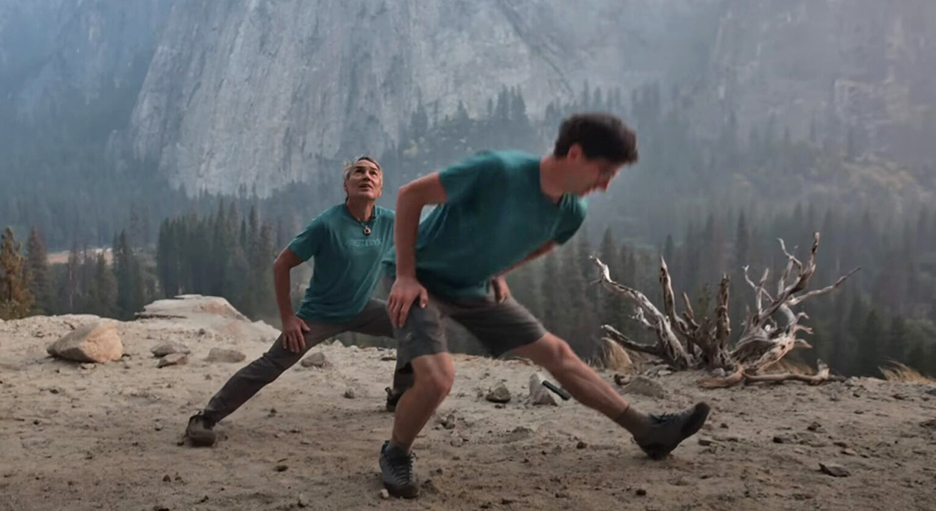
Is it Cannon’s skinny, sneaky height or Hudon’s yawning wingspan?
If the quirky Hudon is some kind of odd doppleganger for the polite Cannon, neither one seems to mind the arrangement.
“Jordan [targeted] Mark. It’s very sad, actually,” climber and filmmaker Cedar Wright jokes. “He’s preying on a senior citizen so that he can go and send his projects.”
Wright’s take is characteristically needling and clever.
Free as Can Be weaves several storylines together around one core thread, which is the year Cannon spent supporting Hudon on his goal to free climb El Capitan.

63-year-old vs 20-something
The novelty is clear but limited in a story about a friendship between a 63-year-old and a 20-something. Which makes it a good thing the film’s directorial choices are sometimes circuitous.
Hudon’s own story as a talented but uncelebrated 1970s Yosemite pioneer is vibrant and informative.

So are the interviews, especially one with Brad Gobright — which lands eerily in the 2021 film after his 2019 death.
And while the dynamics between Hudon and Cannon aren’t necessarily fresh, they do offer interesting qualities. How would Cannon, a young technician, support this transient, enigmatic elder in his challenge quest? By surprising him with a travel-oriented training program packed with modern techniques and aspirational objectives.
It builds to become a slow-burning endearment. If the odd couple setup didn’t stimulate me, the camera’s ability to capture the evident adoration between the two did.
Cannon can be serious to the point of insufferable. And while Hudon’s default mode is impish, he doesn’t always play the funny man between the two.
“Today, we’re teaching an old dog new tricks,” Cannon says in voiceover, shooting a cell phone video of Hudon racking up.
“Me being the old dog,” Hudon retorts skeptically.
“You only look old,” Cannon fires back.
Hudon’s face — half “good one, wise guy,” half “wanna fight?” — is priceless.

Overall, Free as Can Be’s colors pop. It would be easy for the film to posture at wisdom while limiting itself by sentimentality. Instead, skillful storytelling allows it to mimic the skill of its protagonists: it catches lightning in a bottle.
When we’re not outdoors, we get our adventure fix by exploring social media and the web. Here are some of the best adventure links we’ve discovered this week.
Climbers Paddle to Winter Wonderland: A cold spell in January created a wonderland of ice formations in Squamish, British Columbia. Adventure photographer Jimmy Martinello spotted the incredible ice landscape while hiking and immediately mustered a team of ice climbers.
Climbing Germany’s Highest Mountain in Birkenstocks: A viral video shared by a German mountain guide shows an unidentified tourist climbing Zugspitze in Birkenstocks. Though he might have taken a cable car most of the way, climbing any of the route in sandals is irresponsible.
This follows reports of a Chinese climber attempting to summit the Matterhorn without appropriate gear just a few weeks ago. Two wild examples of how not to climb a mountain.
The rules of thru-hiking
Does Your Thru-Hike Count if You Miss a Few Kilometers?: Hitchhiking, taking a ride, or leaving the route for a few miles is relatively common during a thru-hike. A detour can leave some hikers disappointed, as though they have not truly completed their route.
Mary Skylis and Michael Brekkie took on the Appalachian Trail together in 2015. One is a purist who thinks missing a few miles on your thru-hike degrades its integrity. The other sees the official route as more of a guide than a strict map to follow.
The World’s Most Extraordinary Tiny Hotel Rooms: The world’s first capsule hotel opened in Osaka, Japan in 1979. Over time, the tiny hotel rooms have spread. From a sleeping pod that hangs from the side of a cliff to a nook between bookshelves, this list contains eight of the most extraordinary mini-hotel rooms you can find.

Flash floods in the Grand Canyon
Hiker Dead After Flash Floods Hit Grand Canyon: Heavy rains have flooded sections of the Grand Canyon National Park, killing one hiker and injuring several more. Chenoa Nickerson’s body was found 20 miles from where she went missing, at mile 176 of the Colorado River by a rafting group.
Over 100 tourists needed to be rescued as floods washed through campsites and hiking trails. Those on the trails said it went from a relatively calm morning to a life-or-death situation.
Bikepacking Norway’s Best Gravel: Josh Reid and his cycling partner take on the "Of Milk and Navvies" bike-packing route in Norway. The 383km journey combines two of the country's most popular gravel cycling routes: the Mjolkevegen (the Milk Road) and the Rallarvegen (the Navvies Road). Taking the duo through valleys, mountain passes, and cattle pastures, the ride concludes at one of Norway’s longest fiords.
The end of a climbing career
Alannah Yip Didn’t Have a Picture-Perfect Career Ending. And That’s OK: Alannah Yip is one of Canada’s most successful competition climbers. She was the only female climber on the Tokyo Olympic team, but she didn’t make the cut for Paris. Here she talks about everything that happened in between: losing funding, changing coaches, living with alopecia, and falling in and out of love with competition climbing.
Man Left Behind By Co-Workers on Hiking Retreat: A group of 15 co-workers on a hiking retreat in Colorado split into two groups. One group went to the summit of Mount Shavano, the other hiked towards the saddle. Somehow one man was left behind. He summited alone but got lost on the way down. A storm hit and he struggled against freezing winds and rain. At 9 pm, a search and rescue team set out to try and find him.
It has been a tough summer season in the Alps. Rockfall is increasing as climate change melts the permafrost holding the rocky faces together, heavy rains flooded alpine towns, and there has been a rash of deaths, including three in a week on the Matterhorn.
The Matterhorn is a hugely popular peak, with roughly 3,000 summits per year. With so many climbers, accidents are inevitable. There are four to six deaths per year, mostly the result of rocks or falls. Many deaths (and all three last week) occur on the descent, a hair-raising, three-and-a-half-hour highwire act along a sharp ridgeline and down through loose rock.
The short film Way to the Matterhorn does a solid job showing off the mountain's most popular route, the Hornli Ridge. Some 70% of climbers choose this route, which gets exceedingly busy in peak season. But presenter Julia Lyubova and local Zermatt guide Andreas Steindl are lucky. Climbing early in the Covid pandemic and with poor weather predicted for later that day, they have the mountain mostly to themselves.
After a very early start from the Hornli Hut, we're treated to a spectacular sunrise from high on the mountain and some vertigo-inducing shots of the windy summit ridge. But the film doesn't shy away from the difficulties of the descent.
Careful footsteps and nervous chatter
On the way down, climbers are typically physically and mentally tired. The descent can require rappeling, and it's easy to wander away from the route without an experienced guide.
Lyubova and Steindl are up and down without incident, yet you can feel Lyubova's nerves through sections of the descent. Quiet moments are punctuated with heavy breathing and nervous chatter.
"The descent feels much harder than the ascent," Lyubova explains. "I am not sure if I have done anything more frightening in my life before this."
In a crowded field of climbing films that are increasingly hard to tell apart, Mike Call’s The Artist kept me guessing. My notes are tangled and scrawled, and (perhaps largely due to personal reasons) would be stained with saline if I’d been leaning over the paper instead of backward.
Can you expect the son of this woman to portray a mundane hero?

Let me explain what I mean by “kept me guessing.”
Here’s a linear story arc The Artist could follow:
Boone Speed anchored sport climbing in the 1990s, burning a trail through American Fork Canyon that fried everyone not named Chris Sharma. Then he played an instrumental role in inventing modern bouldering gear and creating the market for it. Then he became a world-class photographer.
All along, his unforgiving personality burned just as hot as his ambition. He ostracized some of his closest friends. Everything he did “put a dent in the world,” in Call’s words, but he appeared to pay the price for it. It looked like he couldn’t break through whatever membrane was keeping him restless in his own skin.
Then later in life, he cooled off — realizing, as he says in the film, that his oldest relationships are the most important thing. He sums up the epiphany with a familiar sentiment: “How much better does it get?”
All of that’s true. But, like all art, there’s what The Artist appears to do, and then there’s what it actually does.
Here’s what it actually does:
Describes Speed’s early dynamism from behind the lens
Call was Speed’s earliest videographer. Three decades later, their relationship is the same. But instead of depicting a one-dimensional Speed by handing him the narrative reins, Call tells it his way — which adds depth to his subject right away.
Emphasizes real-world outcomes
Introducing key mentors like Maria Cranor, Black Diamond’s marketing director while Speed was embroiled in generating the modern bouldering market, provides accountability. Cranor and other key influences create rules and boundaries for young Speed, shaping his decisions.
Pusher, a company that Speed helped found, wasn't just a collective of heathens. It was the first climbing company that paid no attention to anything except bouldering. Pusher sold an aesthetic involving T-shirts, ads, and some seminal videos. It also made climbing holds.
Allows its aesthetics to penetrate
The Artist exalts the aesthetic principle of reduction: Do more with less. You can see it in Speed’s interior decoration, with demure houseplants and a small reproduction of one of his father’s sculptures. It’s also the principle he applies to guide his photography.

And if you’ve ever climbed, you know how to apply it.
The film stays out of the way, allowing emotive expression from images, colors, and interview subjects alike.
Pumps the gas — but doesn’t over-rev
Speaking of Speed’s father, don’t miss the son describing how he felt after his father died. But don’t expect lingering close-ups of misty eyes or quivering lips. Call knows the viewer can feel every bit of the moment’s pathos without having their head dunked in a bucket of it.
(For the record, yes, this is the part that got me choked me up.)
Elsewhere, skip to 14:10 for peak tough-guy Boone.
Focuses on the art, not the artist
So The Artist doesn’t focus on the artist?
Correct, it does not. Instead, it watches what the artist is watching: his subjects. In a way, Speed is the hero of the film. But not really. Because it’s actually about everyone except him.

In the fat part of the bell curve of climbing films, production crews can labor in dramatics, saturated visuals, or tired storylines.
Another segment in the big part of the curve is the predictable. We watch a climber trace a typical heroic cycle of accepting challenge, faltering, transforming, and eventually meeting the challenge to achieve redemption.
The Artist pretends to be both; instead, it’s neither.
There's more to explore that way.
If people rock climbed before 1492, the evidence is conjectural.
Villagers inhabited the Sky Caves of Nepal, carved into stone hundreds of meters off the ground, as early as the seventh century BC. Asked how the ancients got up there, locals are known to quip, “The lamas fly.”
Similar sites exist in the western United States, where thousand-year-old groups like the Mogollon left faint traces of climbing to cliff dwellings and cultural depots such as Hueco Tanks.
But no documented record of a climb existed anywhere in the world until 1492. That year -- which coincidentally was also the year that Columbus set sail -- King Charles VIII decided to force one of his military engineers to climb Mont Aiguille — a 400m limestone mesa some called Mount Inaccessible. On its flat top, angels allegedly cavorted.
The engineer's name was Antoine de Ville. He and 10 other intrepid souls started up the northwest face armed with wooden ladders.
By all accounts, de Ville and his team did reach the 2,087m summit. After their unlikely flurry up hundreds of meters' worth of ladders, nobody else repeated it for centuries.
Most advanced ever
De Ville’s first ascent was the most advanced known rock climb relative to the rest of its era. Former American Alpine Journal editor J. Monroe Thorington’s 1965 report had this to say about the Mont Aiguille route: “The ascent was said to be ‘half a league by ladders, and a league by a route terrifying to see and even more so to descend.’ Only a few years after the event, Antoine de Ville was spoken of as an ‘alchimiste,’ a sorcerer!”
According to Thorington's research, ground witnesses sourced from French authorities corroborated that de Ville had actually summited Mont Aiguille.
De Ville simply called the ascent “le plus horrible” — “the worst.” Details on the campaign itself are scarce. But all 11 members, including multiple religious officials and a “ladder-man to the king,” seem to have topped out on Mont Aiguille.
Quick repeaters scurry up ladders
De Ville and his crew first spent a few days on the summit meadow building a mountain hut -- no details on how they carried the lumber up those ladders. They also erected a few crosses in the name of Charles VIII and wrote fantasy reports about unusual flora and fauna, and some mysterious human footprints.
The note about footprints turned out to be prescient, Thorington reported. Two more groups of local nobles and bureaucrats soon followed de Ville’s ladders to the top.
“Imagine their astonishment,” he wrote, when conspicuous people such as a viscount popped up onto the mesa.
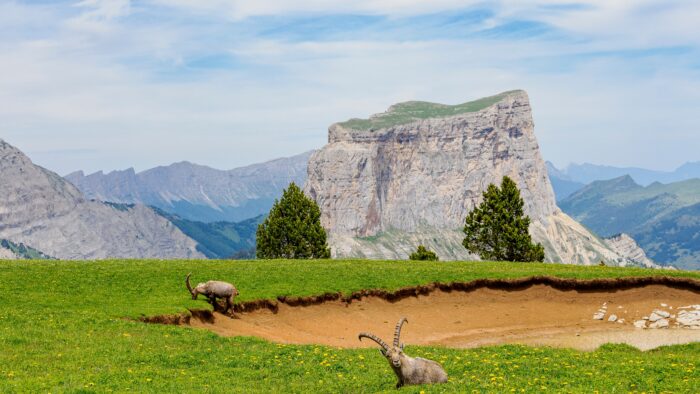
Ladders, sorcery, or otherwise, it’s beyond argument that de Ville was ahead of his time. Later climbers retrofitted his route with fixed safety gear, including iron chains. American climber and historian W.A.B. Coolidge repeated it in 1881. His account, per Thorington:
"The way (center of NW face) lies through several deeply cut fissures, or rather, hollows of the most extraordinary nature. At one moment, we seemed to be in the very bowels of the mountain in a great cavern, whither scarcely any light penetrated. The rock is very smooth and bad to climb, so I was glad to avail myself of the iron chains.”
Today, climbing beta website The Crag calls de Ville’s route the Voie Normal and rates it at a gentle 4a (5.4).
Maybe controversially, the site credits the first ascent to Jean Liotard in 1834 — the man who allegedly arrived second, 342 years after de Ville.
Of course, most believe that de Ville genuinely summited the peak. A few have even tried to re-enact the legendary ladder ascent for a documentary project. It continues to be an intriguing objective for the historically minded.
Tomorrow’s objective: Mont Aiguille- The oldest documented rock climb in the world 1st done in 1400… pic.twitter.com/4bySgInEbp
— Mark Seaton (@guidemark) July 2, 2024
A brief story in Japan's YBS News today reported the death of a young man at the 8th station of the Yoshida route on the Yamanashi side of Mt. Fuji. While sad, it would not be news except for the fact that the deceased is world-class rock climber Keita Kurakami. He was just 38 years old.
Kurakami had a serious heart condition, and he knew it. But he had refused the prescribed treatment, which would have meant the end of his career.
Kurakami was born in Gunma prefecture in 1985 and started climbing in high school. He was first attracted to bouldering. After about a decade, he re-focused on trad, multi-pitch, and big wall climbing outside Japan. He had a particular passion for opening new routes.
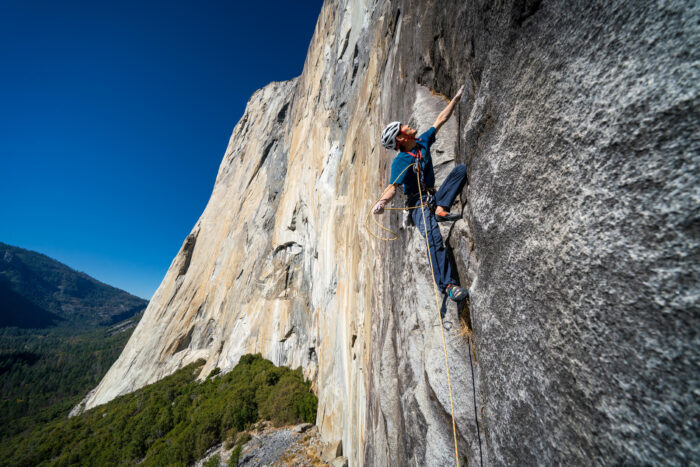
In 2015, he and partner Yusuke Sato opened what was considered the hardest multi-pitch route in Japan -- Senjitsu no Ruri, “A thousand days of lapis lazuli” -- up the Moai Face of Mt. Mizugaki.
Kurakami wrote a long report about the climb, the mountain, and his own perceptions of climbing for Alpinist magazine. Read it here. Two years later, he made the fifth ascent of Walk of Life, a famous E9 6c slab route in the UK.
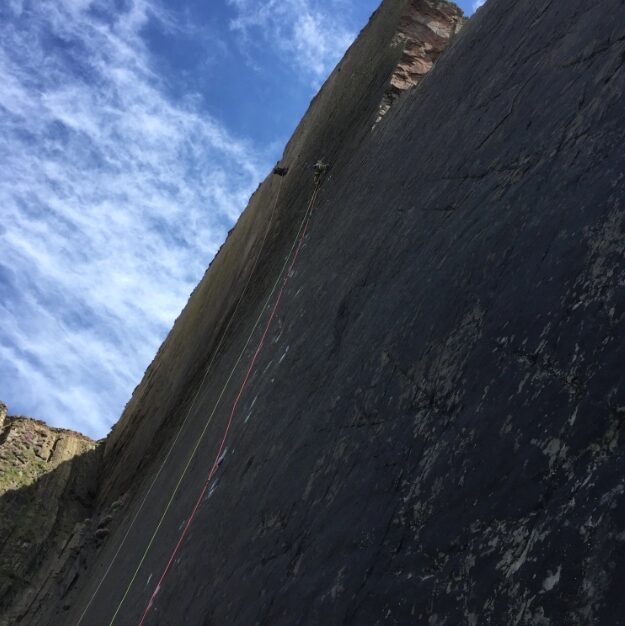
In 2018, Kurakami completed the first free climb rope solo of Yosemite's El Capitan. (He climbed alone but self-belayed with a gri-gri and rope system.)
"Kurakami had redpointed every individual pitch on the Nose the previous year but decided that he wasn’t satisfied with his style because he didn’t free the route from the ground in a single push," Alpinist wrote about him. Kurakami had promised to return to El Cap and "climb it in a better style."
He also held a degree in physics and shared a transcendental view of climbing "as a continuum of contact points and discovery where nature, people, the past, and the future intersect," as he put it. "I aspire to free climbing as an expression of physical art and philosophy."
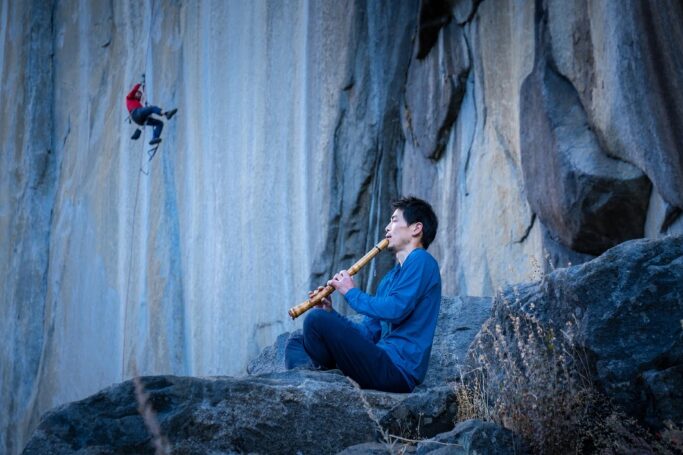
Cardiac condition
Kurakami's cardiac condition showed up in 2021 after a hard training session. He was taking an active rest day, cycling with friends, when he collapsed at a street light, and his heart stopped. Paramedics managed to revive him on their third attempt.
Doctors diagnosed a ventricular arrhythmia caused by "exercise-induced coronary spasm angina." Kurakami was told to quit climbing or risk sudden death. They also suggested that he get an implantable cardioverter defibrillator, a kind of pacemaker that can also deliver an electric shock. After reflecting on it for the three days he spent in the Intensive Care Unit, he refused.
"I thought that giving up climbing would be a choice I would regret later on," he told a Japanese magazine in 2022. "Even if I lived to be 70 or 80 without climbing, would that really be a happy life for me?"
He decided that an implanted defibrillator could also malfunction and chose not to take that risk.
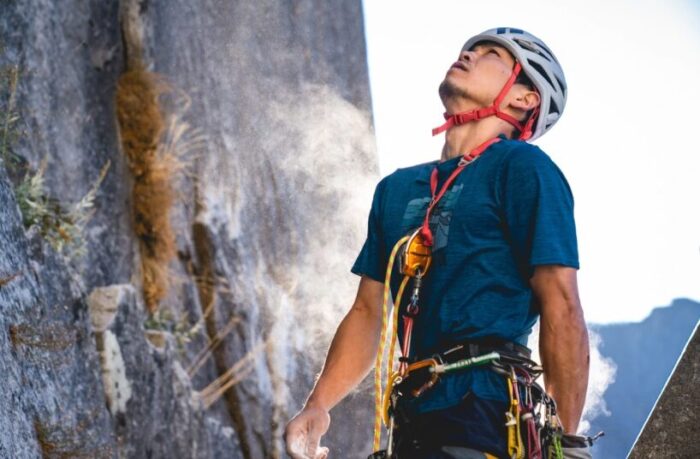
Kurakami read all he could about cardiac disease. He returned to exercising, following training methods from Kilian Jornet and Steve House. A year after he collapsed, Kurakami had returned to bouldering, running, and climbing for 18 hours non-stop. He felt 90% recovered. He progressively returned to climbing but always carried an AED with him.
"I chose a life with climbing over the risk to my own life," Kurakami said. "But if the time came when I had to choose between climbing or my wife and family, I would not hesitate to give up climbing."
Climb till the end
It is not clear if Kurakami changed his routines or treatment since then. According to his Instagram, he climbed till the last moment. Last week, he posted photos of himself rope-soloing Freedom, a 5.13 route.
Today, he set off on his last hike up sacred Mt. Fuji. Although the mountain is officially closed until July 1, some climbers venture up its slopes off-season. A friend who joined him called the emergency services when Kurakami lost consciousness some five hours into the hike. Kurakami was taken to the hospital, but this time, doctors could only confirm his death.
American climber and photographer Drew Smith was kind enough to share some photographs for this story. Smith met Kurakami when he rope-soloed El Cap.
"He was a very kind and joyful guy to be around," Smith recalls. "The climbing he liked was very challenging and intense, but he had a calm presence and great energy."

It’s a bridge too far to paint Jacopo Larcher as a revisionist. But in European rock climbing, he’s trying to synthesize a future that diverges from its past — and he’s not afraid to confront history in order to do it.
Ask yourself: Would you forgo a bombproof bolt for a marginal cam placement if you were facing a nasty fall?
View this post on Instagram
That’s the game Larcher plays all the time as he barnstorms around his home continent, ignoring bolts on sport climbs. He accepts the hazard as part of an effort to reframe the role of the expansion bolt — the central piece of hardware in a modern route developer’s toolkit.
Making 'the sharp end' even sharper
Larcher is The Traditionalist, in his new role for The North Face as well as in practice. Since the mid-2010s, he’s blazed his own trail through the climbing world by creating specific, hard climbs that would terrify most people.
Lead climbers attempting the menacing crux on 2021’s Shikantaza must rely on thin aid climbing gear, placed behind a flake that threatens to rip off, tensioned to cams below to stay in place. Nobody knows how hard Shikantaza is because Larcher never gave it a definitive grade — and nobody else has tried it.
In keeping with the ethics of The Traditionalist, the route could very well stay that way for good. Larcher refused to bolt it partly in deference to its original developer, who tragically died in unrelated circumstances in 2017. And partly because he’s decreasingly interested in the sport climbing game.
Shikantaza is a king line on a spectacular boulder in an idyllic Italian valley — how many souls would siege it if Larcher defanged it with a hammer drill?
To be clear, bolting has advanced rock climbing as a sport more than any other single factor. Most of the world’s hardest routes are impractical to protect with traditional gear, and many are impossible to protect traditionally.
Some are just extremely marginal. Those are the ones where Larcher makes his living.
Watch him jam a skyhook into a tiny horizontal seam on Jeune Et Con, then pound on it with his fist to secure it. Realize, along the way, that it’s the only piece of protection on the whole rig.
A little contrived?
Elsewhere, things get a little contrived. But when they do, it’s important to remember that all climbing is fairly contrived.
Into the Sun is Larcher’s extension of a high-ball boulder problem by Fred Nicole. To begin, the climber stands on bouldering pads with a harness on and starts up. The boulder problem ends at a big hole at about three-quarters height. At this point, the climber usually lets go, falling to the pads below. Instead, a helper hands the climber a pre-rigged rope and trad gear on the end of a pole.
The climber grabs the gear and clips into the rope, the helper becomes a belayer, and the climber tops out on the boulder after another three vertical meters.

It’s a little silly. Until you consider that Seb Bouin, Adam Ondra, and the rest of the mutants in the Flatanger Cave often switch between ropes mid-climb. Or that Alex Honnold, on the first ascent of the 15-meter high-ball boulder Too Big to Flail, amassed 36 crash pads at the base. Or that high-altitude climbers are locked in an ongoing mud fight over whether it's fair to use supplemental oxygen — in an industry that relies on it at least 90% of the time.
Faster, lighter?
Above the noise, though, there's one mountain perspective from which Larcher’s traditional fixation makes perfect sense. The seemingly invincible “fast and light” ethic supports it all the way.
Bolting a first ascent is heavy, gnarly, expensive work. Plugging a little gear, rappelling down, and walking away like nothing ever happened? Comparatively, it’s light as a feather. If a first ascensionist can get away with it, why face the burden of drilling a bolt at all?
Of course, "getting away with it" is relative. Fear and risk tolerances vary.
Will legions of sport climbers hang up their quickdraws in Larcher’s image? Pile their online shopping carts high with loads of arcane trad and aid equipment like beaks, skyhooks, and ballnuts? Play with sketchy gear placements and evaluate what climbing and, by extension, life is really about?

I doubt it. It’s too easy (and fun) to show up to a cliff someone already bolted and start playing around on it — trust me.
But Larcher’s not trying to change the past, he’s trying to influence the future. Hard trad climbing, he points out, is a “young movement” in Europe.
“You can really see that other climbers who don’t trad climb start to realize there is this other discipline,” Larcher says in the film. “[Trad climbing] never gets boring. You have to deal with your fears. You have to sometimes decide if you want to go for it, knowing there might be consequences.
“For me, It makes me feel more alive.”
Seems like word’s getting around.
Matteo Della Bordella, Silvan Schupbach, Symon Welfringer, and Alex Gammeter are heading to an unclimbed wall on the East Coast of Greenland that they have only seen in a photo.
This will be Della Bordella's fourth expedition to Greenland. But, as he told ExplorersWeb, this time will be different. "We're going to a much more remote place," he said.

The only person who has previously climbed there is Mike Libecki, a National Geographic explorer, photographer, and climber. In 2019, Libecki and his brother Andy climbed some isolated walls in Greenland, as he posted on his Instagram account:
"The wall we want to climb is really out of reach, further up the east coast," Della Bordella said. "I guess the most practical way to approach the place would be in a boat, but we want to keep our usual way of approaching by kayak in a completely independent (and sustainable) way."
Della Bordella noted that kayaking to and from the wall will take a month, nearly two-thirds of their planned expedition time.
"I am aware it looks too tight a schedule, but we believe that if we used other means, we would miss an important part of the adventure."

A long paddle
The climbers have experience kayaking Greenland's fiords, but not so far up the open east coast.
"We will have to paddle much longer than on previous expeditions, and directly on the ocean, following the coastline." That involves more waves, currents, stronger winds, and sea ice.
The plan is to start paddling from a hunters' settlement.
"A local hunter will take us there from Tasiilaq [the main town in Eastern Greenland]. From that point, we will be completely independent, carrying all our supplies and gear in the kayaks," Della Bordella said. He estimates they will paddle a total of 600km, 300km each way.
In fact, Greenland's granite walls are becoming popular among trad and big-wall climbers from around the world. Places like Upernavik and the Mythics Cirque are seeing more climbing teams opening new routes every summer.
"Greenland is remote and has plenty of possibilities, and at the same time, the weather is not bad in summer," Della Bordella noted.
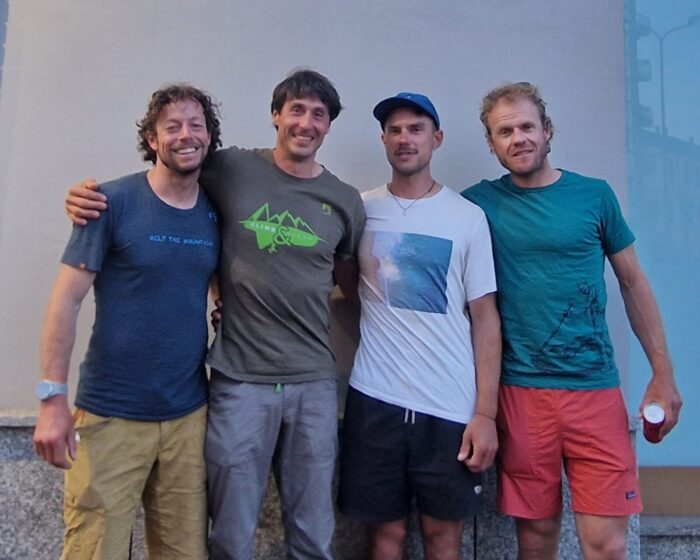
For the adventure, Della Bordella has again teamed up with good friends Silvan Schupbach and Symon Welfringer, his partners on the 2021 Greenland expedition. The three of them also attempted to climb the Karakoram's Ogre (Baintha Brakk) and opened a new route on The Ogre's Son (Baintha Kabata Peak). This year, the team will add a fourth member, Alex Gammeter of Switzerland.
Charles Barrett, a 40-year-old rock climber convicted of sexual abuse, was sentenced to life in prison Tuesday.
The longtime Yosemite climber had been convicted of two counts of aggravated sexual abuse and one count of abusive sexual contact, according to a news release. All three incidents occurred at Yosemite National Park in 2016, said U.S. Attorney Phillip A. Talbert.
“Barrett’s long history of sexual violence supports the imposition of a life sentence,” Talbert said in the news release. “He used his status as a prominent climber to assault women in the rock-climbing community, and when his victims began to tell, Barrett responded by lashing out publicly with threats and intimidation. This case is a testament to the courage of the victims who reported these crimes.”
Barrett committed the crimes in August 2016, when the victim was visiting Yosemite for a weekend of hiking, according to court documents. Barrett, who was living and working for a private business in the park, sexually assaulted her three times over the course of the weekend.
During the trial, three other women testified that Barrett also sexually assaulted them, Talbert said Tuesday. Those assaults were not included in the charges against Barrett because they occurred outside federal jurisdiction. However, they were allowed as additional evidence in the trial.
“It is time to put a definitive end to Barrett’s reign of terror,” one of his victims said, according to The Sacramento Bee.
A lack of remorse
It wasn’t until several years after that 2016 weekend that charges were filed against Barrett.
In 2017, he “purposely” climbed at the same gym as a victim he had assaulted in 2000, prosecutors said. That woman disclosed Barrett’s assault on her to the gym owner, which resulted in Barrett harassing and threatening her for several years. In August 2022, he was convicted for the criminal threats he made in January 2022.
That same month, federal prosecutors charged him with sexual abuse, leading to a two-year trial that ended today with life in prison for Barrett.
While in custody for this case, Barrett made hundreds of phone calls, prosecutors said. During these calls, he showed “no remorse or regret,” Talbert said in the news release. Instead, Barrett threatened to use violence and lawsuits against the victims, claiming they created a conspiracy to ruin his life.
This case was the result of an investigation by the National Park Service.
“We are grateful for the tireless work of the National Park Service investigative team and the U.S. Attorney’s Office to bring this case to justice,” Yosemite National Park Superintendent Cicely Muldoon said. “Today’s sentencing sends a clear message about the consequences of this criminal behavior. It makes Yosemite a safer place for the climbing community, park visitors, and our employees.”
Barrett’s sentencing comes days after The New York Times reported on accusations of sexual assault by mountaineer Nirmal Purja. The story included other notable examples of sexual misconduct in climbing — including Barrett.
This story first appeared in GearJunkie.
Climbs in the Buttermilk Boulders don’t surrender easily, even to the world’s best pebble wrestlers.
At first sight, it’s easy to figure out why. The quartz erratics hulk over the broad playa of the Owens Valley in eastern California. Savage crimps in steep faces guard top-outs that soar above 15 meters. Around icons like the Grandma and Grandpa Peabody Boulders, generations of hopefuls have steadily pounded the landscape into dust by throwing down palatial crash pad carpets.
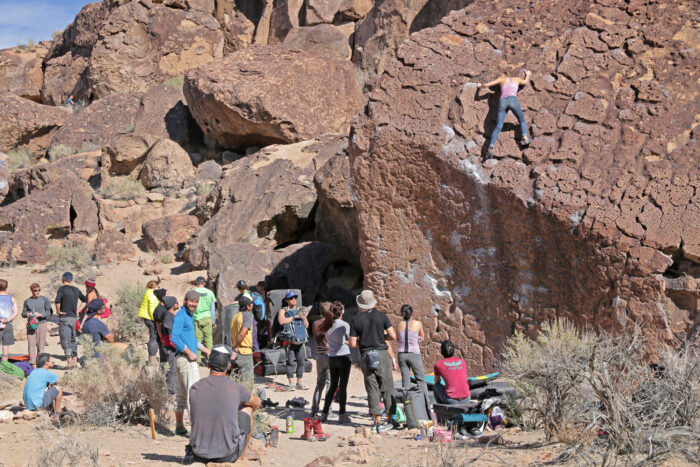
When a climber scores a first ascent in the Buttermilks, it’s a big deal. Jared Roth pulled off an unthinkable ascent with Rastaman Vibration (V12, 15m) in 2002. Roth started Rastaman from a standing position, skipping some entry moves too radical for the time and place. Eight years later, Paul Robinson finally unlocked them, forcing a sit start after two years’ work: Lucid Dreaming, V15.
A similar saga played in the Sierra foothills above the Peabodies. Bouldering luminaries Chris Sharma and Jason Kehl started clashing with the Golden Boulder’s steep, soaring face in the early 2000s. But neither climber could solve its puzzle of crimps and contortions. In 2011, Sonnie Trotter finally skipped half of it, creating the shoulder-start rig Standing on the Shoulders of Giants (V9). But the ground-up line remained one of the Buttermilks' last unclimbed centerpieces — until this spring.
View this post on Instagram
Freefall veteran
Keenan Takahashi is a gamer. The 30-something-year-old has invested the majority of two decades into the climbing game. Takahashi is as recognizable for his unkempt mustachios as for his gung-ho style on rock. He’s tamed big rigs and exacting projects all over the world. He has been called “obsessive,” and he's probably spent more time in freefall than most people have spent on the couch.
In April, he added another notch to his belt.
The Gold Standard (V15) is the long-deferred completion of Trotter’s Shoulders. Watch Takahashi wage and win the first ascent war here — in painter’s pants and gondolier shirts.
To psych up, he invokes a Soundcloud rapper.
“Chicken f*ckin’ bone, now it’s on!”
Firmly. Consistent with the Mellow label, this joint is a familiar chronicle of the ups and downs of high-ball prospecting. Alongside partner-in-crime Katie Lamb, Takahashi frets, focuses, and fumes through the effort.
If the central Californian sometimes seems overstimulated, it’s a short leap to guess why. Takahashi’s investment in The Gold Standard spanned years. His tendency to fixate obviously fueled progress but increased the pressure.
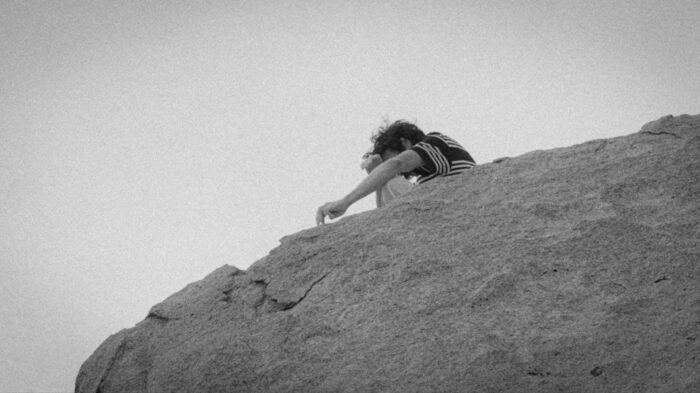
Insipid chatter
Also get ready for insipid chatter from spotters (admittedly, I cannot control this when I am the spotter) and Mellow’s vulnerability to dramatization. Some will struggle with disjuncts between production elements and on-screen events, like when a yearning, tense musical crescendo intensifies as a headlamped Takahashi proceeds up the rig but falls — uneventfully, from a height of about five meters.
Anyone who’s done it, though, knows that climbing a worthy project feels more intense than post-production could ever make it seem.
ExplorersWeb couldn’t reach Takahashi for comment as of this writing, but his Instagram post caption is a can’t-miss. Want a drive-by tour through the strange, standout mind at the top of the Buttermilks? Here you go.
“The only difficulty was self-imposed, and to see it for what it is allowed me to step away from the outcome and focus on the moment. The wind rose, and I just felt excited to give it hell…I’m not really sure how to write a caption about something that I’ve been looking at for 12+ years, trying for six seasons, and thought I might never send. But… I’m f*cking psyched to have seen this one through!!!”
Chicken bone, Keenan.
The world’s only Oscar-winning free soloist is at it again.
Alex Honnold broke another record on El Capitan, rope soloing the iconic Salathe Wall (5.13b or 5.9 C2) almost fast enough to cut the existing standard in half.
Honnold tagged the El Cap summit just 11 hours, 18 minutes after he left the ground on Thursday, he told the San Francisco Chronicle. In terms of speed, the effort was the equivalent of a moon landing — the previous solo record on the Salathe stood at just under 20 hours.
That mark briefly belonged to Brant Hysell, a Lake Tahoe-based climber who ticked the route in 19 hours, 58 minutes on May 11. His 12-day stint at the top of the Salathe speed pile ended a decade-long reign by Cheyne Lempe, who posted a 20:06 run in 2013.
Game on
Why didn’t Honnold snatch the record sooner? Because Lempe is his friend — but he doesn’t know Hysell.
“When it was my friend who held [the record], it would have felt weird to go and dunk on him,” Honnold explained. “But if it’s someone I don’t know, it’s like, game on!”
The free soloist adds his new record to a growing list of El Capitan benchmarks, including the overall Salathe speed record (4:55 with the late Sean Leary in 2009).
The Salathe shares big swaths of El Cap with the Freerider (5.12d, and the climb from Free Solo, in case you’ve been under a rock since 2017). Honnold attributed his relatively blazing speed on Thursday’s record burn to his familiarity with the wall — he free soloed segments of it.
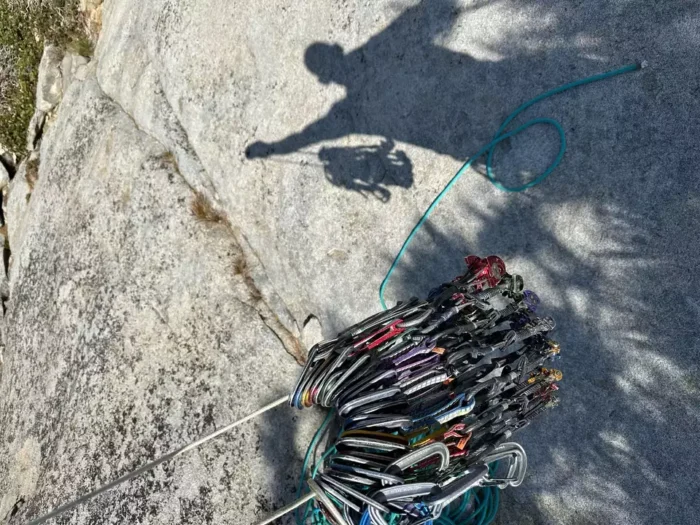
Like his record-setting effort, Honnold’s Yosemite visit was over in a flash. He bailed out of the park on Friday morning, according to the Chronicle, bound for his Las Vegas home after a “big-wall tuneup” trip and a record he said “felt like low-hanging fruit.”
Two climbers fell approximately 300m while ascending Mt. Johnson in Denali National Park on April 25, the National Park Service reported late last week. The fall killed Robbi Mecus, 52, a New York State forest ranger. Mecus' climbing partner, Melissa Orzechowski, 30, remains in critical condition.
According to multiple reports, the two climbers had roped up while tackling The Escalator, a 1,500m mixed-terrain route on 2,560m Mt. Johnson's southeast face. Other climbers who saw the fall alerted the Alaska Regional Communication Center at 10:45 pm that evening.
The witnesses descended to the stricken climbers, where they confirmed Mecus' death. They then dug a snow cave and treated Orzechowski's injuries until help arrived the next morning.
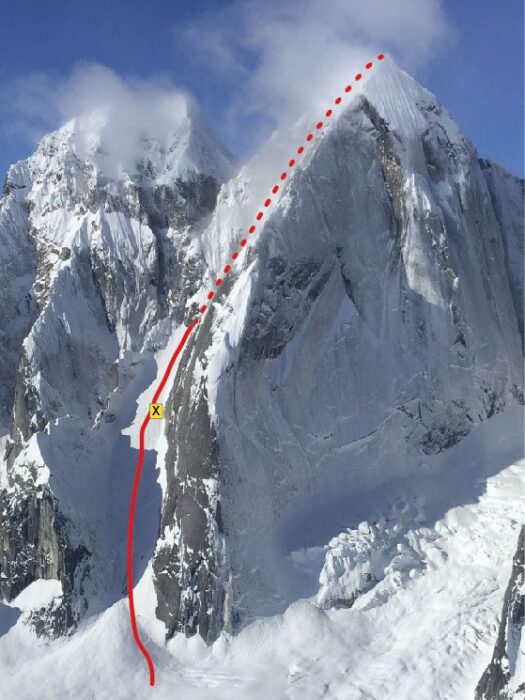
Orzechowski was airlifted to a hospital in Anchorage. Rangers recovered Mecus' body on Saturday, April 27.
Deceased climber's background
According to The Adirondack Explorer, Mecus was a fixture in the Upstate New York climbing scene and was active in rescues and outdoor education. In her 40s, Mecus came out as a trans woman and later told North Country Radio that she felt accepted by her community.
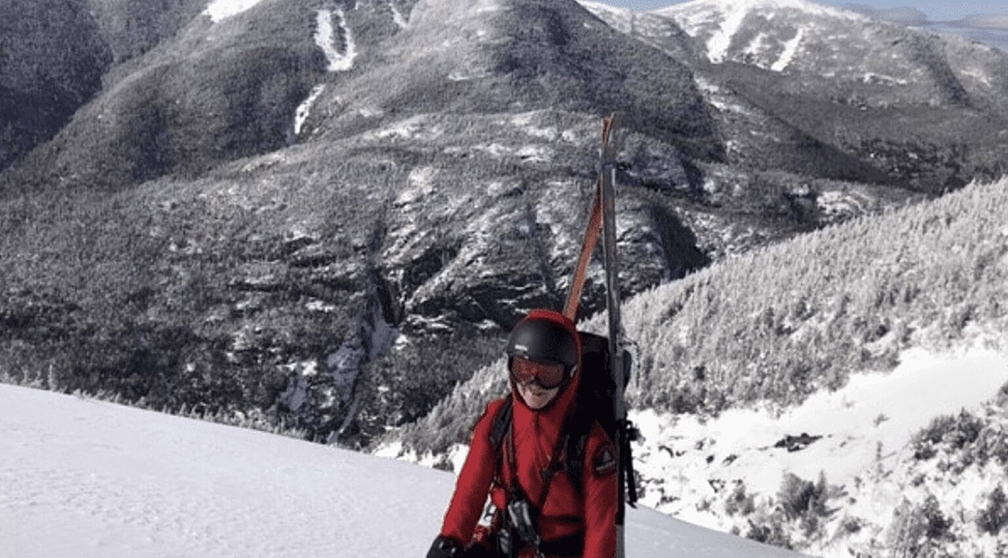
“Over her 25-year career with DEC, Ranger Mecus demonstrated an unparalleled passion for protecting the environment and New Yorkers,” said interim New York Department of Environmental Conservation (DEC) commissioner Sean Mahar.
Orzechowski is a former teacher, an accomplished climber, and co-founder of the Adirondack Queer Ice Fest. A GoFundMe has been created to help offset Orzechowski's recovery cost and transportation for her family to the Alaska hospital where she's being treated.
When we’re not outdoors, we get our adventure fix by exploring social media and the web. Here are some of the best adventure links we’ve discovered this week.
Finland’s Ice Swimming Fanatics: Avanto, as Finland's agonizing practice of ice swimming is known, means cutting a hole in the ice on a frozen lake and hopping in. Some cut tiny plunge pools, others fashion swimming-pool-sized holes for many to use.
Finns swear by this folk tradition, insisting that it lets them survive the dark, brutal winters. Many say it helped them overcome depression, addiction, and bereavement.
As you step into the icy water, time slows, they say. Your body is in shock, and numbness quickly spreads through your limbs. It is debatable if this is a form of water torture, but you feel good afterward. And the longer you stay, the bigger the benefits.
Odd job
Antarctic Fire Captain: Of all the unusual outdoor jobs out there, fire captain in a place covered with snow and ice ranks right up there. But that is what Nicki Schauman does. He is the fire captain in Antarctica. Schauman has worked for two seasons, providing fire support for three U.S. facilities at the South Pole.
So far, there haven't been any fires, but if one did start, it would spread quickly in that dry and windy place. It is hard to replace anything in Antarctica. They only get cargo and supplies a few times a year.
Nearly everyone on Schauman's team is also an EMT, paramedic, or aircraft rescue firefighter. They are always needed for something.
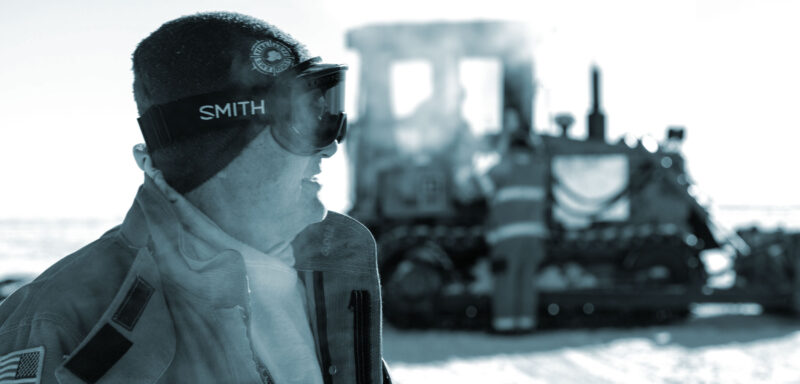
Here’s Why I Don’t Love Your Trail Dog: Brian Metzler loves hitting the trail and running with his two dogs, but he loathes encountering off-leash dogs on these runs. The loose dogs have charged him often and bitten him four times. Some owners shout the cursory, "Don’t worry, my dog won’t bite," but mostly, they say nothing.
When one aggressive terrier kept running at him and his dog one day, he politely asked its owner to control her dog. He swiftly got told to "f-- off." When he began running again, the terrier followed. Metzler sped up, and so did the terrier. As its owner shouted for the dog to come back, Brian encouraged it to stay, while heading for the muddiest puddles possible.
Durango's train race
A Candy Bar Fueled Durango’s 52-Year-Old Bike Race: The Iron Horse bike race goes a brutal 75km over two 3,000m passes in the San Juan Mountains. The aim is to beat the train to the top.
Nowadays, around 3,000 cyclists tackle this contest every year, but that is not how it began. In 1971, Tim Mayer bet his brother Jim he could not beat the train on his bike. Jim took up the challenge. He outraced the train and won a candy bar. The brothers teamed up with a third partner a year later, and the annual race began.
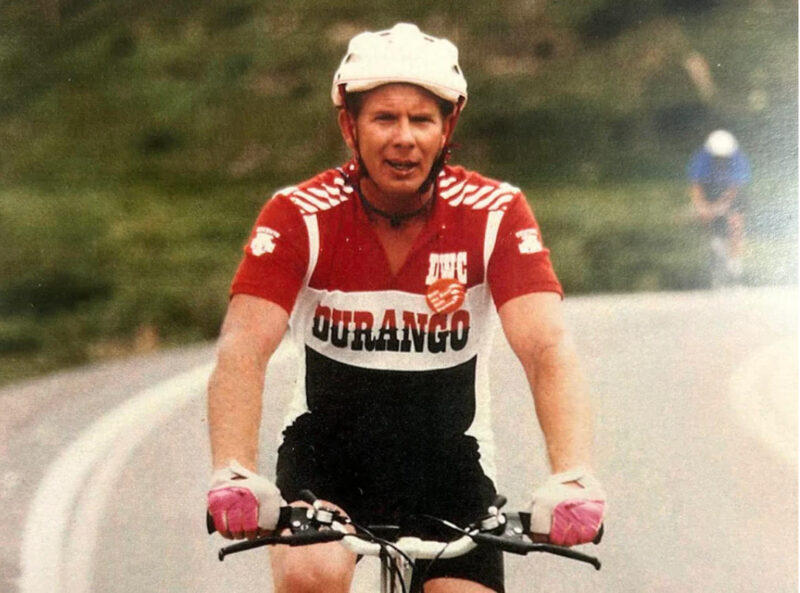
Yucatan Jungle Hike Could Help Maya Communities: Mexico’s Camino del Maya is a 110km hiking and biking trail that opened in 2020. It took three years to build and was created to help reverse centuries of colonial exploitation in the Yucatan.
In Mexico, jobs, education, and medical care are limited outside of a couple of centers. Local communities created the trail to preserve their Mayan history and culture by helping them survive without leaving their villages for cities.
All the guides are local, and 80% of the profits go back into the community.
Chinese-American Aviatrix Overcame Racism to Fly During WWII: On Oct. 24, 1932, Hazel Ying Lee became the first Chinese-American woman to earn a pilot’s license in the U.S.
Just months earlier, she took lessons at the Chinese Flying Club of Portland, which trained Chinese-American men to return to China to help defend their country from Japan. The boys treated Lee like their little sister. She idolized them and wanted to be one of them.
When she was in the sky, it did not matter that her heritage was Chinese or that she was a woman. No one could see her, and she could be completely herself. Eventually, she became one of just two Chinese-Americans who flew as pilots in WWII.
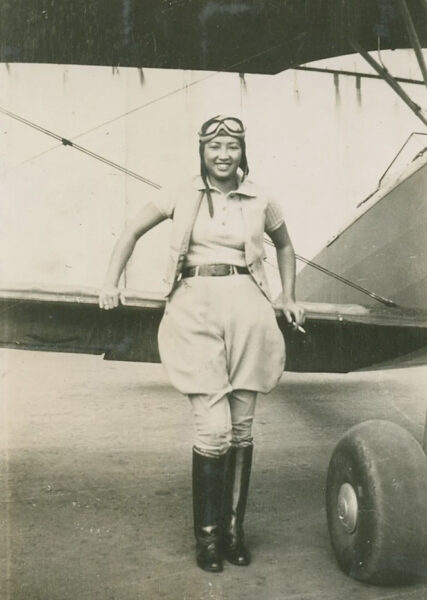
Confronting a different world
A Cranky Old Man Returns to Climbing: When Dave Pagel ended up on crutches, everyone assumed he’d been in a climbing accident. He very quietly told them he acquired the injury gardening. Slamming his foot repeatedly into a shovel had ruptured the sinew in his ankle.
He went from a sore ankle to crutches, to a limp, to a walking stick to a wheelchair. Climbing disappeared from his life. When a surgeon finally figured out what had happened and fixed his ankle, he couldn’t imagine heading back into the mountains. He was used to his new sedentary life.
Then his dad dropped dead, and that scared him. He began working out and eventually picked up a climbing magazine. The world of climbing had evolved more than he ever expected. The big question was, did he want to jump back into the new game?
Congrats, You’re Dating a Surfer!: Dating a surfer isn’t for everyone, but this writer thinks those who do are some of the luckiest out there. He’s even made a list of why these partners are so fortunate to date individuals like himself.
First, a surfer's reliability. You can always count on them to be there, unless, of course, the waves happen to be particularly good that day. Then there’s their cleanliness. Your car and house will absolutely not be covered in surf wax, zinc, and endless trails of sand.
Last is their spontaneity. They are always up for random weekend activities, as long as they involve the ocean and their surfboard. But you go have fun at the farmers' market. They’ll see you when you get home, at exactly the time they said they’ll be back.
On April 23, Patrick Johnson and Patrick Gephart of the U.S. summited 6,487m Tengkangpoche in the Rolwaling Himal. They did their new route alpine style via the north face, according to the managing director of Itrek Everest, via The Himalayan Times.
According to Johnson, Tengkangpoche's north face was rather dry. After studying the face from several angles, they chose a route that linked several sections of ice and mixed terrain through passages they deemed safe.
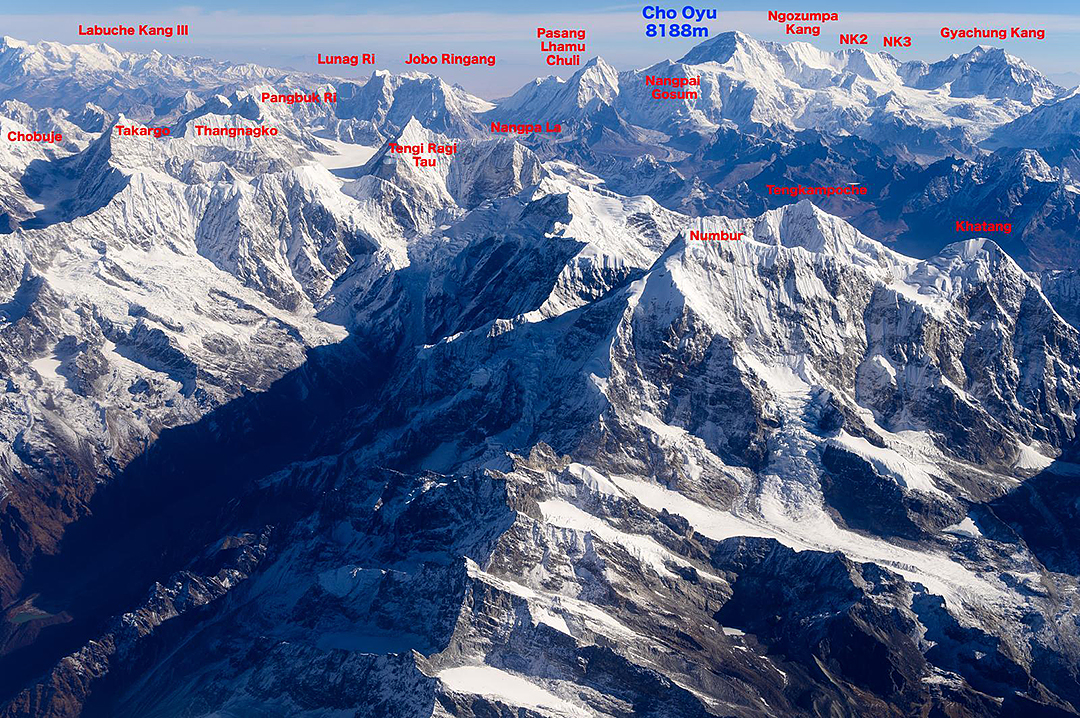
The climbers bivouacked at around 4,570m before beginning the ascent. They then navigated easy ice to the base of a smear of ice on the clean rock face. Johnson says they were pleasantly surprised to climb it in two fantastic pitches at WI3+.
The pair then continued directly up the north face, linking pitches of easy ice and mixed terrain with long sections of steep snow.
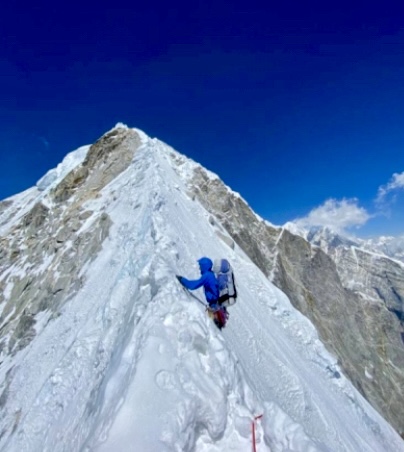
"A final pitch of WI3 led us to the east ridge," recalls Johnson. "We bivouacked at 6,000m and endured a sleepless night with neverending wind."
The duo continued east toward the summit in clear weather, navigating a steep, narrow ridge with long sections of ice and neve.
Johnson recalls that several seracs and crevasses guarded the final ridge, but they passed with careful route finding. They finally reached the top of Tengkangpoche on April 23 at 3:30 pm, in the clouds.
They judged their new route WI3+/M3 Steep Snow, 1,500m.

In her first Alaska climb since losing several toes to severe frostbite two years ago, Anna Pfaff and partners Andres Marin and Thomas Bukowski established a new 983m route on the south face of 3,429m Mount Providence, although they had to turn around 100m below the summit.
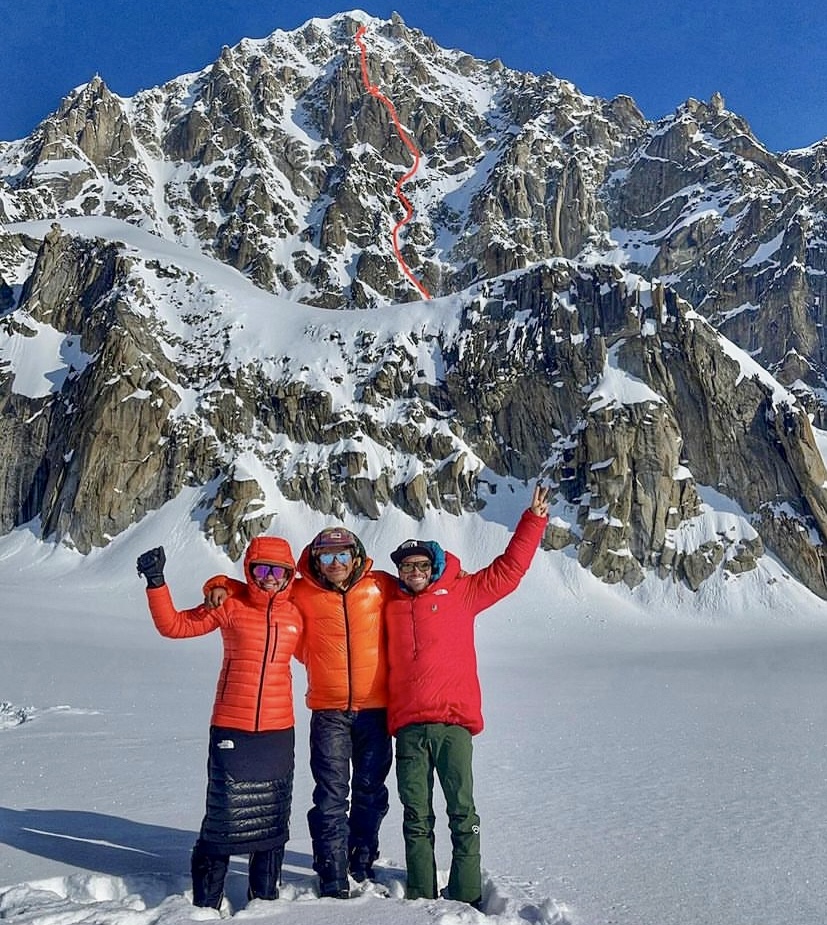
The three flew onto the Thunder Glacier below Thunder Mountain and Mount Providence. Thunder Mountain has a good collection of routes up its various gullies and chutes, but Mount Providence has seen curiously little attention. They decided to go for a new line up the center of the south face, which Marin had spied before the climb. They carried food for two days.
According to Bukowski, the route was the full package: ”Lots of steep snow stepping, some funky mixed sections that Andres [Marin] styled (M5?), a narrowing ice chute where I found surprisingly good ice (AI4?), and some steep (70º?), sugary, faceted snow that Anna [Pfaff] burrowed through.”
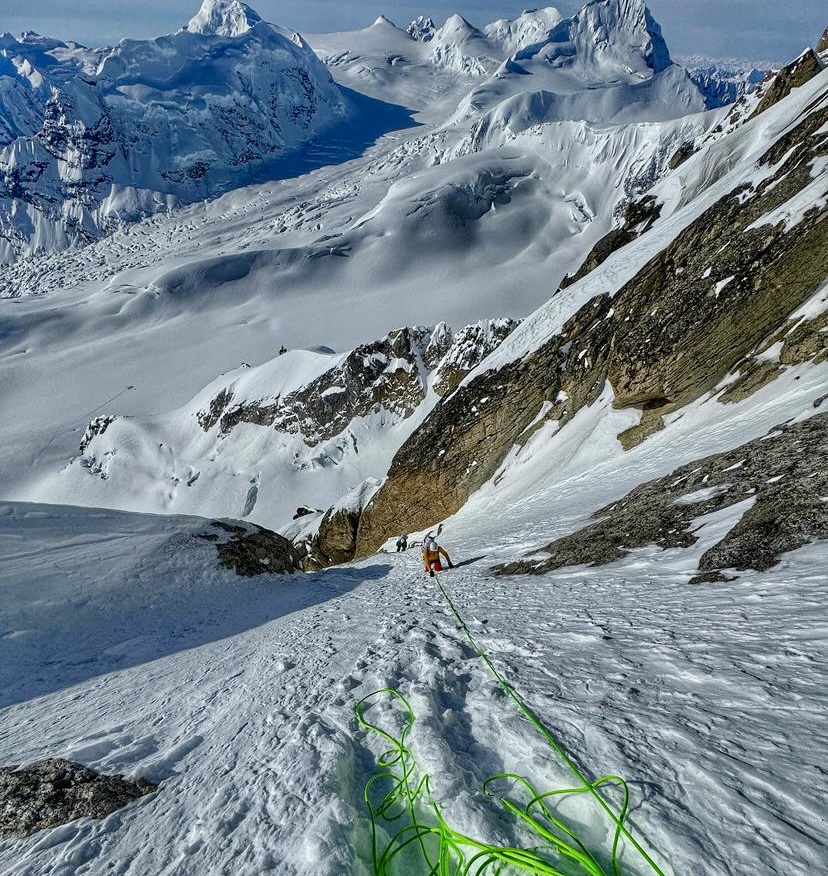
Precarious ledge
After the first day of icy rock climbing, they bivouacked on a precarious ledge below a wall. The next morning, they climb an even harder and colder pitch, eventually reaching their high point.
They were aware that the weather was supposed to worsen shortly. They weren’t prepared for a second bivy and needed time for the descent. In the end, they descended shy of the summit.
"We had already climbed the steepest and hardest part of the mountain," said Marin. "It was a hard decision to make, but at the end of the day, [it was] the right and responsible thing to do.”
They named their new route Journey Through the Castle of Providence (983m, V, M5, AI4, 5.10).
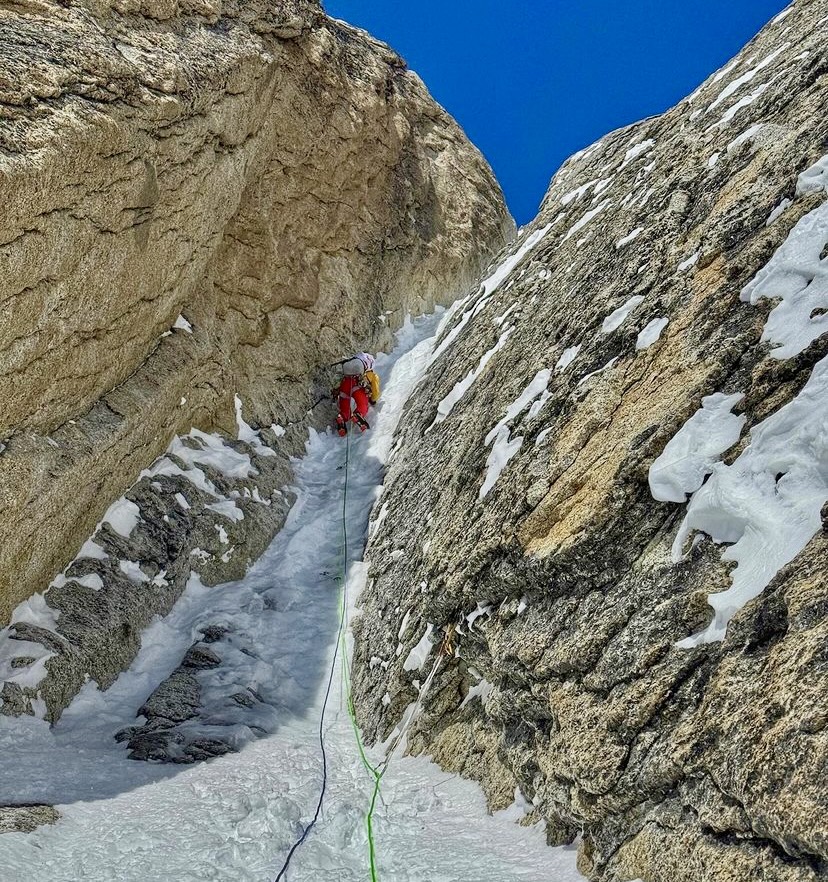
Pfaff lost several toes in 2022 after climbing the difficult 1,200m Harvard Route on Mount Huntington with Priti Wright. Last year, she climbed Kyajo Ri in the Himalaya with some partners, but this was her first time back in Alaska.
”Seeing Anna [Pfaff] back in the Alaska mountains, climbing hard with a smile on her face, was an awesome and emotional thing to see,” wrote Marin on social media.
Although their route did not end at the summit, climbing is about much more than reaching the summit. Mark Twight wrote once that his best and most beautiful routes didn’t end at the top.
Medium take: Seb Bouin is the world’s best sport climber not named Adam Ondra. Hot take: Bouin has been the world’s best sport climber, period, for the past two years.
The Frenchman just tagged yet another ninth-grade climb, tossing Les Rois du Lithium (9b/5.15b) onto his growing pile. The route on the sparse limestone of Pic Saint Loup, France, explodes out of an 8b start into 20 meters of the business — a razor-straight line with holds that clearly inspired Bouin, the first ascensionist.
“When I bolted it, I couldn’t imagine there will be so much perfect holds. And when I first tried it, I was amazed by the moves and the line,” Bouin said in a Black Diamond Instagram post.
View this post on Instagram
Bouin called it “probably” his favorite route at the grade ever. That includes Jumbo Love, the United States’ first 9b, and Ondra’s Mamichula.
Lately, the 31-year-old has been aiming higher. Not content with Jumbo in 2022, he completed a savage extension to author Supreme Jumbo Love — America’s first 9b+. That came after he created DNA, the world’s second 9c route (still unrepeated).
Characteristically unwilling to rest on his laurels, Bouin said he’s not done in Pic Saint Loup yet.
“There is another hard and inspiring project in Pic Saint Loup: The Wolf Kingdom project. It will be harder than Les Rois du Lithium,” he said. “Let’s continue the fight!”
When we’re not outdoors, we get our adventure fix by exploring social media and the web. Here are some of the best adventure links we’ve discovered this week.
‘Stairway to Heaven’ Hike To Be Demolished: The Haiku Stairs in Honolulu, often called the "Stairway to Heaven," will be demolished. The popular trail has actually been closed to the public since the 1970s. Despite this, hikers flock to it.
Thousands of images of the photogenic stairs populate Instagram. More importantly, in the last 12 years, there have been 118 rescues. Tourists climb fences and cut through local properties to try and reach the forbidden trail. Now the city has had enough. In the next six months, they will remove the 4,000 steps to stop trespassers and restore the area's natural beauty.

The Woman Who Transformed Travel: In 1973, Hilary Bradt and her then-husband were backpacking in South America searching for a hidden trail they had heard about, one that led to Machu Picchu. Their notes on this became the first published description of the Inca Trail in English. It was the start of Bradt Guides.
A few years later, Bradt and her husband divorced and he left the business. She decided to continue without him, to continue exploring and writing guides about far-flung places. Here she speaks about why she always wanted to explore, how the guidebooks came to be, and her love of hitchhiking.
Stormy relationship
Caught in a Storm During a Hike. Who’s to Blame? Two friends went on a three-day hiking trip. On the last day, they added in an extra trail that shouldn’t have taken more than an hour. One of them kept looking at her phone to check the time and weather. She was scared of lightning, and a storm seemed to be brewing.
The second was irritated by the constant phone use. Distracted, they missed a turn, ended up on a longer route, and got caught in a thunderstorm. Now both want an apology and think the other is at fault.
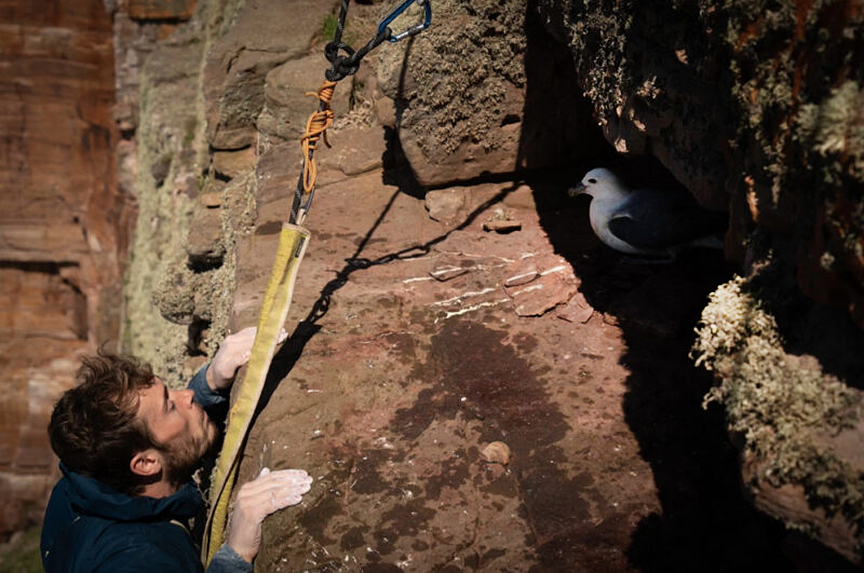
Wings and Walls: Every crag you climb is home to other creatures, especially birds. In the UK, the number of birds is in a huge decline. Populations have fallen by 73 million in just 50 years.
Climber and naturalist Robbie Phillips has written a guide to climbing etiquette when it comes to birds. He goes into the precautions all climbers should take, the laws around bird protection in the UK, and what to do if you stumble upon a nest.
Booze and climbing
Do Climbing and Alcohol Mix? For many, beer is the post-climbing drink of choice, but sometimes it's also a pre-climbing libation. While of course there is a huge downside to drinking alcohol, some climbers seem to do fine regardless.
Some scientific studies have found that small amounts of alcohol have very little effect on our performance. One big difference with climbing compared to other sports is the safety aspect. It is a risky sport even for the totally sober. On the other side of the balance sheet is the social aspect that post-climb drinks hold for many people.
Why You Shouldn’t Teach Your Partner to Surf: Brian Sousa has tried to teach his fiancé to surf many times. It has never worked out. They have had a few good sessions out on the water, but while he sees surfing as something that "ignites my soul," her interest in it has waned.
He doesn’t think he is a bad teacher in general, only when teaching his partner. There are two main reasons. First, the panic that fills him when she disappears from sight, and second, his own ego.
Queen of the Desert Bus rediscovered

The 30-Year Hunt to Find the Priscilla, Queen of the Desert Bus: Priscilla is a cinematic icon. But after filming finished, the silver bus disappeared in 1994. The History Trust of South Australia was skeptical when one man phoned them in 2019 to say he had the bus.
They assumed it was a fake, just another person claiming he owned the famous vehicle. But this time, it turned out to be true. This recounts the bizarre story of how the silver bus ended up in a man's garden.
Lost in the Woods. Snow Was Falling. Time Was Running Out: Forest ranger Robbi Mecus was at home when she got the call. A woman said her son had gone hiking in the Adirondack Mountains that morning. At almost 10 pm, he had still not returned and 40cm of snow was forecast overnight.
What ensued was a life or death search-and-rescue, as 25 searchers raced against time to find the missing hiker.
What’s this new look on Adam Ondra?
He’s not grunting like an angered primate, screaming volcanically, contorting his joints into alien angles.
He is talking about what’s important in trad climbing, popping off 7b moves, and pensively walking through quiet morning streets in quaint Annot, France.
Why does this person suddenly have a normal-looking haircut and at least a roughly relatable approach to rock climbing?
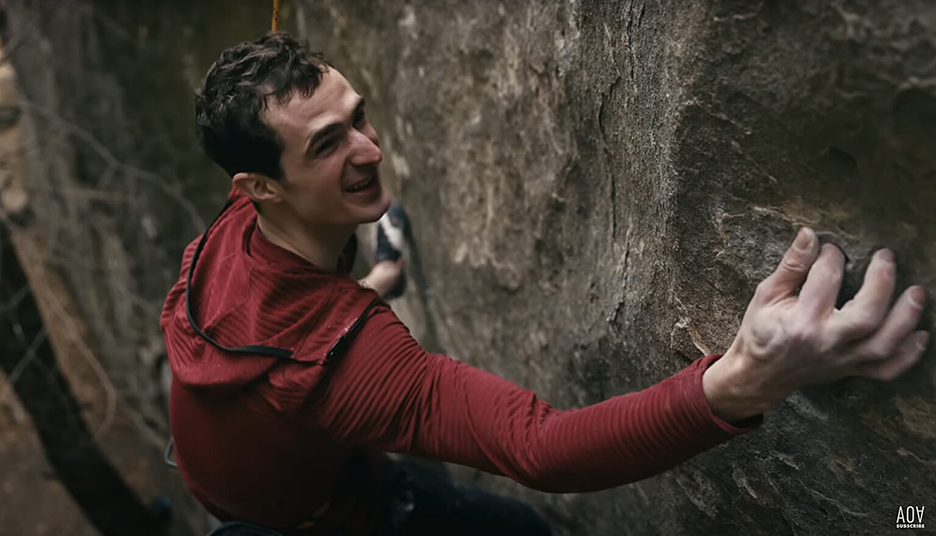
As I watched Ondra attempt James Pearson’s Bon Voyage (E12/9a, maybe the world’s hardest trad climb), I thought maybe he’d lost a step. When he fell off the climb and didn’t visibly seethe in his harness, red-necked and ashen in the rubble below, I felt certain of it.
It’s the special privilege of every rabid climber to covet a certain factor. If you were Chris Sharma, you’d call it core climber-y psych; if you were Sasha DiGiulian, you’d correctly label it inspiration; if you were Gucci Mane, you’d call it sauce.
“If a man does not have sauce, then he is lost. But the same man can get lost in the sauce,” Gucci proclaimed sagely.
So, I wondered at this new, demure Ondra, is he lost or does he still have the sauce?
Then the man calmly and collectedly took four goes to bag the first repeat of the hardest trad climb in the world with barely a sound.
I went back and watched this clip, a personal favorite from Ondra’s teenage years — and pulled a frame from the post-send celebration for a side-by-side.

The sauce comes and goes, sure. But also, the more things change, the more they stay the same.
When Boulder, Colo. rescuers got a call — or a meow — for help from the Flatirons, they sprang into action.
The call came from the First Flatiron, an iconic climbing location and frequent rescue site. On the other end of the line: Texas climber Austin Wolff and a local partner, plus Wolff’s tabby cat, Link.
View this post on Instagram
The Denver Post confirmed Wolff, Link, and Susan Katz got benighted on their planned climb after struggling to build anchors. The Rocky Mountain Rescue Group escorted the climbers and their feline companion to safety. Rescuers found the team unharmed but cold — except for one member.
“I wish other people could see her up there,” Wolff told the Post, referring to Link. “She was snoring. She took a nap and was snoring. While we were all teeth-chattering, she was hanging out, sleeping. She was 100% calm. She was probably calmer than all of us.”
Experienced adventurer
The pet feline’s calm could be due to her adventure experience. Wolff adopted Link after reading Adventure Cats: Living Nine Lives To The Fullest. Found by a friend at a Texas construction site, Link now rides harnessed into a backpack on climbs with Wolff. When it’s safe, Wolff lets her explore crags on her own.
It may be unusual, but the arrangement is not unprecedented. Old heads might recall the exploits of Whisper, the world’s first BASE-jumping dog. And this week's Adventure Links included the story of a cat that guides hikers on the Appalachian Trail.
Regardless, Wolff and Katz caught some accusations of climbing irresponsibly. They’re far from the first group to require a rescue in the Flatirons, where spectacular views and low-angle climbing can draw unprepared explorers. Rocky Mountain Rescue Group spokesperson Angela Tomczik emphasized her organization’s commitment to adventure safety.
“We were happy to assist the climbers and their cat off the cliff and to the ground safely,” Tomczik wrote. “We want everyone to know we are available 24/7 and never charge for rescue. Rocky Mountain Rescue Group is an all-volunteer team and is always happy to help our community.”
When we’re not outdoors, we get our adventure fix by exploring social media and the web. Here are some of the best adventure links we’ve discovered this week.
Botswana’s Female Safari Guides: In Africa, working as a tour guide is often seen as a man's job. But women are increasingly challenging this stereotype.
In Botswana's Okavango Delta, there are now a handful of female "polers" or mokoro guides. They expertly steer canoes over the wetlands, sharing knowledge of their home with tourists. Most of these women have been steering these boats since they were children. The canoes have long been the main mode of transport for their communities.
Paddling in a Superfund Site: Brad Vogel moved to Brooklyn in his twenties. He was working at a law firm when he first heard of the Gowanus Dredgers Canoe Club. The group would canoe in a canal filled with pathogens, heavy metals, chemicals, and liquid tar. He still wanted to join the club.
A few years later, Vogel gave up his law career, moved to Gowanus to be close to the water, and became the captain of the Dredgers. He has written a book of poetry about the little stretch of canal, the changes in the community, and paddling on the polluted water.
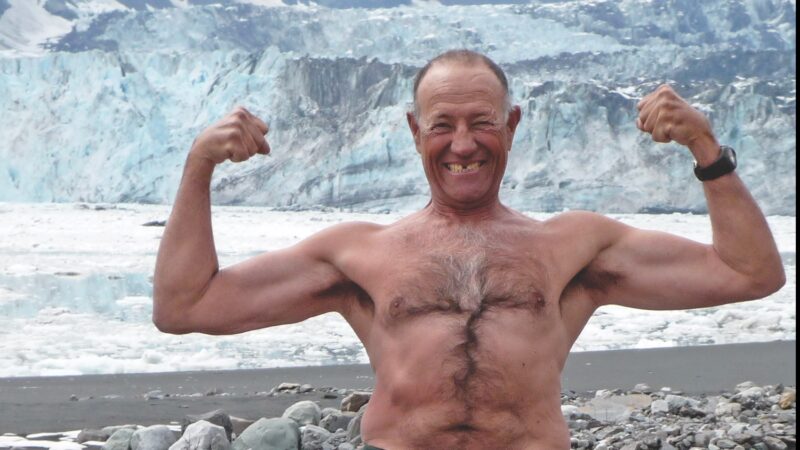
Saving fixed anchors
When You Clip a Bolt, You Can Thank This Guy: Armando Menocal was one of the founders of the Access Fund and its de facto leader from 1986 to 1993. Through the advocacy group and afterward, he fought for climbers' rights and was one of the loudest voices when the government tried to ban bolts in the United States.
Menocal always thought of himself as a trad climber but somehow ended up defending bolts and sport climbing. Now, as the National Park Service and U.S. Forest Service have suggested banning fixed anchors, Menocal's work is more important than ever.
The Long Defeat: The mountains do not always bring success. For all the stories of summits, there are many more failures.
Owen Clarke was trying to summit Tunguraha, a volcano in Ecuador. It was so cloudy he did not even get a clear view of the summit. Downpours left him and his kit soaked through. He trudged back down through the rain and wind. Frustratingly, this was his second attempt at the summit, and it ended the same way as his first. The first failure had irritated him for years. Now, his second bid was just as disheartening.
He thinks one of the reasons it is so tough is that you are acting out what you are doing. As you quit, you have to retreat and make your way back downhill physically. It is an emotionally draining experience. Yet it also makes the victories even sweeter.

The very first road trip
How Women Used Cars To Fuel Empowerment: Bertha Benz took her husband's "Patent Motor Wagon" out for a spin in 1888. She wanted to visit her mother and was tired of her husband's obsession with inventing the automobile. Some view her journey as the first road trip.
The Many Lifetimes of an Old Red Bike: At six, Iain Treloar was given a little red bike that had been in the family for generations. Six-year-old Iain was not that happy with the bike. It was not shiny and new like the other kids' bikes. Decades later, the little bike was still at his grandma's house when he visited.
He felt a pang of guilt about how ungrateful he had been and asked his grandma about the bike. What unfolded was a story that went back to the late 1800s. It was his grandma's first bike in the 1940s, and nearly everyone in his family had learned to cycle on it.
New Zealand alpinist Daniel Joll leads off Changabang with a voiceover. He’s describing the sensation of a certain objective that dominates one’s consciousness. His words aren’t calculated, but they’re still bullseye-precise. He emphasizes “knowing,” “sits,” and “eats.”
“Knowing that mountain is there. It sits in the back of your head. It eats away at your consciousness.”

For him, it’s Changabang.
Maybe it’s not the most prominent peak, but Changabang (6,864m) commands respect. It’s a hard-won feather in the crown of any climber in India who perches on its lonely summit. Joll and two teammates couldn’t shake the visionary effort of Pete Boardman and Joe Tasker on Changabang’s West Wall in 1976. So they leaned into it — and came out with a second ascent the mountaineering community had anticipated for 46 years.
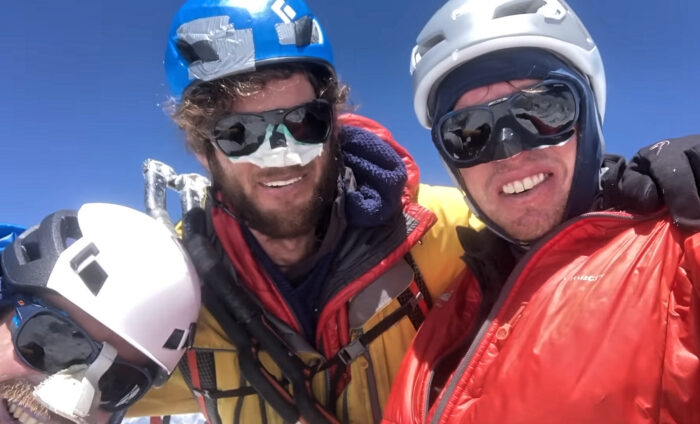
Success after 46 years
Twenty teams had failed on the 1,600m Boardman-Tasker Route before Joll, Matthew Scholes, and Kim Ladiges. But the three changed the calculus in 2022 and cracked the top five in ExplorersWeb’s expeditions of the year.
The effort didn’t seem plausible until the final hour.
“The only way to cope was to focus on one day at a time…We reminded each other not to think too far ahead. None of us thought we would summit. We never imagined it could be possible until the final one hundred meters,” Joll told ExplorersWeb’s Angela Benavides.
The team’s vigor for improvisation sharpens into focus in Changabang: Return to the Shining Mountain.
Ladiges describes that even the routine task of acclimatization was practically impossible.
“Just because of the time involved with getting to the mountain, all those things, we just knew it wasn’t going to work,” he said of the team’s early May ascent. “So we just kind of knew we had to strap onto the mountain and start.”
To say the least, the climbing merited attention. Watch for shattered blonde granite, neve-blanketed vertical ice, and dizzy exposure.
When we’re not outdoors, we get our adventure fix by exploring social media and the web. Here are some of the best adventure links we’ve discovered this week.
From Death Valley to Denali: In the next few days, Oli France begins cycling from the bottom of Death Valley to Alaska's Denali. He will then climb North America's highest peak.
It is part of a larger project where he aims to get from the lowest point of each continent to the highest point by human power. This is the second part of the challenge. His first continent was Africa.
The Allure of a Remote Caribbean Island: Mona Island sits halfway between Puerto Rico and the Dominican Republic. Over the centuries, it has hosted indigenous communities, pirates, prisoners, scientists, and refugees.
The island lies in the middle of the Mona Passage, a notoriously rough stretch of water and a popular migrant route. Many migrants end up stranded on Mona and have to be removed from the wildlife reserve by rangers living on the island.
The bloody couloir
Cody Townsend Ends ‘The Fifty’: In 2019, pro freeride skier Cody Townsend began ticking off the 50 classic ski descents of North America. He has finished 46 lines. Line 46, The Bloody Couloir, was a full circle moment for him. Twenty years earlier, it was the first big mountain line he ever skied.
But now Townsend says he is done with "The Fifty." He will not film the remaining four lines and is unsure if he will finish them.
"Whether Bjarne [Salen] and I complete all 50 or not, that is a question I continue to seek the answer to," Townsend says in what may be his final video in the series.
An Interview with Siebe Vanhee: Siebe Vanhee has made ascents all over the world. Many have been first ascents and first free ascents. Recently, he was part of the team that made the first free ascent of Riders of the Storm in Patagonia.
Vanhee speaks about his first attempt at the wall, the move from sport to big-wall climbing, how Belgium (a country with no big walls) has produced so many talented big-wall climbers, and about going back to Yosemite's Dawn Wall.
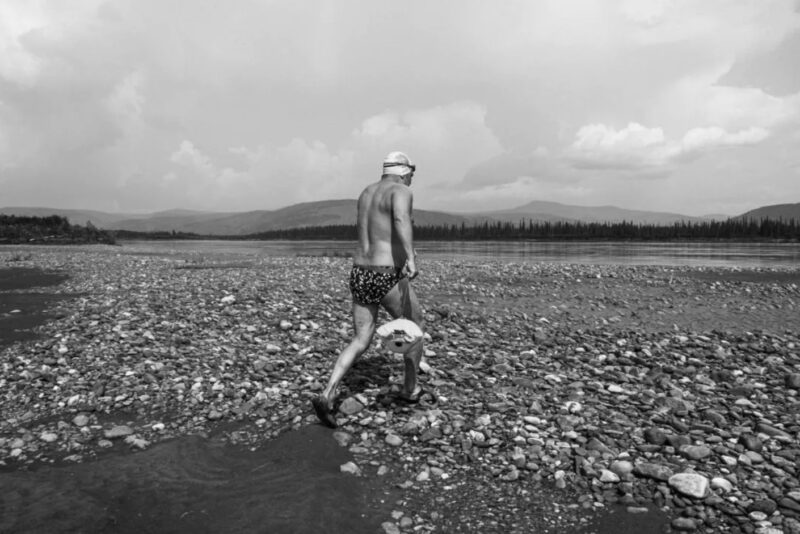
Leszek Naziemiec’s Yukon Odyssey: Last July, Leszek Naziemiec swam a 250km stretch of the Yukon River. He talks about his move from organized events to personal challenges, his love of cold-water swimming, and how he prepares for these.
Travel politics in Pakistan
Travel Influencers Tangled in Pakistan’s Politics: When Cynthia Ritchie visited Pakistan, she fell in love with the country. A year later, she moved there and eventually created a trailer for a documentary she planned to make about her new home.
The documentary never materialized but the trailer did, weirdly, inspire social media influencers to promote Pakistan as a new holiday destination. While some enjoyed their country's positive attention, others felt it distracted from serious national issues.
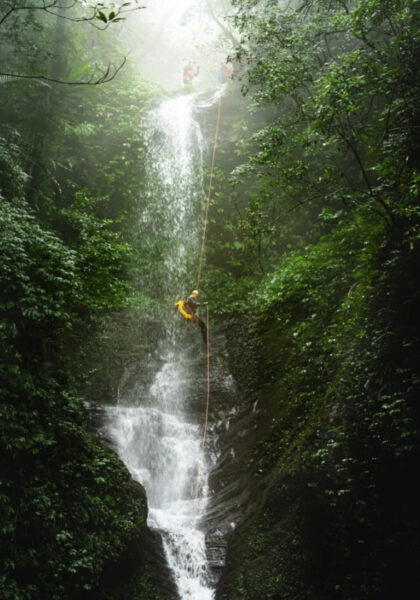
Hunting Happiness Through Adventure in Taiwan: In February, Sofia Jin set out to explore Taiwan's adventure scene. The island is hardly a famous adventure destination, but there are many possibilities.
Focusing on climbing, cycling, and watersports, Jin rapped down the Dajianshan waterfall, climbed the Long Dong sea cliffs, and cycled through Yangmingshan National Park. This first part of an upcoming series explores whether adventure can lead to happiness.
Fifty More Classic Climbs in North America: In 1979, Steve Roper and Alex Steck published Fifty Classic Climbs of North America. To this day, no one has completed them. Owen Clarke suggests 50 more classic climbs on the continent; most are slightly more accessible than those in the original list.
Below the giant peaks of the Himalaya, the valleys of Nepal have a remarkable potential for rock climbing.
A growing community of locals wants to get the best out of it. Some of them, under the umbrella of Peak Fifteen Foundation, led by UIAGM guide Vinayak Malla, have been opening and bolting routes in the Manang district.

Now, they have finished the first-ever route guidebook to crag climbing in Nepal. It describes 40 routes of all levels of difficulty around Manang, and includes info about grades, accommodation, how to get there, etc. "
It took us two years," Malla told ExplorersWeb.
Malla finished the guide just in time because in a few days, he gets back to work, guiding on Everest for Elite Exped.
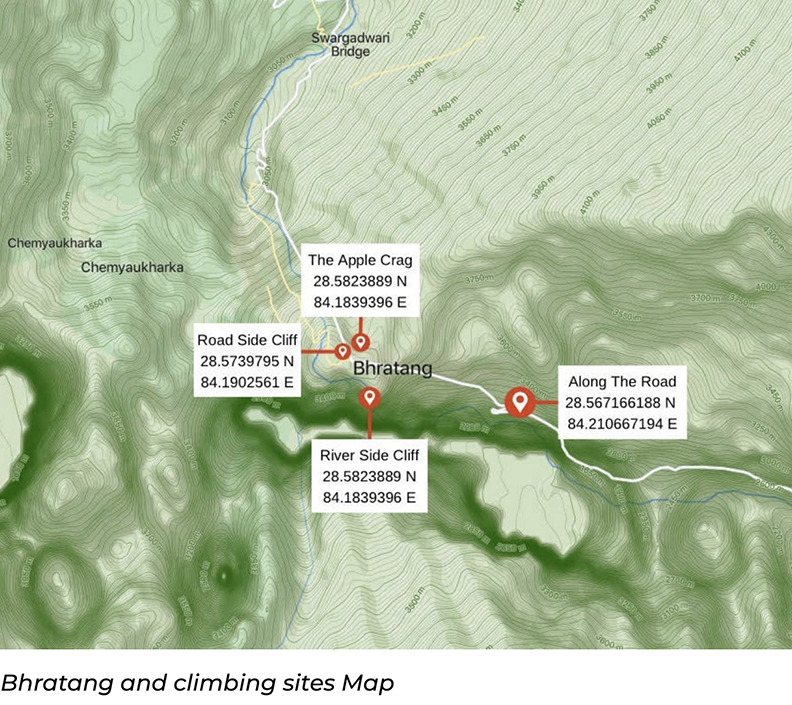
This book is just a start. "I think Manang is a future rock climbing hub," said Malla. "We are looking forward to developing more areas."
The topo guide is free, and you can download it here.
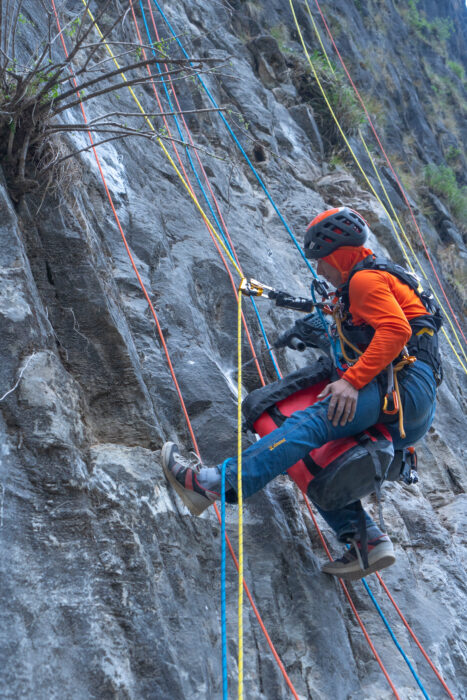
Cutting-edge climbers in the Alps have a habit of looking around while ski touring, in case they spot thin lines of ice everyone else has overlooked. Sometimes, the novelty is in full sight on popular spots but passes unnoticed by all but expert eyes.
That was the case recently when Bertrand Delapierre saw a potential new route on the Envers des Aiguilles (Mont Blanc massif) as he skied down the hyper-visited Valle Blanche above Chamonix.
Delapierre notified Mathieu Maynadier and the Ladevan brothers, Louna and Tristan. They went for it a few days later, with Delapierre hanging back on this occasion to take the photos.
Luckily, the line was still there. It followed a narrow gully on the SE face of the l’Envers des Aiguilles, also known as II Pointe de Nantillons.
The result was a 400m line that the climbers named the Syndrome de l’oubli (Syndrome of forgetfulness) and graded 5/M7.
They found the first two pitches exceptionally difficult because of the conditions. This was "followed by an easier part and then really amazing, sustained, and steep mixed climbing to the top," the brothers reported. They believe that the line had likely been done in summer as a rock climb, but not as an ice climb.
That particular face has seen other new routes recently opened, PlanetMountain reported. These include the Hypnotic Lain by Oliver Gajewski and Santiago Padros, and Sorterriko Koblak by Alain Andres and Garo Azkue.
Ready for further projects
Since then, rising temperatures have forced the climbers to forget about ice routes and turn to high-difficulty classics, such as the M7+ E-Logik. This time, Bertrand Delapierre also joined the fun.
Then the Ladevand brothers -- who won the gold and bronze medals at the 2022 ice-climbing World Championships -- sent Sanction style, also with Delapierre. It is considered the hardest route on the Blade Stadium crag in Argentiere, graded an M9. "What better training for north faces!" they wrote afterward.
Maynadier has also made the most out of the winter season, with a number of new alpine routes. Last week, he combined hard dry-tooling and mixed routes with paragliding descents. He'll likely use this training in the Greater Ranges soon, as he did on Meru South (Garhwal Himalaya) last year.
When we’re not outdoors, we get our adventure fix by exploring social media and the web. Here are some of the best adventure links we’ve discovered this week.
Cougar Attack: A young male cougar attacked five cyclists on the Tokul Creek Trail in Washington State. All of the women were competitive cyclists in their 50s and 60s.
Thirty kilometers into a ride, a cougar tackled Keri Burger from her bike and clamped its teeth down on her jaw as they both fell into a ditch. Her four friends spent the next 45 minutes trying to get the cat off her. They threw stones, tried to pry open its jaw, stabbed it with a small knife, and even tried to choke it.
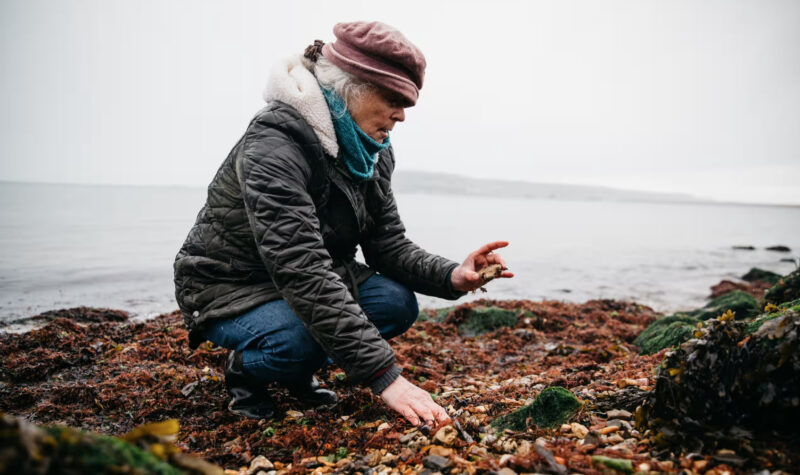
I Discovered Thousands of Fossils After Retirement: Heather Middleton’s love of fossils started when she was 10 and found ammonites in her garden.
After studying natural sciences and working in Ghana, she put her research plans on hold to raise a family. At the age of 60, she returned to her love of paleontology. Two decades later, she discovered over 2,000 fossils and co-authored a book about her findings.
Solo paddler and distance swimmer
Lean And Hard And Sunbrowned And Kind: Listen to a podcast about long-distance swimmer and solo paddler Audrey Sutherland, who lived completely out of the ordinary.
Living in rural Hawaii, Sutherland would head off to swim the Moloka’i coast, leaving her eldest children in charge, and only returning a week later. The family would spend weekends and holidays exploring and foraging.
Sutherland paddled all over the world in a kayak she ordered from a magazine, but her favorite place was Alaska. She loved it so much that she returned there 24 summers in a row.
The Surf School for Young Sri Lankan Women: In 2004, a tsunami killed over 30,000 Sri Lankans. Unsurprisingly, many people are still wary of the water decades later.
SeaSisters is a social enterprise program training young women to swim and surf so that they feel more confident in the ocean. Surfing was always seen as something tourists and men did. This program is working to change that.
The Groove Repeated After 16 Years: James Pearson made the first ascent of The Groove on Cratcliffe Tor in 2008. On March 6, 2024, Pearson's original line was successfully repeated for the first time.
Alex Moore explains why he wanted to climb this particular route and how it differs from the route climbed by Kevin Jorgeson.
No evidence
Sports Psychology Has an Evidence Problem: Most people in the extreme sports world will tell you the mental component of a challenge is as hard as, if not harder than, the physical aspect.
Sports psychology has long interested Alex Hutchinson. He was surprised when a new study came out earlier this year claiming evidence behind sports psychology theories is seriously lacking. He decided to investigate.

A Year of Walking across the U.S.: In March 2023, Holden Ringer started hiking across America. Beginning in La Push, Washington, he walked across 14 states and finished in Washington D.C. last week.
Ringer did not take the most direct route. He wanted to stop in the many cities where he knew people. He began with a backpack, but after injury concerns, he switched to a cart.
Pierce Brosnan Pleads Guilty: Pierce Brosnan has pleaded guilty to walking in a restricted thermal area of Yellowstone National Park last year. He initially entered a not-guilty plea but retracted this during his hearing.
The court ordered Brosnan to pay a $500 fine and donate $1,000 to the nonprofit Yellowstone Forever. "As an environmentalist, I have the utmost respect for and love of our natural world. I deeply regret my transgression and offer my heartfelt apologies to all for trespassing in this sensitive area," Brosnan wrote on social media.
The mountaineering community has lost a luminary.
David Breashears died at 68 on March 14 at his home in Massachusetts, Outside reported. Friends said he died of natural causes, and his family submitted a statement to the outlet.
It is with great sadness that we share the news that our beloved David passed (of natural causes) this morning. He was a brother, father, friend, colleague and a caring, passionate advocate of adventure, exploration and the health of our planet. We are heartbroken by this loss and respectfully request privacy at this difficult time.
A venerated climber and photographer, Breashears earned his best-known success as the director of the 1998 IMAX film Everest.
His relationship with the mountain proved enduring. He first summitted Everest in 1983 and claimed its first repeat ascent by an American in 1985. His rescue efforts in the 1996 Everest disaster (which informed the 2008 Frontline documentary Storm Over Everest) highlighted his contributions to climbing.
In all, Breashears summitted world's tallest peak five times.
Along with numerous documentaries, Breashears’ film credits included Cliffhanger, Seven Years in Tibet, and even David Lee Roth's Just Like Paradise music video (which featured the famous Yosemite route Heaven).
His nonprofit, GlacierWorks, uses science, art, and storytelling to highlight climate change in the Himalaya.
Thawing permafrost on the granite spires of Patagonia is triggering the same dangerous rockfall that has plagued other mountain ranges. Most recently, some of the pitches on the East Face of Fitz Roy have changed. The objective risk of climbing has also increased.
From difficult to Russian Roulette
A fallen 20-meter slab has affected the first pitch of the Royal Flush route on Fitz Roy (also known as Cerro Chalten), Patagonia Vertical reported. The five bolts and the former belay station are now out of reach. The only way up now is a chimney (6c A0) with several unstable rocks inside it.
"One of them has a guillotine-like edge," Patagonia Vertical warned. "It is not possible to climb it as a chimney because of the blocks...but it could be free-climbed." The site also said that a climbing team will have to clean that section to make it safe again.
It also posted a video of a big rock slide to demonstrate how the rising temperatures have made conditions on Patagonian faces much more unstable.
Royal Flush now even harder
Royal Flush is a high-difficulty, 1,200m route up the center of the East Face of Fitz Roy. It was opened in 1995 by Kurt Albert, Bernd Arnold, Jorg Gershel and Lutz Richter. They free-climbed all except a mixed section and the crux.
Tommy Caldwell managed the first complete free climb in 2005, but he couldn't touch the summit due to dangerous ice conditions near the top. Check this video of Nico Favresse climbing the route:
Studies on the impact of rising temperatures and in particular, climate change in Patagonia have abounded since the 2000s. All note how dramatically the area's glaciers have shrunk and how thawing of the ice "glue" holding the peaks together has made them much more fragile.
Check this video for American climber Tyler Karow's on-site explanation. He shot the sequence last year at the Boeing Ledge on the Central Tower of Paine.
Today, Anna Wells became the first woman, and fourth-ever person, to complete all 282 Munros in winter. Over 83 days, from Dec. 22 to March 13, she climbed all the Scottish peaks over 3,000 feet.
Astronomical winter ends on March 20, so she finished with seven days to spare. For her very last Munro, Cairngorm Mountain, 16 friends joined her to celebrate her success.
Wells is not only the first woman to complete the winter Munros but also matched the pace of Martin Moran, who pioneered that feat during the winter of 1984-1985.
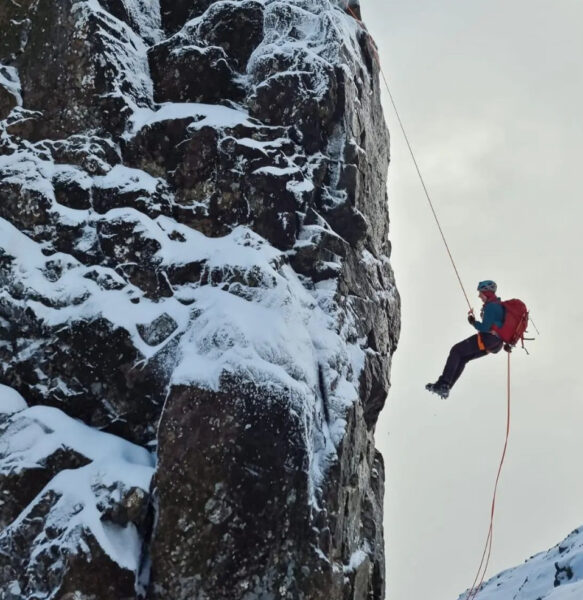
Kept pushing
She had hoped she would match his time, but after falling ill a week ago, she thought it might be impossible.
"But after a lot of pushing I was back on track," she wrote. Once during that last week, she was tempted to wait out a bad weather day.
"In the end, I couldn't comprehend the idea of sitting around,” she said. So out she went.
Last night too, she ignored heavy winds and rain and went straight from Ben Starav to Beinn Dearg. She climbed overnight as her parents -- who supported her that evening as drivers and food purveyors -- waited.
Another friend joined with her midnight Munro. They were drenched within an hour and were so wet that by the time they got to their final river crossing, they just waded across, making no effort to keep dry. Then it was home for a warm shower and a few hours sleep before the final Munro.
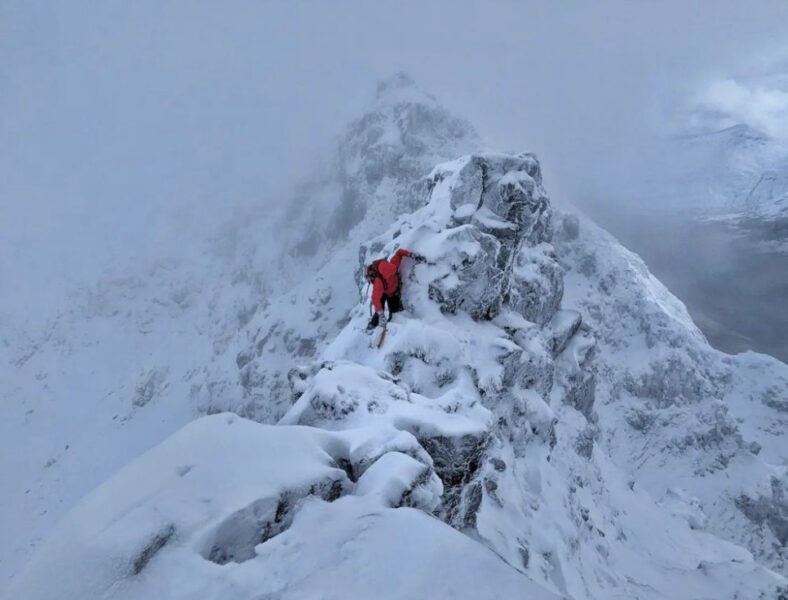
Horrendous weather
One of the biggest challenges for Wells has indeed been the "horrendous" weather.
"We had so many storms that I was quite strategic in picking individual hills [where] I was up high for less time," she said. "But the weather has been what's made it! I didn't want a really easy, soft winter,” she told The Northern Times.
Throughout the last few months, she has had to take several days off from injury or illness. Despite this, she generally covered three Munros a day. In the last week, Wells ramped up her efforts, tackling between five and eight every day. On two occasions, she has managed a staggering nine Munros in a single day, particularly impressive considering how short the days were. She had to navigate a lot of those mountains in darkness.
Wells has mainly based herself out of her mum’s house for the journey. For those peaks further away, she has stayed with friends. She then drove, hiked, or cycled between the various peaks.
Friends, family, and followers have joined her for a variety of sections. Among those was Alex Moran, the son of Martin Moran. Previous finisher Kevin Woods also accompanied her for the first few days.
Luka Lindic and Luka Krajnc have opened a 500m route on the face of Aguja Poincenot, part of the FitzRoy range in Argentina. The Slovenian duo called it The Path.
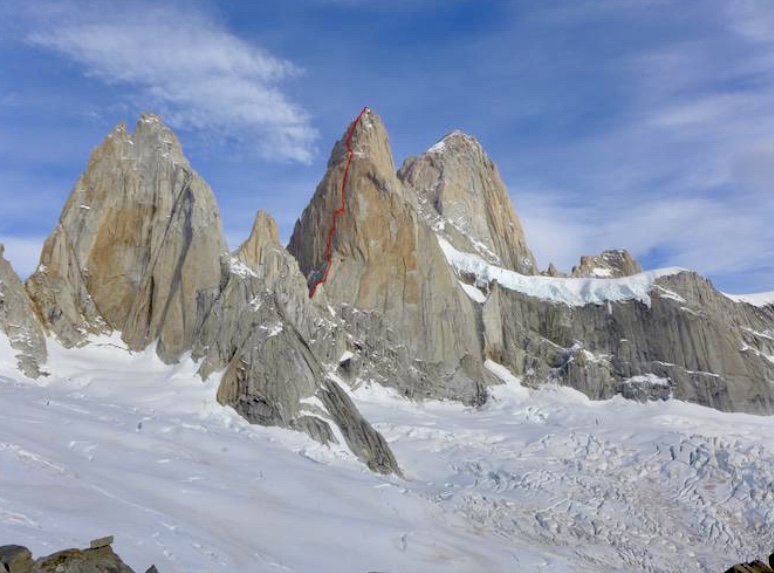
The two climbers had tried the route twice before. The first time, rockfall forced them to retreat. Then in 2023, bad weather stopped them.
This time, everything went smoothly. They made three bivouacs on the wall during the 30-hour climb. The two climbers ranked The Path as 750m, 6c, A3.
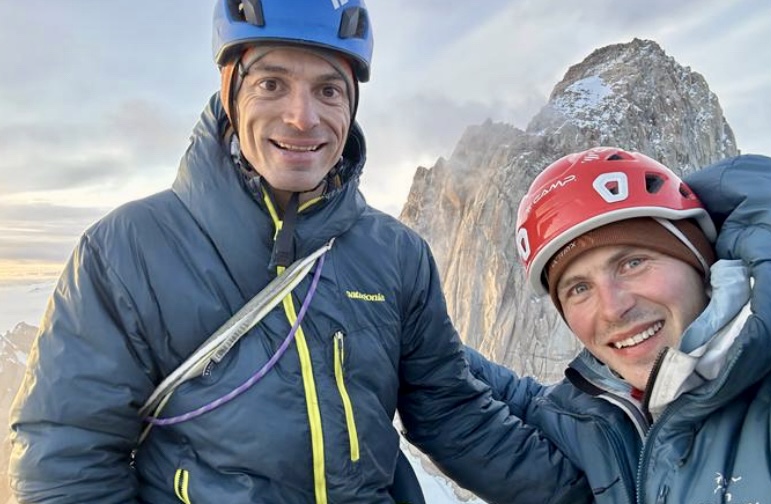
The biggest challenge of the route was finding a passage up the middle section. From lower down, it featured seemingly impossible terrain.
The Sword
Seba Pelletti and Hernan Rodriguez opened a new line on the east wall of La Espada (The Sword) This granite wall soars more than 2,100m in Chile's Torres del Paine National Park. The pair completed the 800m, A1/5.11+ climb in two days and called it Arma de Doble Filo ("Double Edged Blade").
"I hiked through the Bader Valley in November last year, but how to solve the golden red headwall remained a mystery," recalled Pelletti. A South African team made the first ascent of The Sword in 1971.
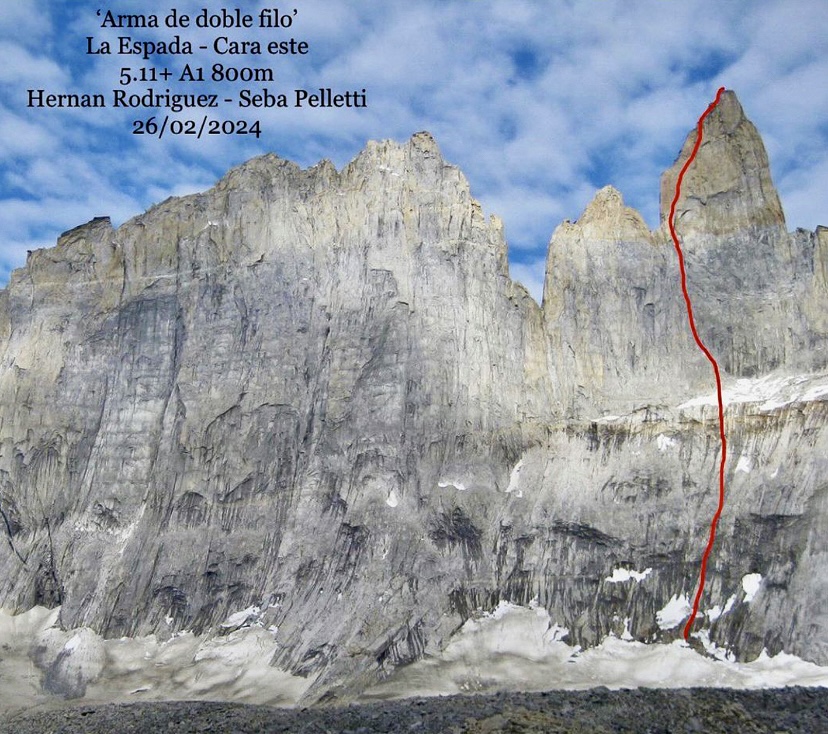
El Mocho
Matteo Della Bordella and Giacomo Mauri have repeated Bizcochuelo (450m, up to 7b+) on 1,953m El Mocho. The beautiful 15-pitch line was first opened by Gian Carlo Grassi, Roberto Pe, and Mauro Rossi.
Della Bordella and Mauri originally had an even more ambitious plan, but the weather window was too short and conditions in the mountain were tricky. So they decided to play it safe.
"It's not always easy to decide when to commit and when to stay in your comfort zone," admitted Della Bordella.
Because of the mountain's stockiness, Pataclimb picturesquely calls El Mocho "Cerro Torre’s Sancho Panza."

With spring just two weeks away, it's almost time to hang up the ice axes and screws until next winter -- unless you go really far north.
Above the Arctic Circle, the sun has returned after the winter darkness. Swedish Lapland offers excellent ice, good access, and magical light. This is where Fredrik Strang spends most of his time between the Himalayan seasons. Rather than an 8,000er climber, the aspiring IFMGA guide considers himself an ice climber most of all.
"Compared to rock, which is immobile, ice is alive," he says. "I feel it is feminine and masculine at the same time. It requires a climber to be vigilant, and attentive like a ballet dancer. At the same time, it demands determination and strength."
The best ice climbing in Swedish Lapland is northwest of Kiruna, mainly in and around two of the northernmost national parks in the country. Abisko National Park stands about 195km north of the Arctic Circle, and Stora Sjofallet (Great Lake Falls) National Park is slightly southeast, just 20km inside the Arctic Circle, on the Norwegian border.

Under northern lights
"Normally at this time of the year, [ice routes within the Arctic Circle] are safe to climb everywhere," Strang said.
The best time to go is from the end of February into March. "Winter is too dark and too cold," he explained.
The second half of November is also an option for those wanting to enjoy the dimming arctic light and the northern lights.
"The key is to have some sun, even if only for a few minutes," he says. "It creates this fabulous light with a pink sky. It's like having a six-hour sunset."
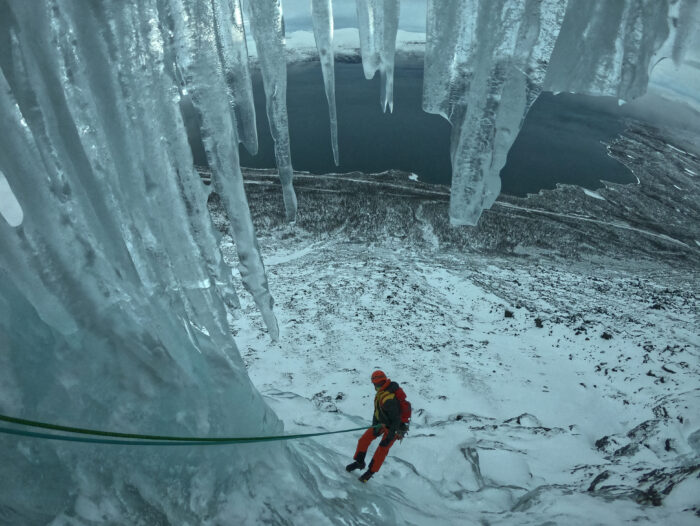
Another advantage of Lapland is solitude. "You don't have any competition on the same route," Strang said. "It's the opposite of other ice climbing spots in Europe, with climbers crowding all routes. Here, you are almost guaranteed you'll have no one else around."
Self-sufficiency needed
However, this also means you must be self-sufficient. If you get into trouble, a helicopter pickup or ground rescue may take hours. "You need to be a competent climber and skilled in risk management," Strang noted.
There is a cell connection, but only for phones operating through Telia, Sweden's biggest mobile network operator. Otherwise, a satellite device is recommended.
"Carrying an InReach is a good idea because if your phone runs out of batteries up there, you'll be totally isolated. InReach batteries last longer and can send SOS signals in case of trouble."
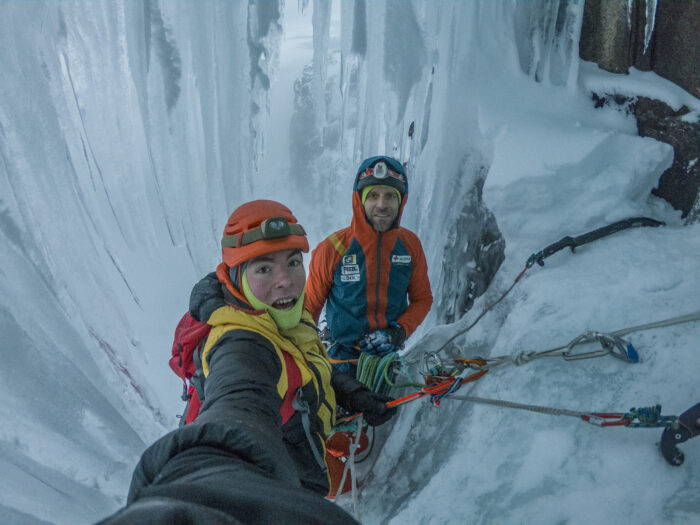
Base Camp at Abisko
Abisko is a great first stop for those new to the area. A train runs from Stockholm to Kiruna. "Here, you can rent a car, buy groceries, and drive to Abisko," says Strang. "Or you continue by train to Abisko and stay at the full-service Abisko Mountain Lodge." It even offers guided trips to the ice.
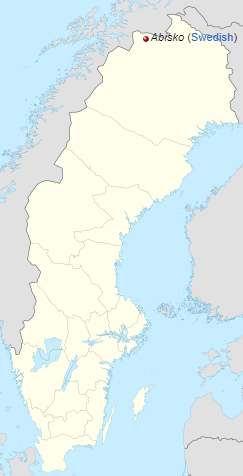
For more self-sufficient climbers or those on a tight budget, the most economical option is to carry and cook your food. "Anyway, it will be completely dark by 2:30 pm, so you're going to have plenty of time to cook!" says Strang.
The simplest option: the STF (a privately owned hiking association) runs the Abisko Touristation, a big (200-bed) hostel with open kitchen areas and a sauna. There are other options in the village, but it is wise to check whether they are open in winter.
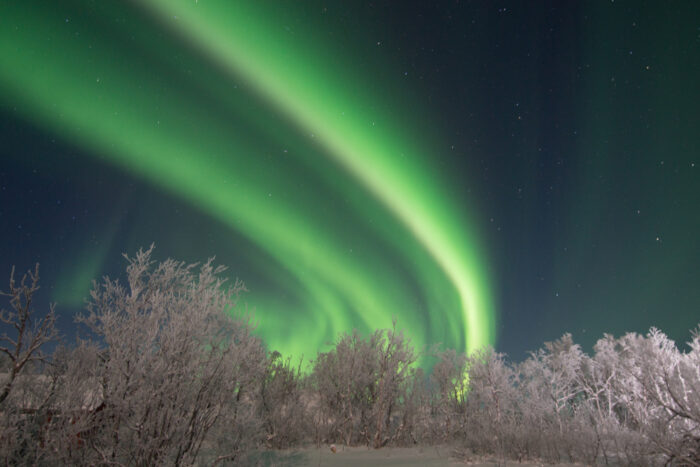
As for daylight at this time of year, the sun starts peeking over the horizon around 9 am.
"Bear in mind that most ice routes are north sides, and the sun will not be visible," Strang said. "But you'll see the pink horizon, immaculate and stunning."
Approaches
The best way to approach the waterfalls is by car. Winter is dark and bitter cold, with lots of snow, and the avalanche danger is usually high. Temperatures in November range from -8˚ to -12˚C, which is bearable. There are places along the road to park, and train stations also have parking areas.
"It is essential to study the approach to the waterfalls carefully, or you risk spending the entire light of day and your energy just getting to the route," Strang said. "Some approaches involve a lot of ups and downs, fences to climb over, thick birch forests, and slippery rocks. Check if you need snowshoes or skis, in case there is a lot of snow."
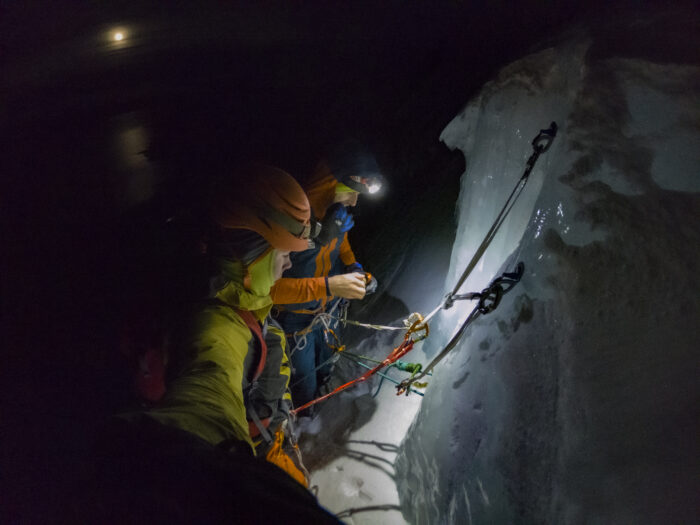
In the coldest months, some areas are accessible by walking over hard snow, with no need for skis or snowshoes, but that is not the norm. Check the conditions by asking locals in advance.
Favorite spots
For Strang, Gomda Dalen (Hidden Valley) is a special gem, an amphitheater filled with frozen waterfalls. It's relatively accessible and has lots of routes from WI3 to WI5, plus some couloirs and mixed routes for those with rock gear.
"It is a beautiful, serene place with lots of options," he says. "Make sure you get up early and get there by first light. You'll need all day to make the best of it."
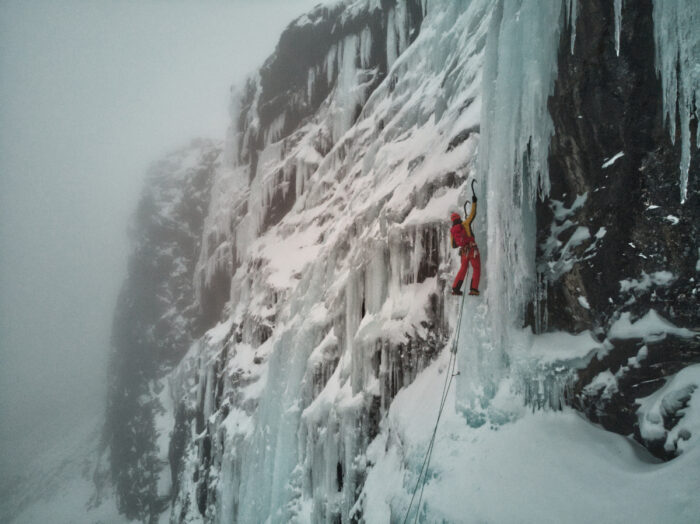
Also famous is Abisko Canyon, a gorge formed by the Abisko River, beside the E-10 (which links Kiruna and Norvic in Norway). The canyon offers a confined space with many routes and pristine blue ice. Most lines are short, less than 15 meters, but they are a great warm-up for your first day in the region.
"The ice may be quite chopped-out, since many locals go there," said Strang. "Otherwise, it's a very photogenic spot. If you like selfies, it's the place for you."
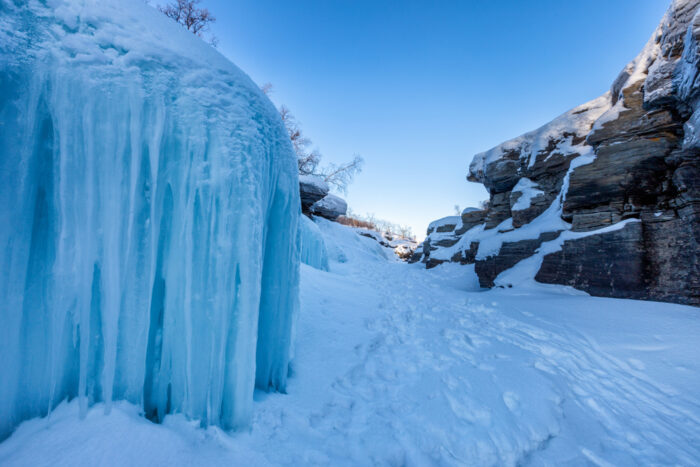
Driving for another five mins on E-10 toward Norway, on the left side, is a wall with half a dozen lines. You can park right beside the road, practice short routes, and see the iconic Lapporten, a perfect U-shaped col between two flat-topped mountains. It's the best-known landmark in Abisko National Park.
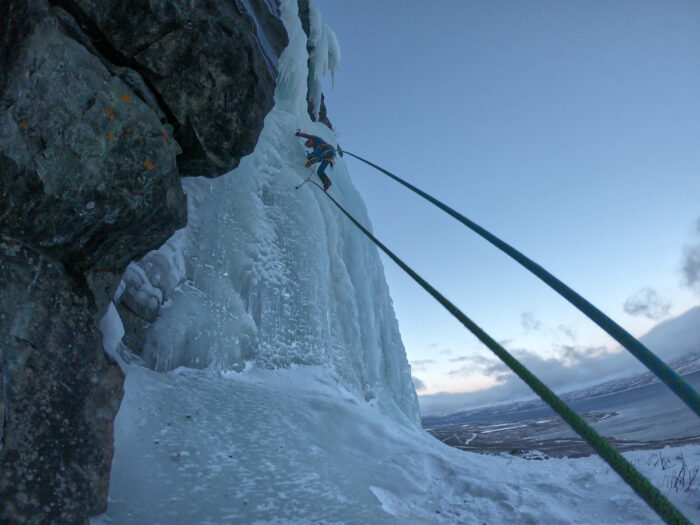
Stora Bla (Big Blue), a WI5 icefall, is also worth a try. Another, Baby Blue, features numerous routes but a tricky approach that depends on snow conditions.
See more routes in this guide compiled in 2014 by Rick McGregor.
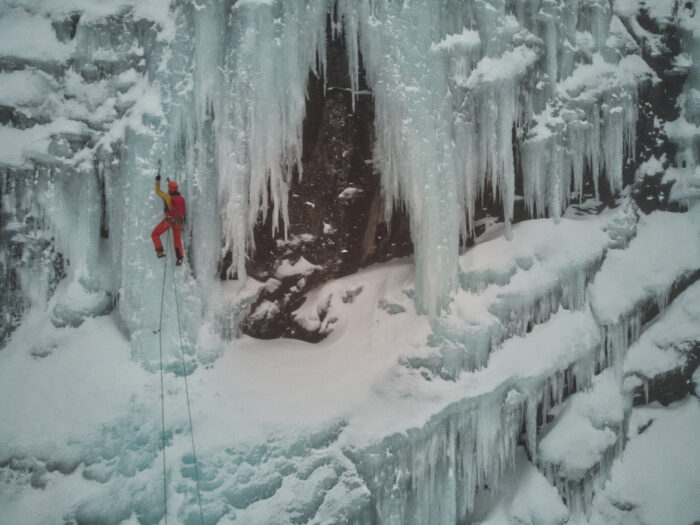
Style and ethics
In general, a no-bolt philosophy applies to the area. "If you want to climb a mixed route, please refrain from bolting" Strang notes. "Just be careful, because the rock is quite loose unless it is properly frozen."
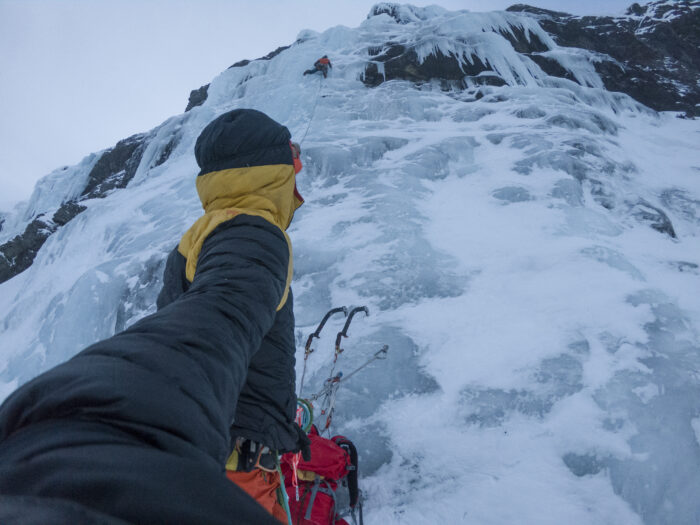
When we’re not outdoors, we get our adventure fix by exploring social media and the web. Here are some of the best adventure links we’ve discovered this week.
Alone on the Ocean: Cole Brauer is currently second in the Global Solo Challenge. Days away from the finish line, the race's youngest competitor is one of just eight remaining competitors from 16 who set off.
If she finishes, Brauer will likely set a speed record for her boat class and become the first American woman to complete a round-the-world sailing race. She has amassed 400,000 followers on social media and wants to change the face of professional ocean sailing.
Nepal's Wild West: Matt Glenn writes about his 2023 Nepal expedition with Hamish Frost, Paul Ramadan, and Tim Miller. The team split into two pairs, each with a different objective.
Glenn and Frost aimed for the North Face of Bobaye. They set out to scout the line but Glenn found it hard to breathe and couldn’t keep up with Frost. They returned to base camp to rest.
Days later, they returned to the face and climbed for a day, building a ledge on a snow slope to camp overnight. A few hours later, their tent had half collapsed. Trapped in spindrift, they had to dig their way out.
Why hasn't anyone repeated Hummingbird Ridge?

Is Hummingbird Ridge the Hardest Classic Climb?: Since its first ascent in 1965, no one has repeated the original line on Hummingbird Ridge. First climbed by Dick Long and Allen Steck, it was actually a consolation prize. They had wanted to open a new ridge on Denali but were beaten to it. Despite this, the Hummingbird Ridge's reputation has only grown over the years.
Orcas Investigate Kayakers: A group of sea kayakers filmed two orcas swimming around their boats. The killer whales pop out of the water directly next to them.
I Selected the Trail from Google Maps: Last year, Ian Snyder fell 300m while hiking in Hawaii. He was on the Koolau Summit Trail when he fell and was stranded for three days at the foot of a waterfall. A year later, he still has vision problems and is not back to full strength.
Snyder has released a video talking about his fall and what he did wrong. The biggest mistake was simply following a trail from Google Maps without any further research. His second mistake was not telling his family where he was going.
No pets while climbing
Why Pets Don’t Belong at the Crag: Years ago, James Lucas would take his dog Wesley to Buttermilk Boulders. He would climb and the dog would run about, wrestle with other dogs, or snooze below. At the time, Lucas thought taking your dog to the crag was an obvious thing to do.
But over the years, he has seen more and more people bring their pets to the ever more crowded crags. Animals get in the way, can get lost, and distract their owners in moments when they can’t afford to be distracted.

A Delicate Line: Manaslu is the eighth-highest mountain in the world. Anna Tybor wants to become the first woman to summit and then descend on skis without oxygen.
Tybor climbs with three friends but everything is harder than expected. Tybor is plagued with doubt but has to trust her instincts. In the end, she summits without oxygen and skis down, even if it is not how she had initially planned.
What Kills People in National Parks: Every year, over 240 people die in U.S. National Parks. That works out to less than a one-in-a-million chance, but to some, it paints a picture of parks that are far more dangerous than in reality.
The National Park Service has trawled through 17 years of fatalities to see what led to these deaths. The number one cause was drowning, and many of those were boaters who did not wear life jackets.
Despite Patagonia's ever-changing and ever-challenging weather, more teams have made successful ascents of Fitz Roy, Cerro Torre, and Cerro Trinidad.

Thomas Huber, Jon Griffin, and Tad McCrea finally succeeded on Fitz Roy by the Californiana route. A few days ago, the trio abandoned their attempted Moonwalk Traverse because of the weather. So instead, they summited via Californiana a few days later. Conditions forced them to give it their all.

”Freedom is the reason why we move in these extreme environments,” recalled Huber on his social media. The Californiana route (400m 6a+) goes up the south face of Fitz Roy. Yvon Chouinard, Lito Tejada-Flores, Richard Dorworth, Doug Tompkins, and Chris Jones did its first ascent in December 1968.
Success after a six-week wait
Fanny Schmutz, Lise Billon, and Maud Vanpoulle did a three-day ascent of the southeast ridge of Cerro Torre. The three mountain guides had to wait six weeks for a suitable weather window, hardly unheard of in Patagonia.


Scott Bennett and Tyler Allen did the same route on Cerro Torre at the same time as the women. During a dream bivy in the heart of the climb, they recorded an incredibly beautiful video that they posted on Instagram.

Ignacio Mulero, Leon Teizan Riveros Molina, and Nico Lewin established a new line on El Mocho. Arigato Chalten goes up the north face of El Mocho, and it includes six new pitches that Mulero was able to free climb.

Leo Gheza, Angelo Contessi, and Diego Diaz Aguilera opened a new big-wall route on Cerro Trinidad Central in the Cochamo Valley, according to Planet Mountain. They named the 1,000m line (5.12+/A1) Nunca say Nunca. Gheza paraglided down.

If you’re hooked from the tight 15-second intro to this prototype adventure film, then fill your blue-enameled coffee cup and get ready for an emotive — but at times tough-to-swallow — experience.
Diligent filmmaking, a groovy 1968 rock ‘n’ roll soundtrack, and a story no one had ever tried to tell before are the main ingredients. Watch Yvon Chouinard and friends wave goodbye to the sparkling sunshine of California and plunge south to Patagonia. Almost 60 years later, their Fitz Roy dreams seem as old-fashioned as the Super 8 footage in Mountain of Storms.
It’s hard for any of us to imagine having more fun: adventuring with our closest friends through colorful landscapes, visiting unfamiliar cultures, and generally harboring no other cares in the world.
That said, it’s easy to see the fractals of the Chouinard/Patagonia mythology right through the images on screen. You could copy and paste many of Chouinard’s most famous quotes into the movie’s tagline without a seam showing.
“A master in the art of living draws no sharp distinction between his work and his play; his labor and his leisure; his mind and his body; his education and his recreation. He hardly knows which is which,” he wrote in Let My People Go Surfing.
The bad: photogenic but problematic
Be advised, too, that the film is anachronistic by definition: it belongs to a period other than the one in which it now exists. So it’s peppered with moments, especially narrative quips, that are cringey at best or colonial at worst.

“South America demands patience. Down here, the clocks don’t run; they walk.”
Dick Dorworth, the jock skier of the group, later “teaches” locals about turns while they’re sand skiing. “Instead of just ‘scooting’ down the dune, try some of these linked turns,” the narrator scolds. “Snow skiers have been doing them for years.”
While not shocking for a document from 1968, the framing of this and other episodes did leave me with a sour taste. I enjoy knowing that different skiing styles can prevail in opposite hemispheres of the planet. But I don’t need to be spoon-fed a story about how Dorworth “taught” the locals (who remain faceless and unnamed) his own way — especially when there’s no indication from the footage that that’s what he’s actually doing.

Even the socially sympathetic notes of Mountain of Storms can clash.
For our troupe of long-hairs, “a haircut can save trouble at South American borders.”
What about at U.S. borders or any other state jurisdictional boundary in the world?
The good: carefree and non-commercial
But — if you are willing or able to negotiate these embedded narrative stumbling blocks, other aspects sparkle. The unhurried pacing of the adventure is a breath of cool mountain air.
When Chouinard and his companions run into scheduling conflicts, they just stop and wait for a few days. They often amuse themselves with side quests. And — whether it’s staged or not, wink wink — when one companion’s plans fall through and he misses the boat, he gamely hitchhikes to a spot on the only road south, where he knows they will be forced to pass him on the drive.

The non-commercial flavor of it all is quaint. Most current adventure films insist on story-building and anticipation, and some become overt and codified. For these reasons, I found Mountain of Storms refreshing.
Hang tight, too, for the climbing footage, which is top-notch entertainment. The climbers explore a sun-splashed alpine world as overdubbed wind whistles and howls on the soundtrack.

The takeaway: positive progress
I’ll leave the climbing footage to speak for itself.

Highlights:
- Climbing 40˚ snow with a straight-shaft ice ax and no gloves.
- Close-up of Chouinard pounding a piton so deep into a perfect finger crack that the pommel flattens.
- Nobody ever wears a helmet, on what turned out to be a Grade VI first ascent.
And in case anybody averse to the regressive social overtones is still reading: a sunny California “dream” sequence where an attractive blonde woman goes climbing — in a bikini that could be underwear, with a normally clothed Tompkins.
There’s no arguing Mountain of Storms captured imaginations in its day. But I’m glad that adventure films now can inspire so many more different kinds of them.
After sharing in the epic free-climb of 'Riders on the Storm’ on the Central Tower of Torres del Paine, Siebe Vanhee headed to Chile’s Cochamo Valley in the Andes. Its U shape and 1,000m high granite walls recall Yosemite.
Vanhee went without any specific plan. He just wanted to climb some beautiful routes with his partner, Maria Mayor. They promptly did Todo Cambia, Dona Devora Dedos, and Al Centro y Adentro.
On that last route, Vanhee heard about a steep 11-pitch line with one 30m crack that was yet to be free-climbed. He quickly teamed up with two other climbers, Pau Valladares Pou and Luan Gaumann, and the trio free-climbed Entre Cristales y Condores (415m, 8a). It might be the first free ascent of the route, although they're still awaiting confirmation. Thomas Gilmore and Kevin Hammer Heinrich did its first ascent just two years ago.
”You don't often find a steep and clean crack like that, in such an exposed location,” wrote Vanhee on social media.

Vanhee praised his partners as ”two motivated young guys, the kind of guys who propose setting the alarm for 4:30 am when you suggest 5 am.”
Bad weather for Moonwalk
Thomas Huber, Jon Griffin, and Tad McCrea wanted to follow in the footsteps of Sean Villanueva O’Driscoll on the Moonwalk Traverse of Fitz Roy. The trio hiked to the base in cloud weather, to be ready to go when it cleared. But in the end, they were not lucky with the weather, said Huber. "We have to go along with nature and come up with a new plan,” he wrote.

Accident on Cerro Torre
An accident occurred Monday afternoon on the east face of Cerro Torre, according to Patagonia Vertical. Jordon Griffler and Quentin Roberts were making their last rappel, just before the glacier, when an anchor ripped out. Both fell many meters, along with a block of stone weighing several hundred kilos.
Miraculously, the pair survived the fall, but the rock hit Griffler on the foot, broke open his boot, and seriously injured his ankle. Partly by crawling, he managed to reach Cerro Torre's base camp at Niponino. Here, on Tuesday morning, an army helicopter evacuated him to the hospital.
https://www.instagram.com/reel/C36BSffOcjZ/?igsh=bGdqMGx6NnN2b3Rj
Authorities have found the lifeless body of a climber missing on Orizaba since Feb. 17. Known only as Jose Luis N., he is the third fatality in a group of 12 stranded by bad weather on Mexico's highest peak.
Search patrols found the body of the 57-year-old from Guadalajara yesterday at 4,910m on the south face of the mountain.
Last week (on Feb. 22), searchers had found his cell phone, but no trace of the man. A large number of people from different regional organizations have been searching the mountain non-stop, mainly on foot and with drones, the Civil Protection office of Puebla state reported.

Jose Luis N. was part of a 12-member group that ventured up the south side of 5,636m Orizaba, despite forecasts of bad weather. Somehow, the group lost its way above 5,000m.
The climbers who made it back down on their own raised the alarm. Searchers found the body of one of them, Jessica N., the following day at 5,200m. A day later, they also found the lifeless body of the group's guide, Luis Flores. The search was complicated because the group planned to descend via the north side of Orizaba, so they had to scour the entire mountain.
Too high to take lightly

Before trekking up the 5,636m dormant volcano, acclimatization is mandatory. Climbers often go up nearby 4,461m Malinche to prepare.
Ascending Orizaba, also known as Citlaltépetl, involves no technical difficulty in good conditions, although the final, steep ramps can be dangerous if covered in hard snow or ice.
When we’re not outdoors, we get our adventure fix by exploring social media and the web. Here are some of the best adventure links we’ve discovered this week.
New Adventure Travel Destination?: Kyrgyzstan has glaciers, lakes, 13 national parks, 10 nature reserves, and some of the highest peaks in the world. But it has previously flown under the radar of most travelers.
Some in Kyrgyzstan's adventure tourism industry think this is a positive. It is allowing them to evolve sustainably and maintain their history and culture.

The Inextricable Link Between Surfers and Music: From several musicians who have surfed, to surfers who are always playing music, music and surfing go hand in hand. Ancient Hawaiians chanted to the sea god to request waves.
Brain Sousa delves into the two worlds and how they fit together. Is it because both groups have to improvise, or maybe because of the emotions involved in each pursuit?
A frostbite drug
The Frostbite Doctor: Alex Poole works in the Yukon and has seen more cases of frostbite than most doctors. One day, three cases came in. A sudden temperature drop had caught them off guard. They asked for iloprost, a European drug that they had heard about, but the drug was not available in Canada.
Poole and pharmacist Josianne Gauthier accidentally became the force behind getting the drug approved for use in Canada. In the process, they became some of the country's foremost experts on frostbite.

Second Ascent of Return of the Sleepwalker: Will Bosi has made the second-ever ascent of Return of the Sleepwalker at Black Velvet Canyon in Nevada. The Scotsman spent 12 sessions working on the V17/Font 9A climb.
Commenting on the grade, Bosi said, "I still believe the stand start is only 8C/V15 but I do think the sit-start adds enough for it to remain Font 9A/V17."
Storms transform Death Valley
A Rare Chance to Kayak in Death Valley: Death Valley is the driest place in North America. For most kayakers, it would rank at the bottom of their paddling wish list. But in a bizarre twist, it has skyrocketed in popularity this year.
Storms and heavy rainfall across Southern California have transformed an ancient lake bed. The water has worked its way down to Lake Manly, which dried up around 1,000 years ago. Now there is a temporary lake, 10km long, 5km wide, and 30cm deep. Park officials think it will only last a few more weeks, so the clock is ticking for paddlers who want to say they've kayaked in Death Valley.

One Star Reviews of National Parks: In 2022, 312 million people visited national parks in America. Some visitors were not impressed.
A visitor described the Grand Canyon’s South Rim as just "a very, very large hole." After a visit to Yellowstone, another visitor suggested the "park people could install some Air Wicks" to help cover the smell of rotten eggs. The Washington Post has rounded up some of the funniest one-star reviews.
Scorching time
Liu Fo-lok sets Fourth Fastest Time in Race History: Liu Fo-lok has won this year's Hong Kong Four Trails Ultra. On his first attempt, the 35-year-old set the fourth-fastest time in race history. He was four hours ahead of second place.
The race covers the city's four main trails, a total of 298km. Liu Fo-luk completed the route in 52 hours, two minutes, and 24 seconds. He had hoped to get a sub-50 hour time, but an injury to his right leg slowed him down.

Determined Owner Searches For Dog He Lost in Avalanche: Jack Dalbey lost his dog Ullr in an avalanche in Colorado 11 months ago. Dalbey was completely trapped except for one arm and spent three hours digging himself out. One of Dalbey's friends died and the dog was nowhere to be seen. Pawprints leading away from the area convinced Dalbey that Ullr was alive. Eleven months later, a camera trap proved he was right. Now Dalbey just has to find him.